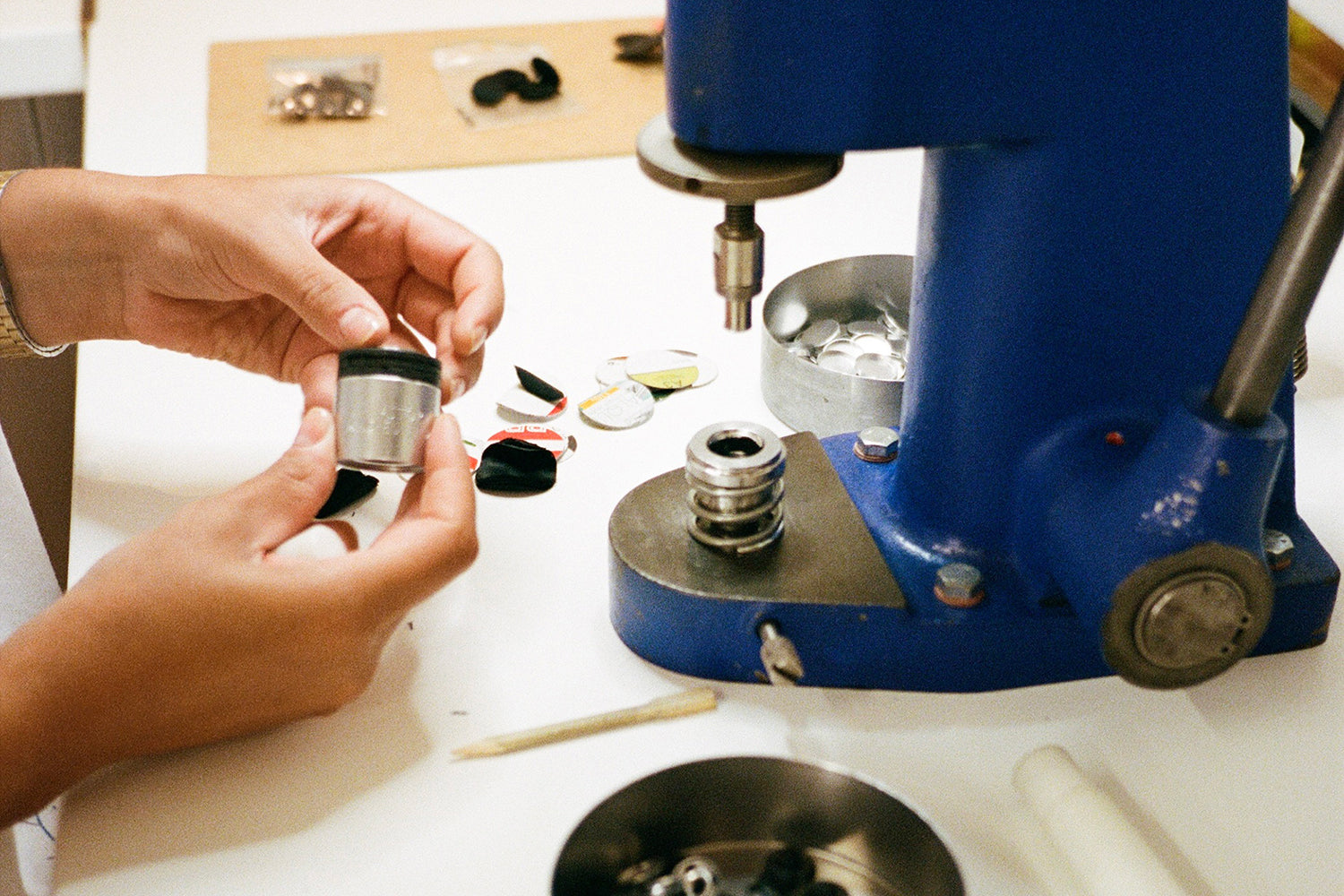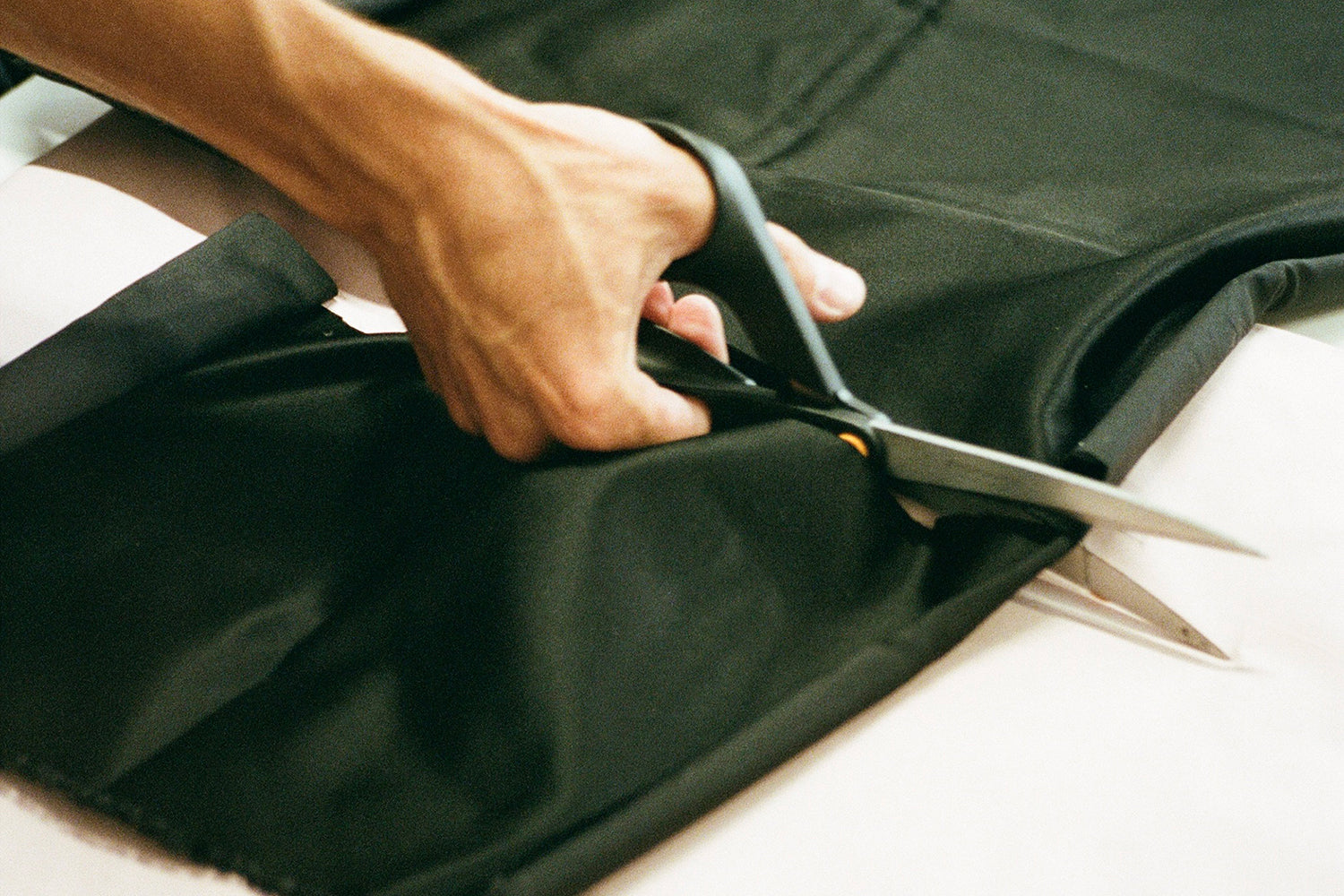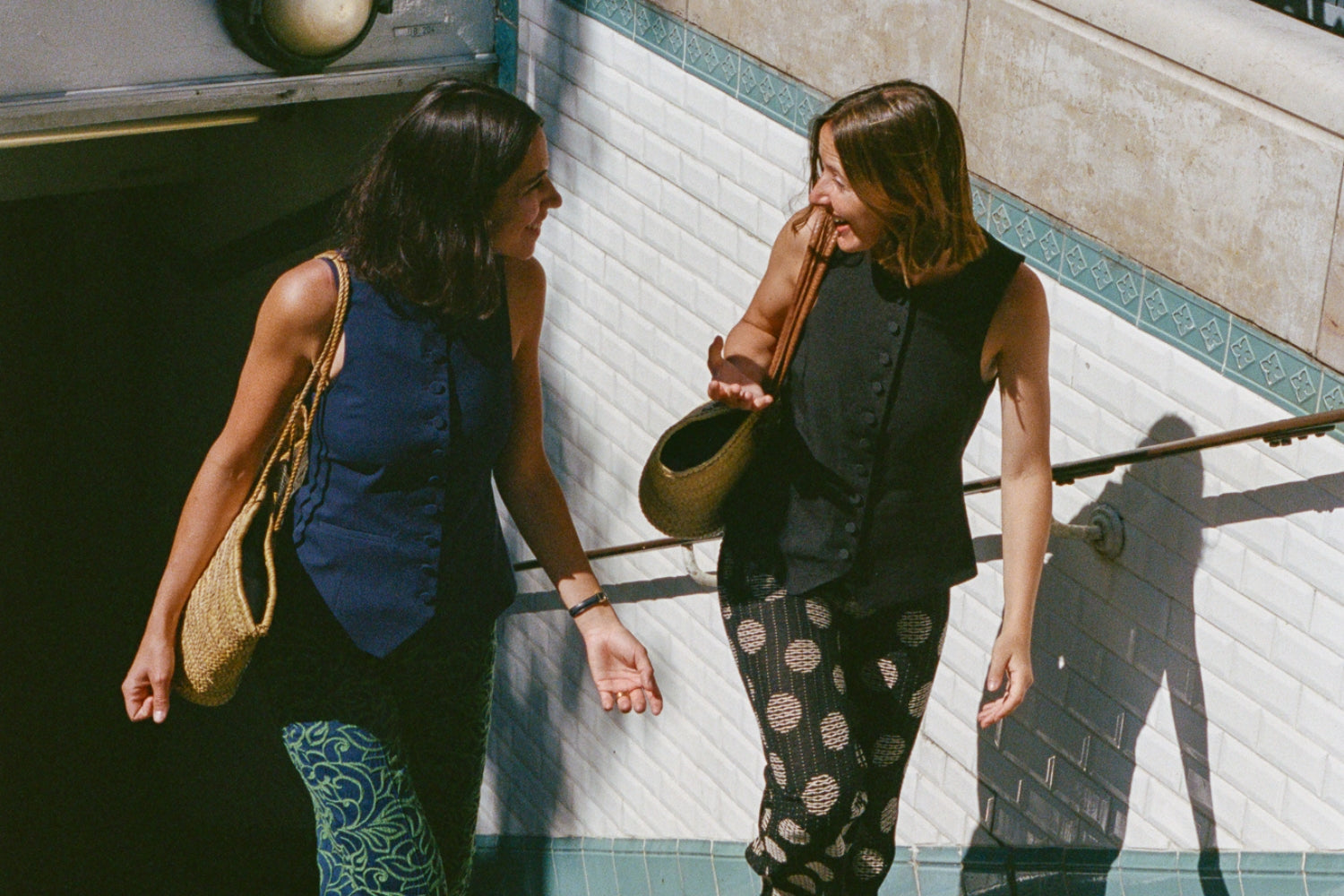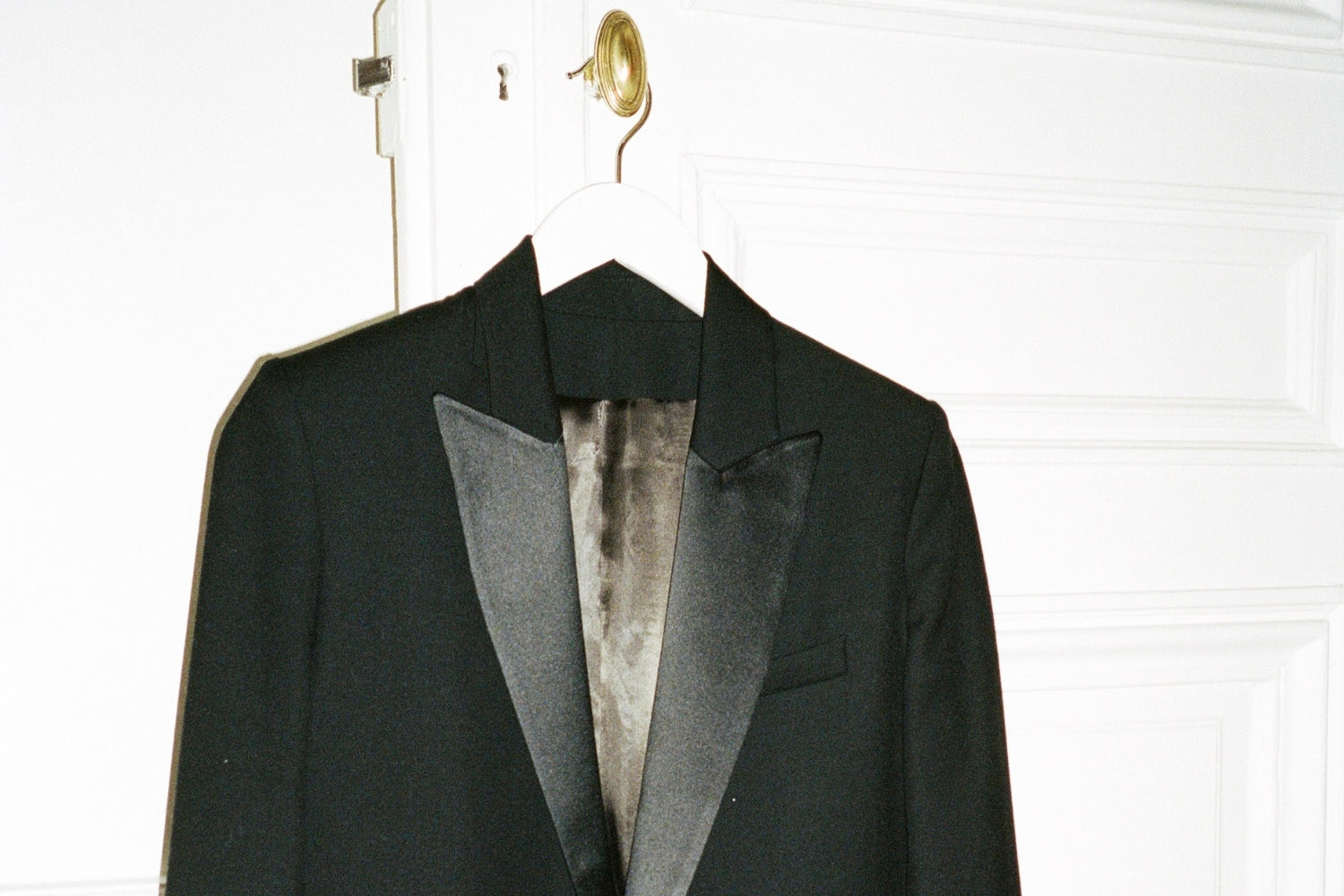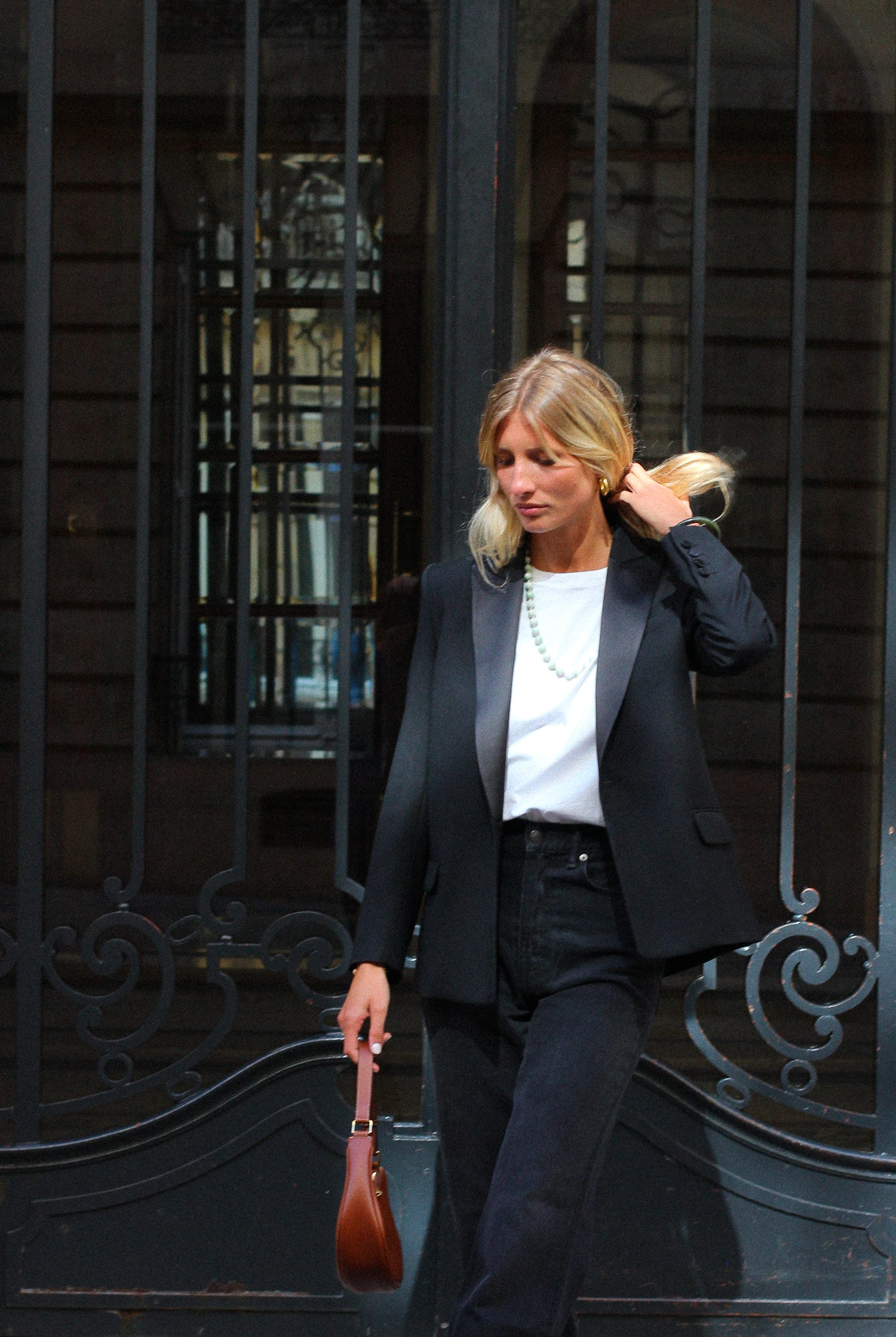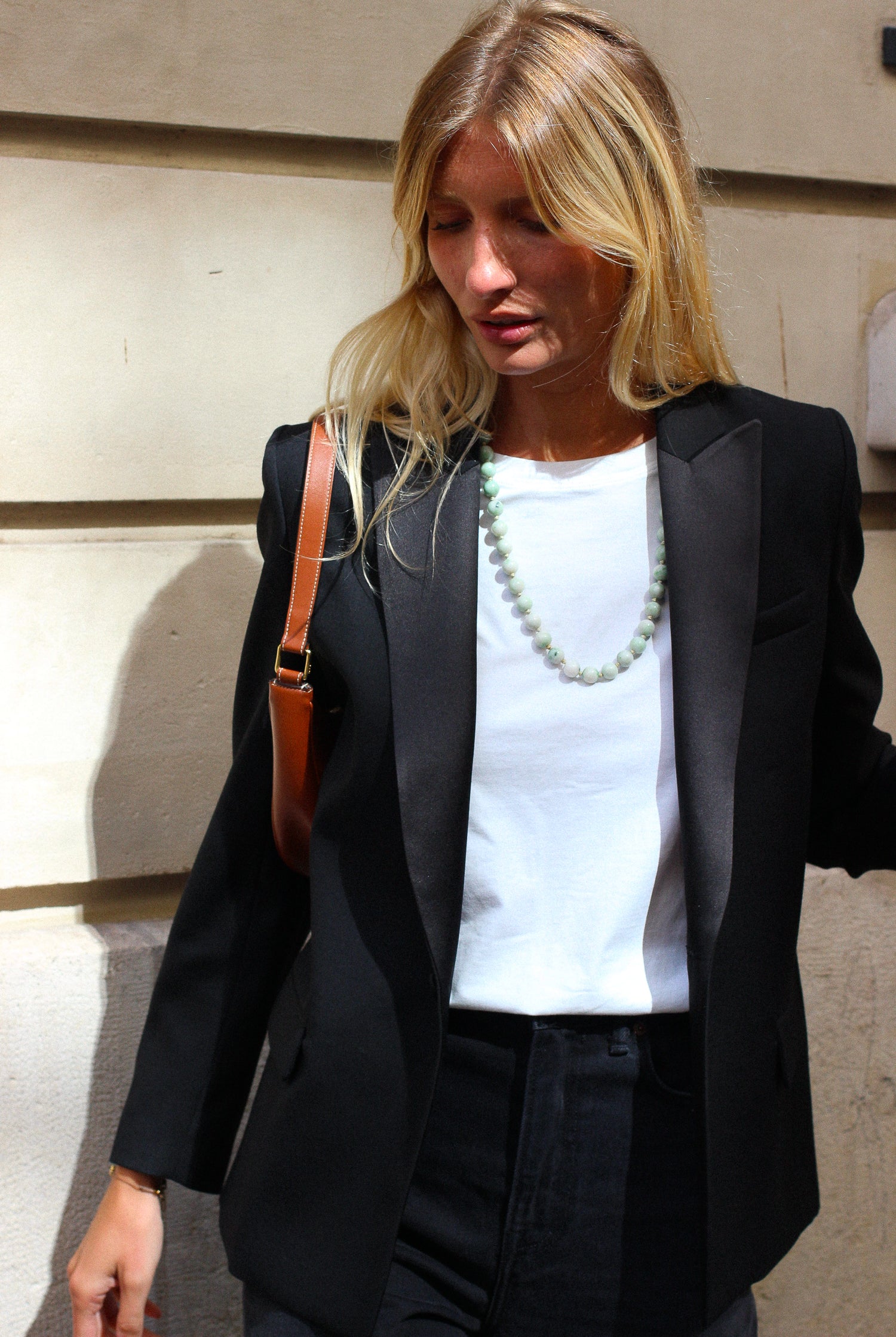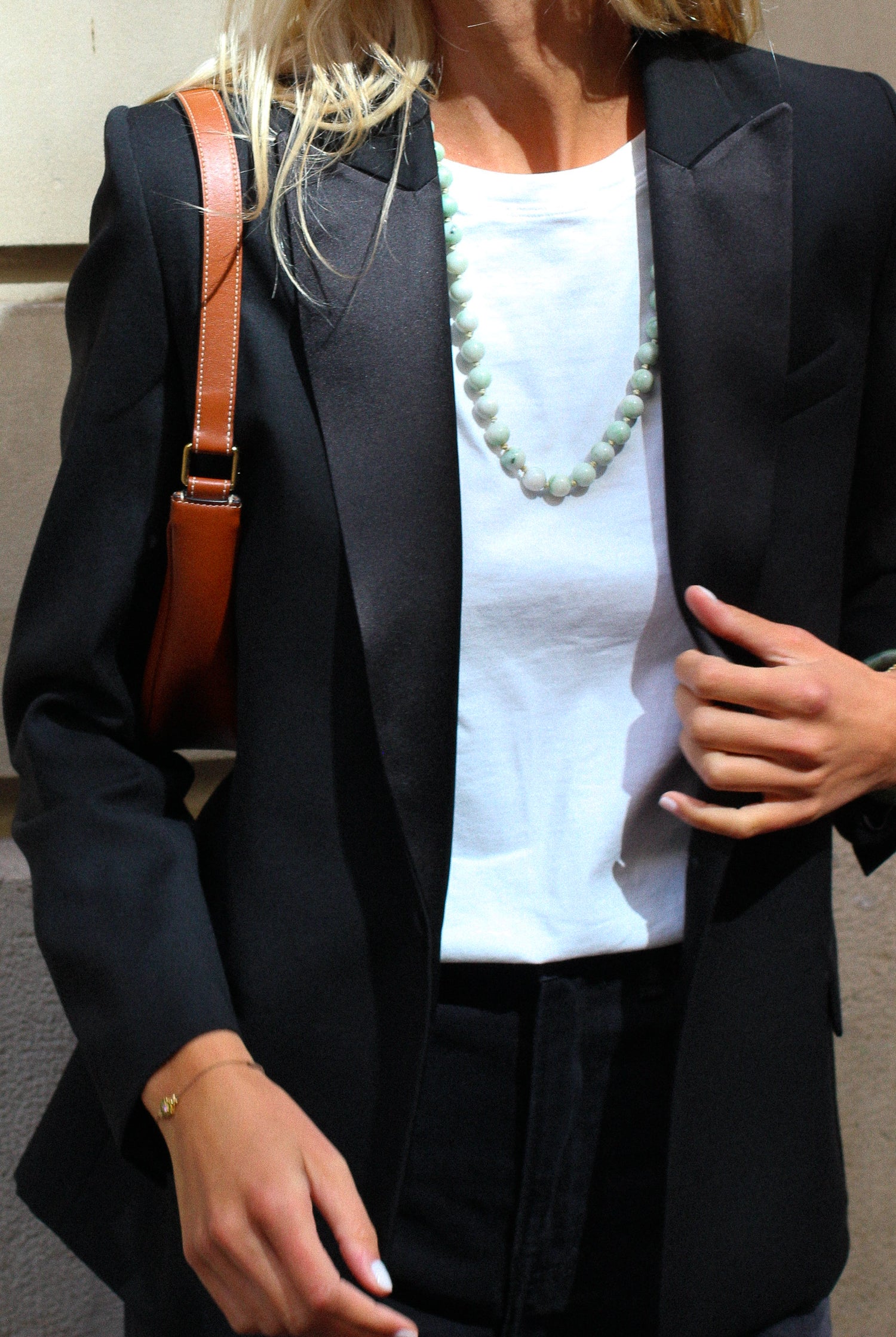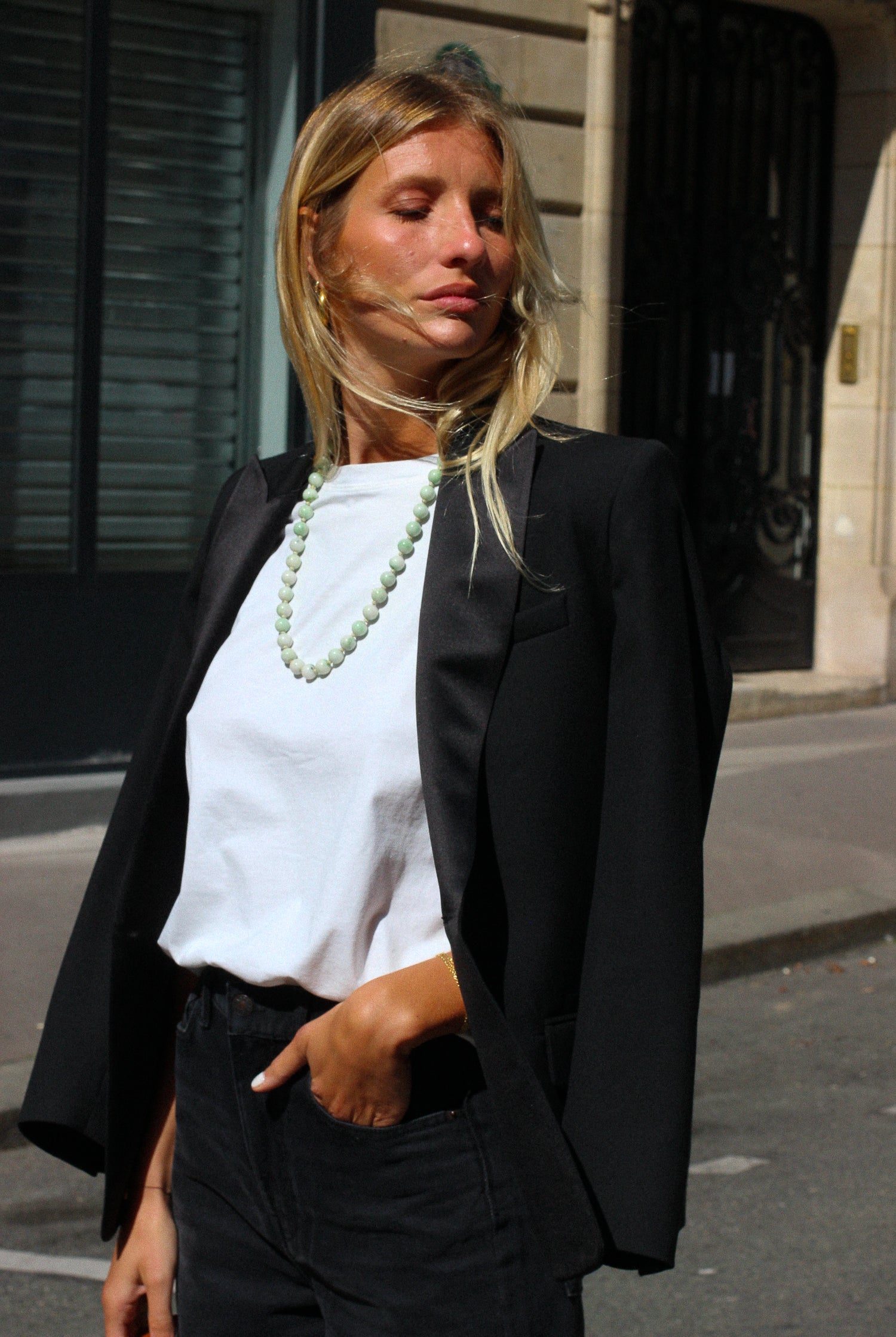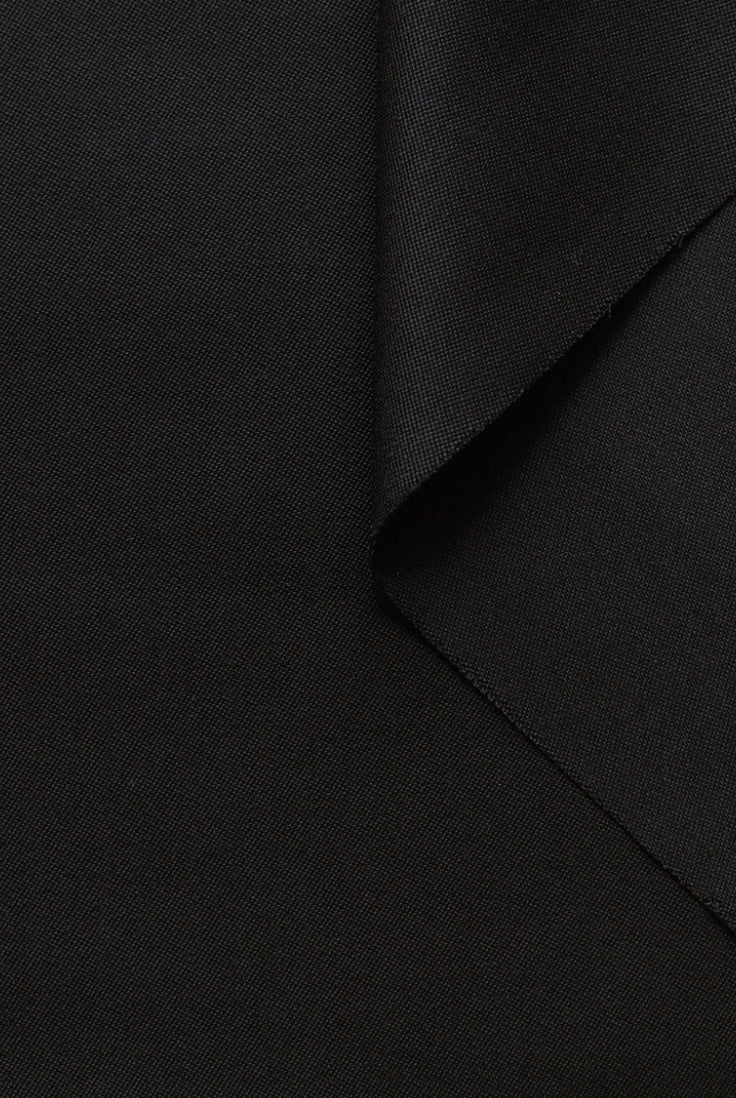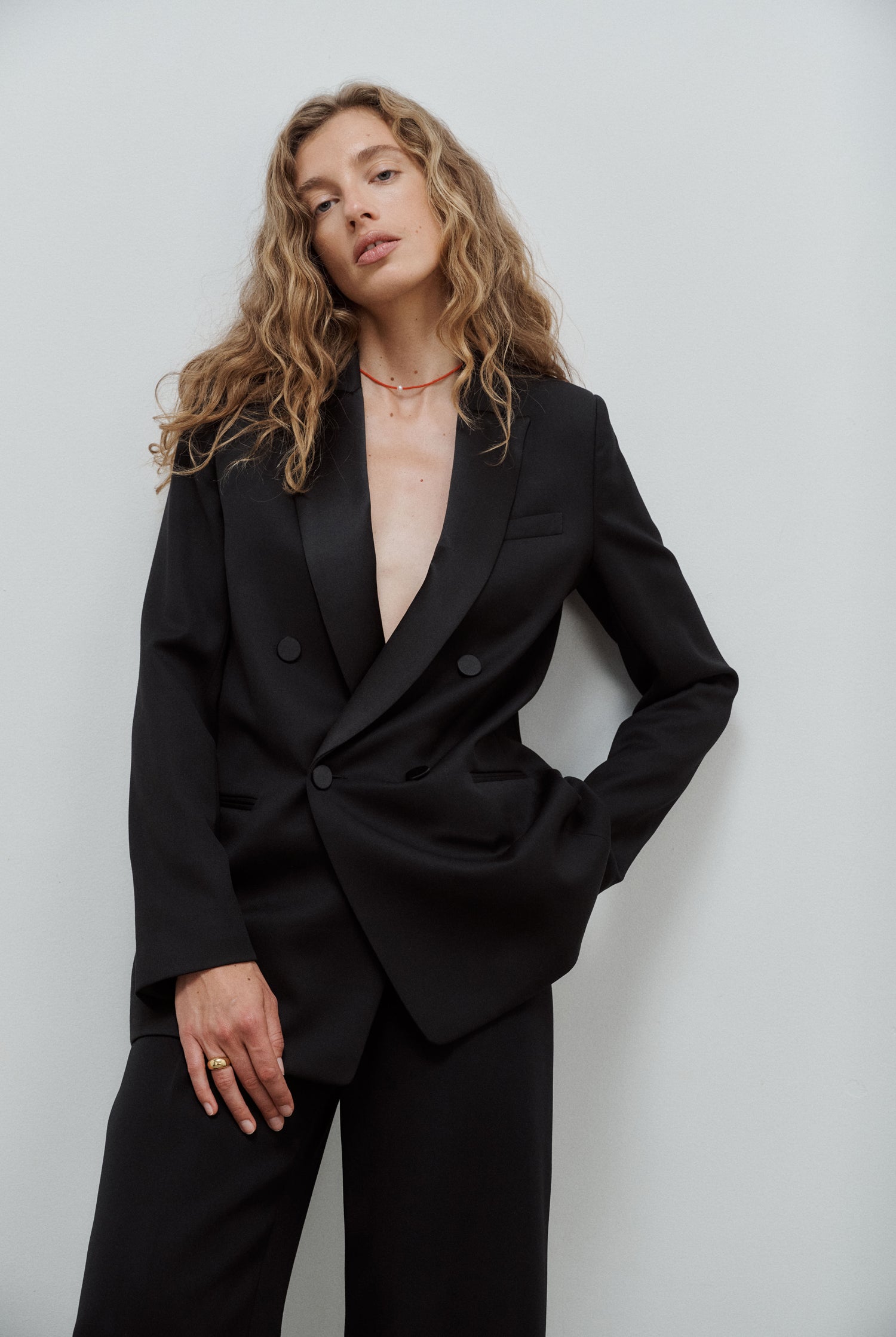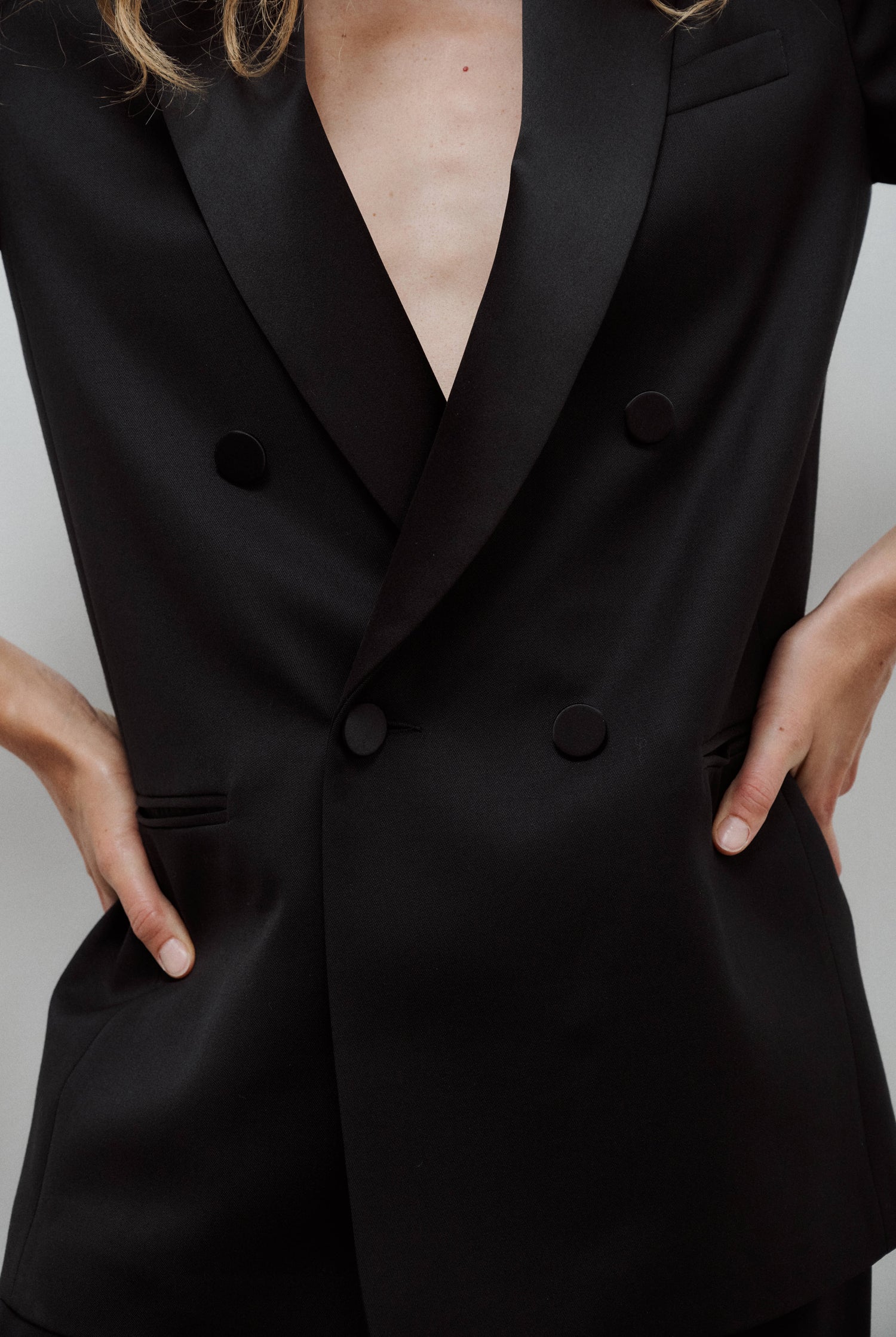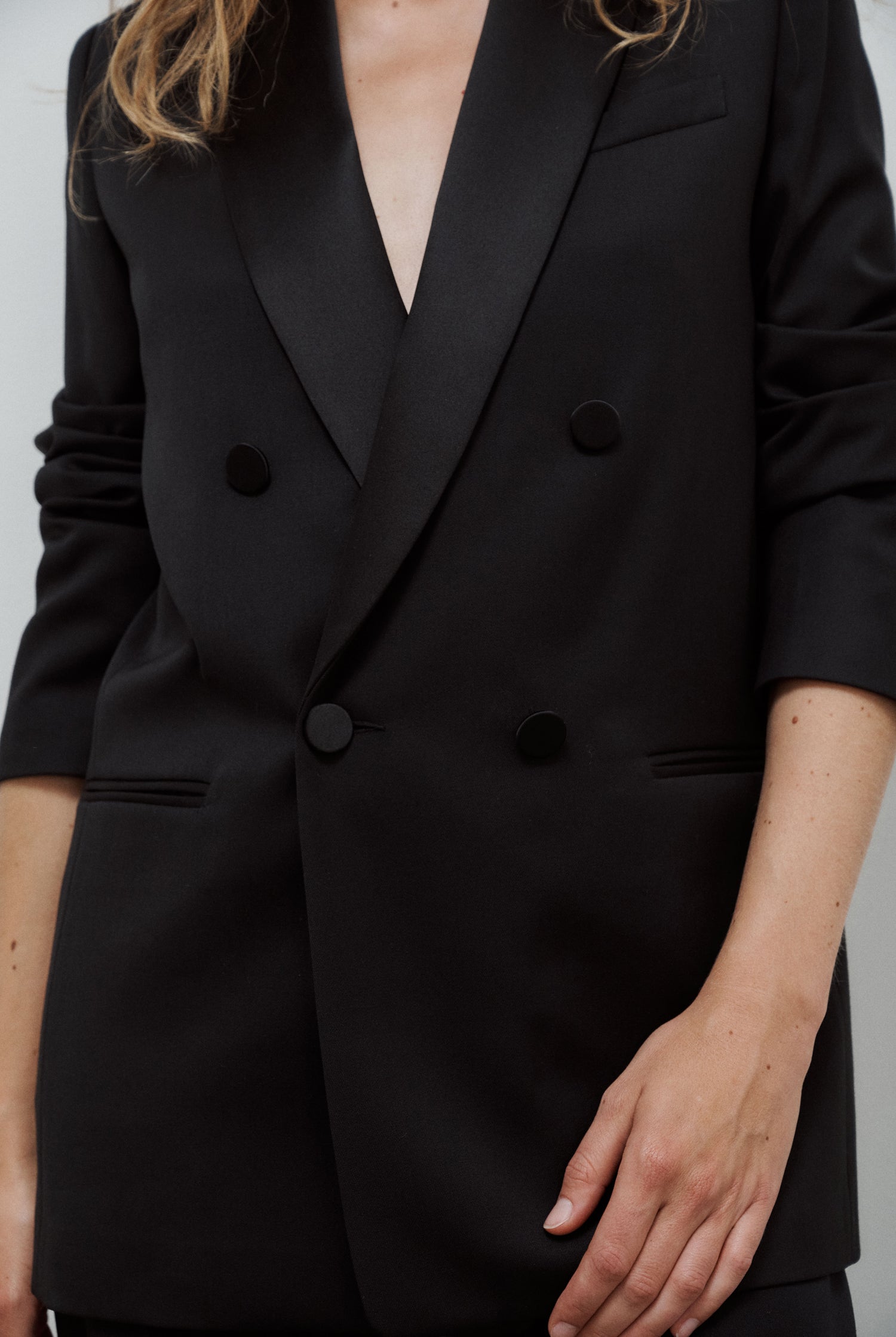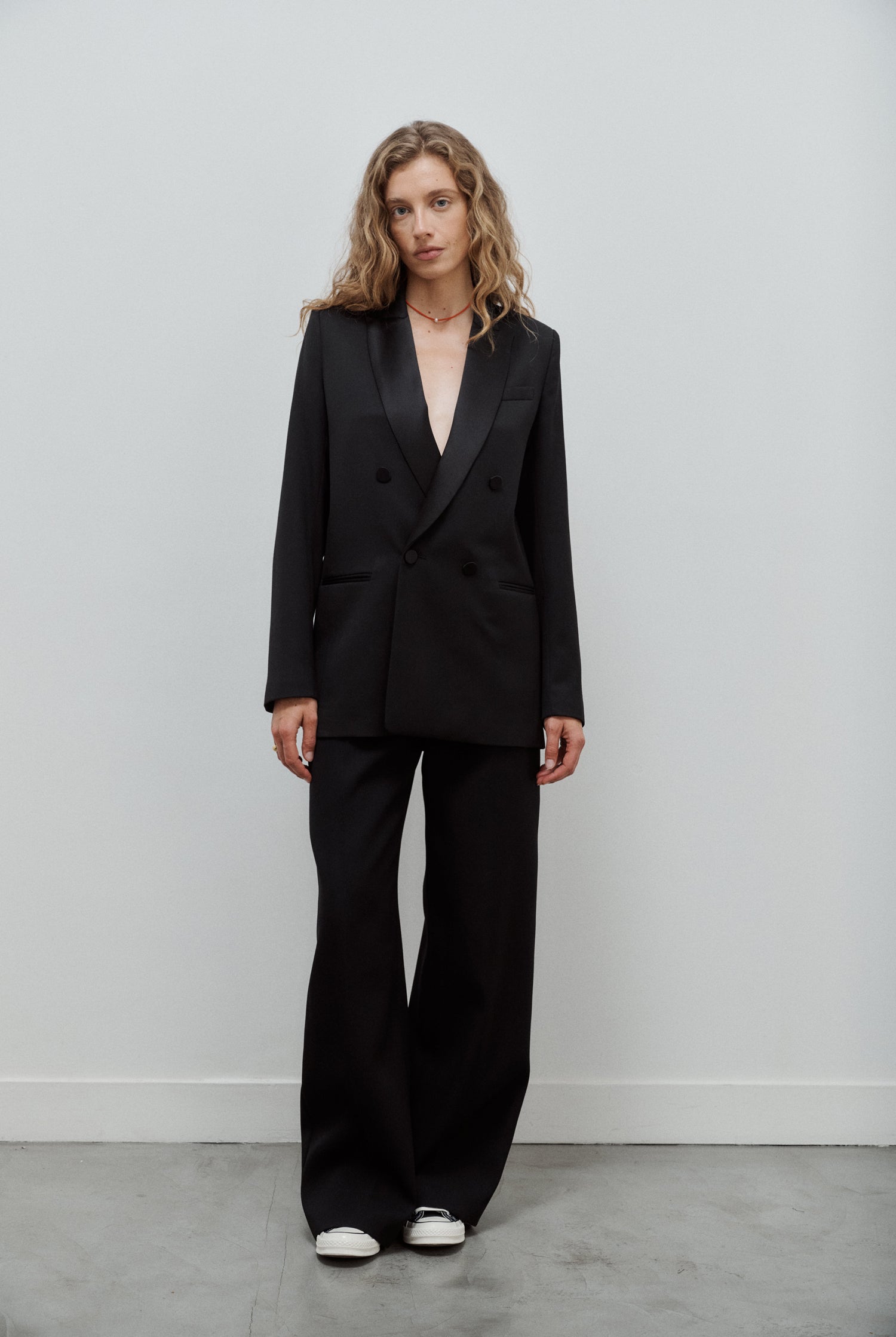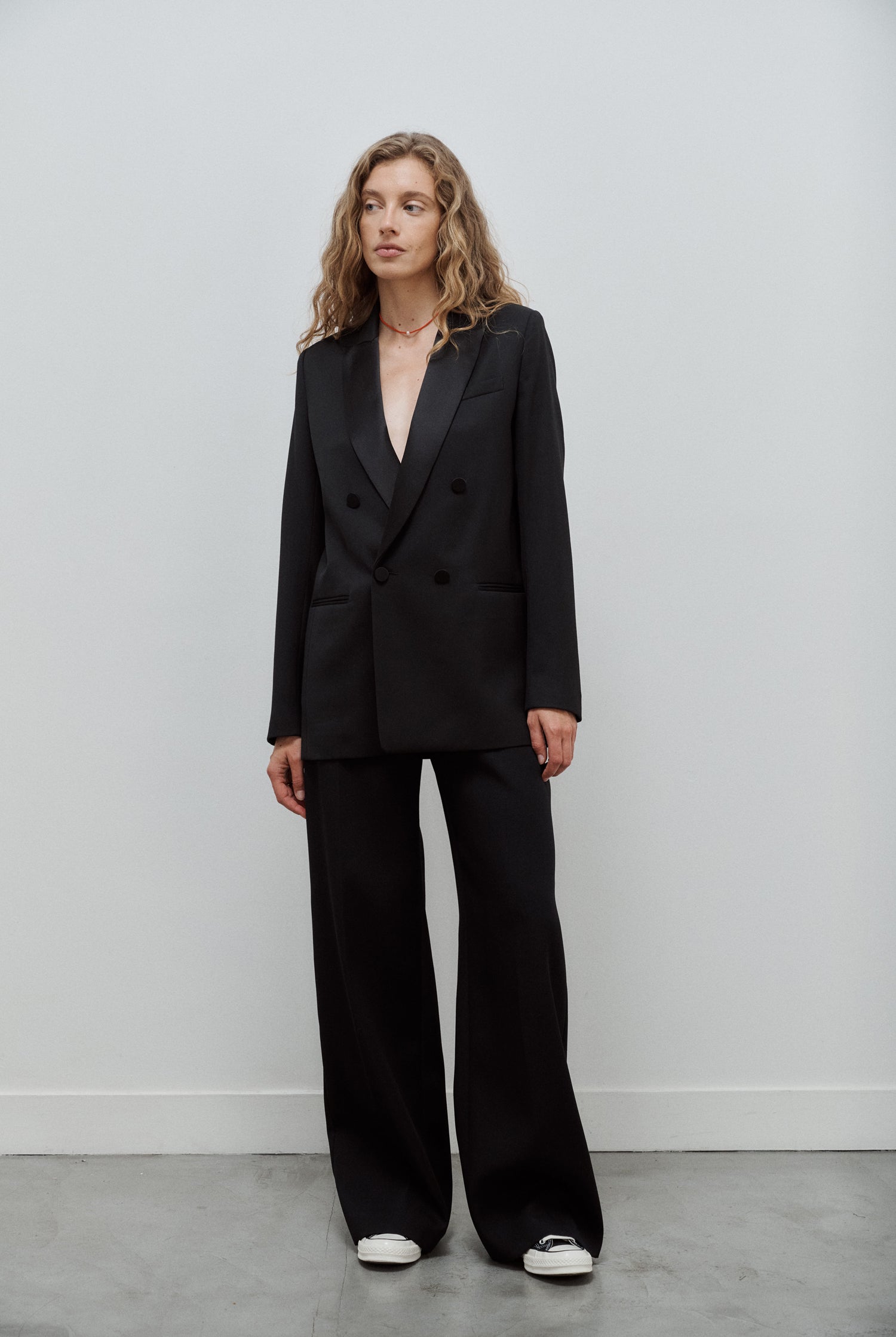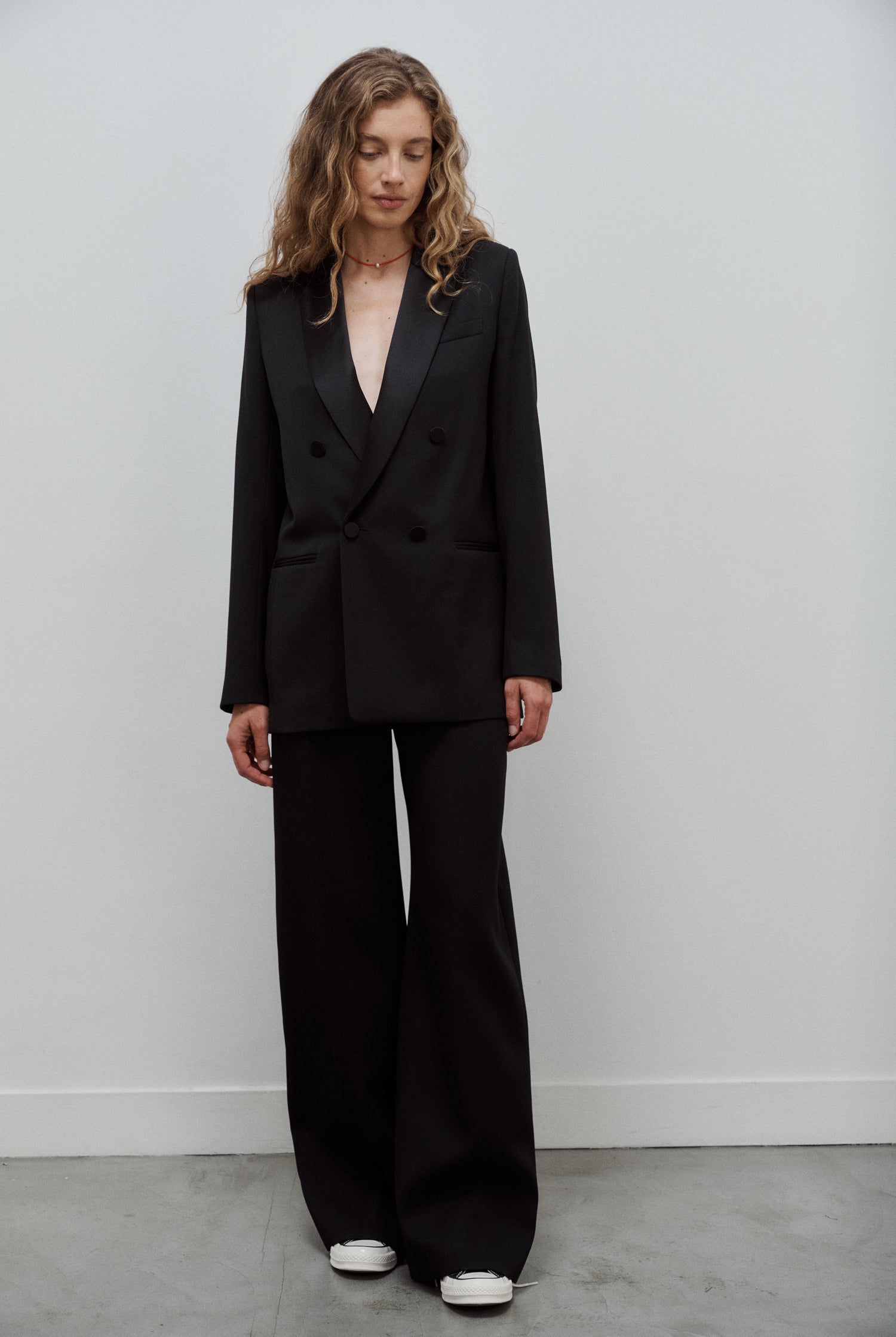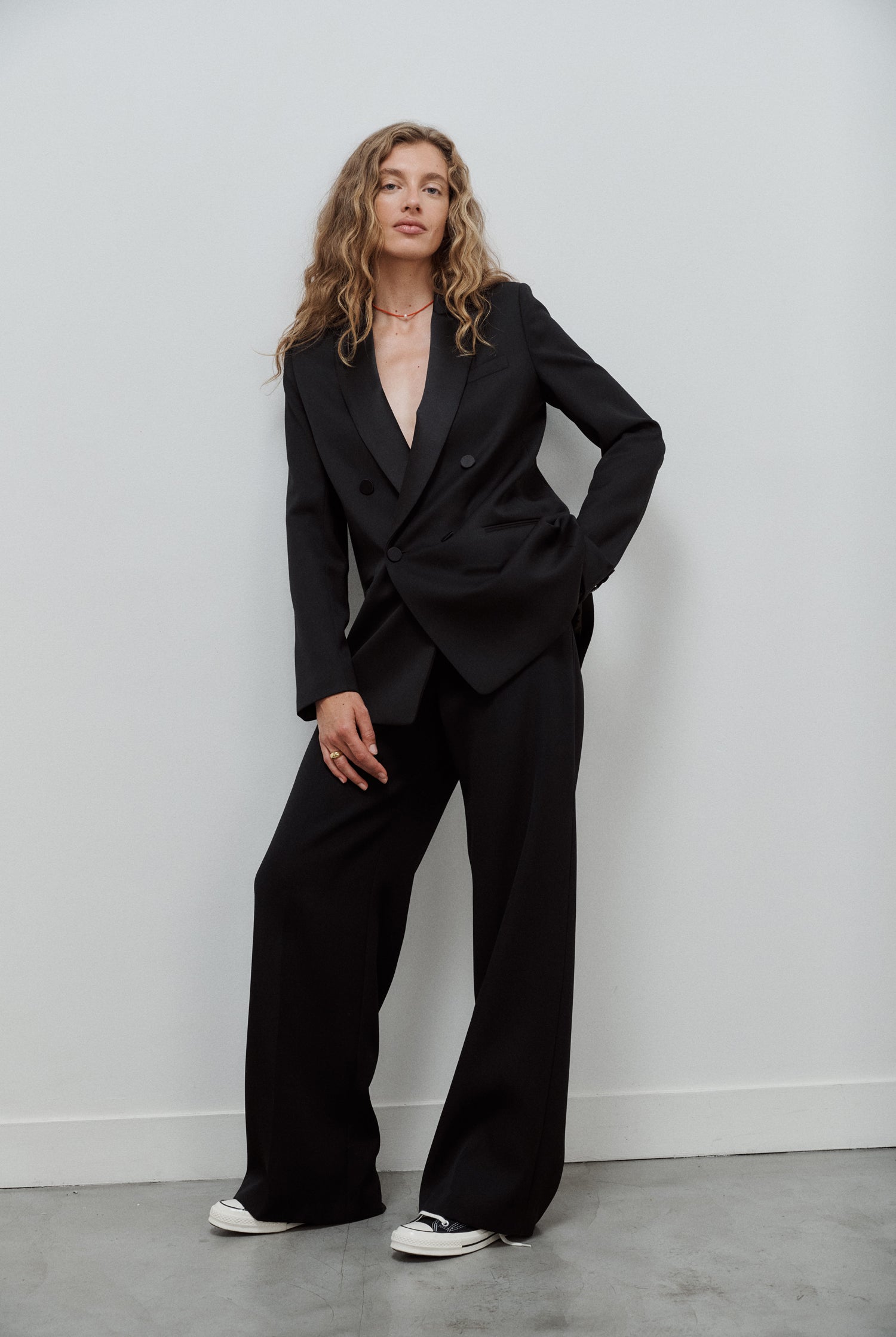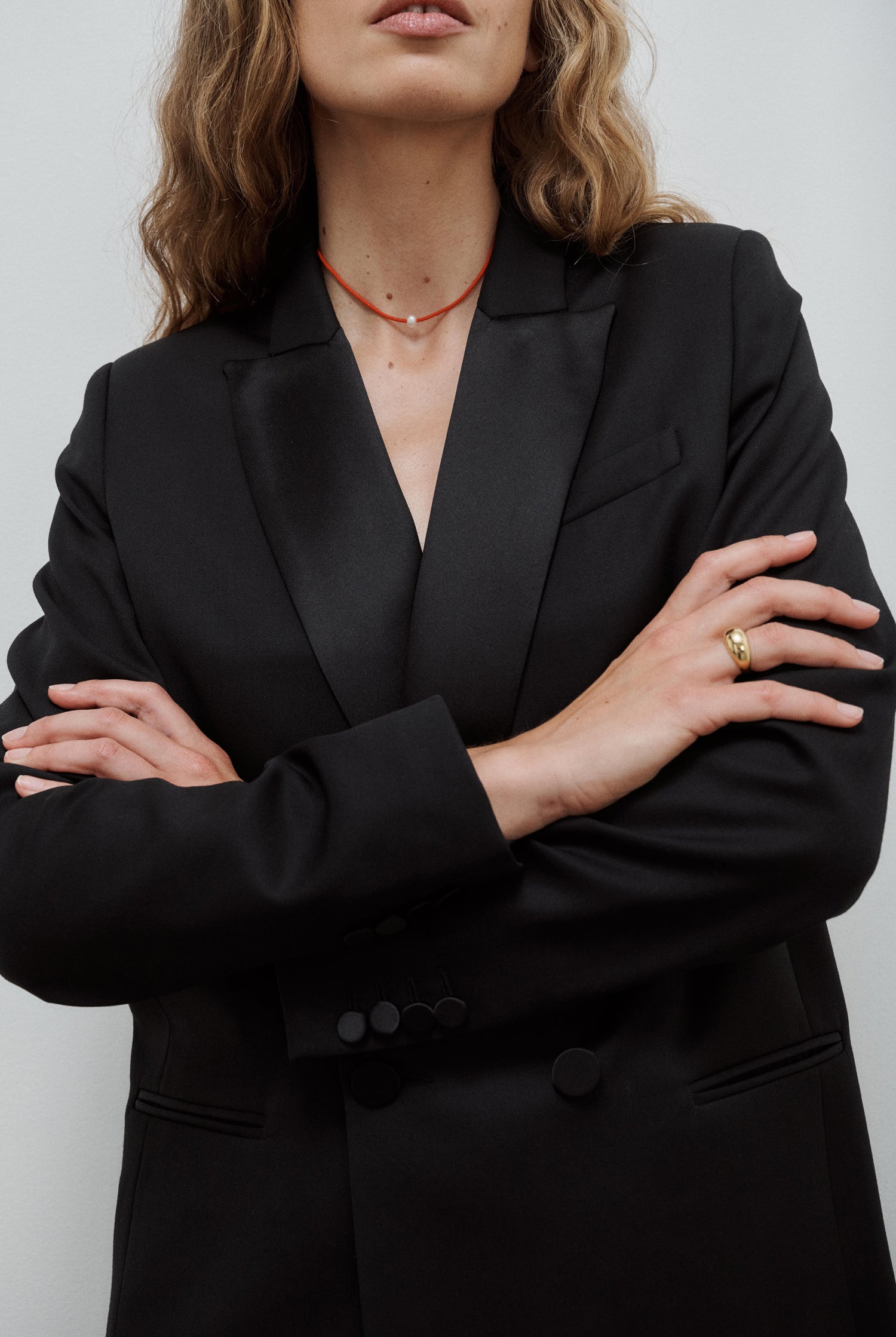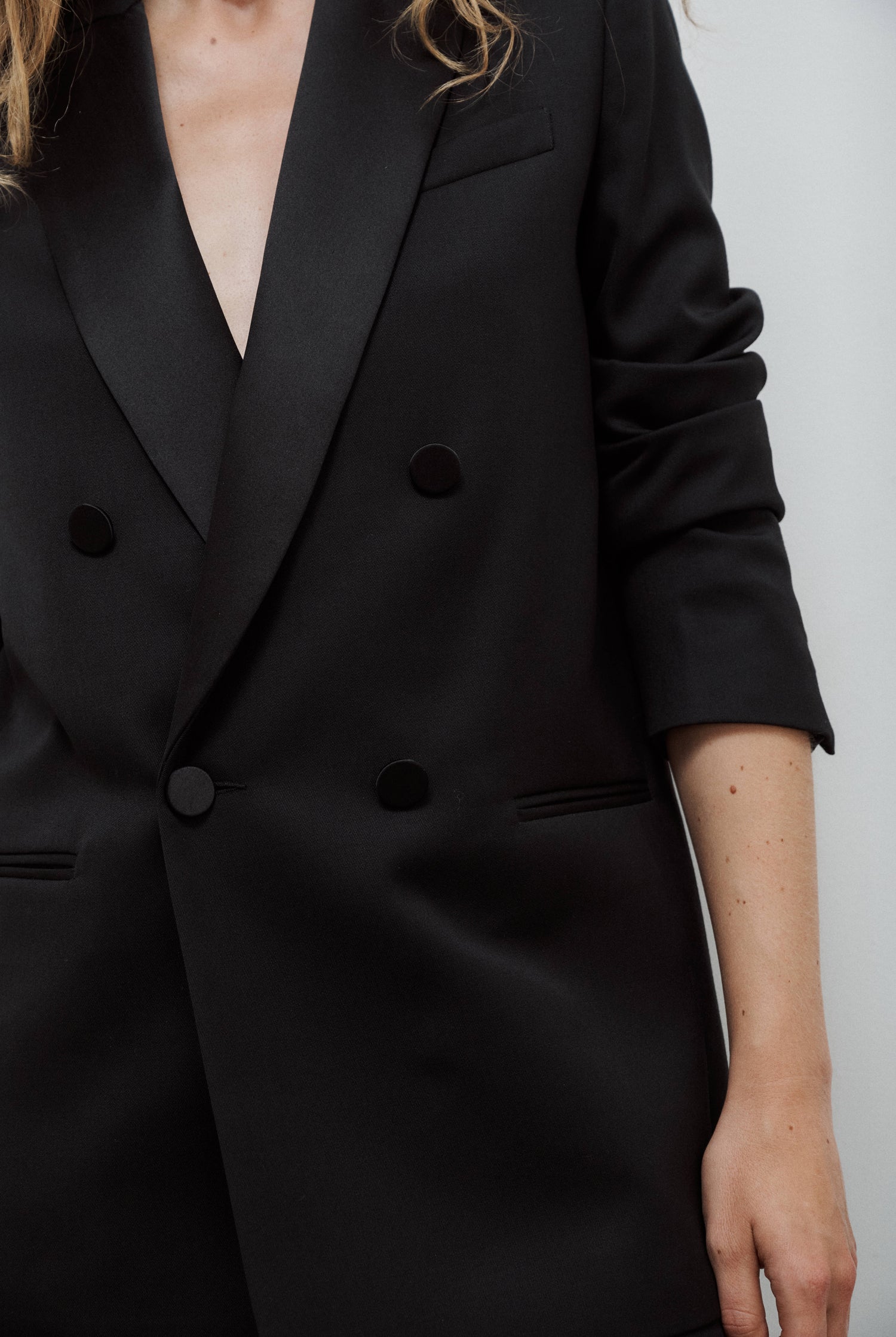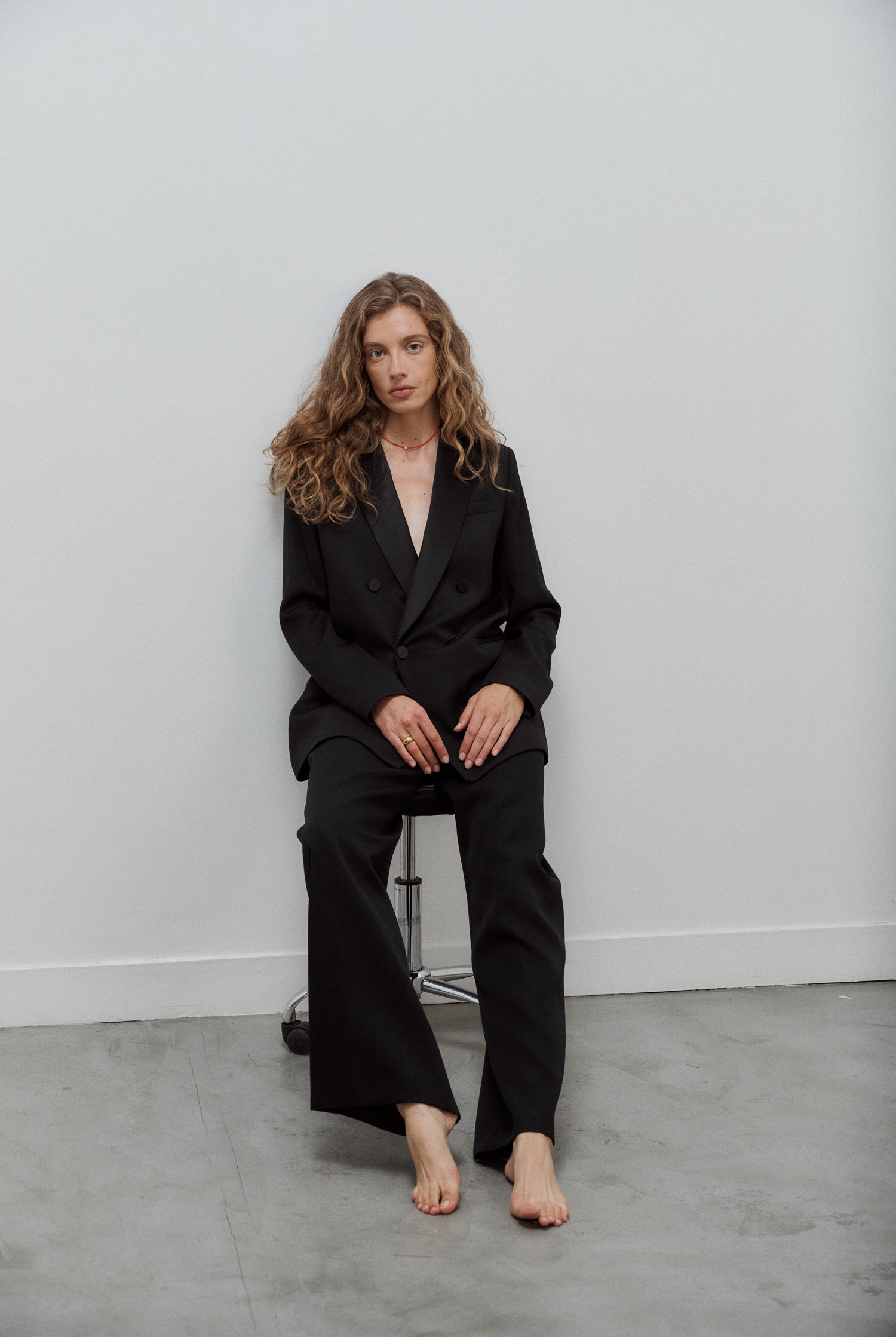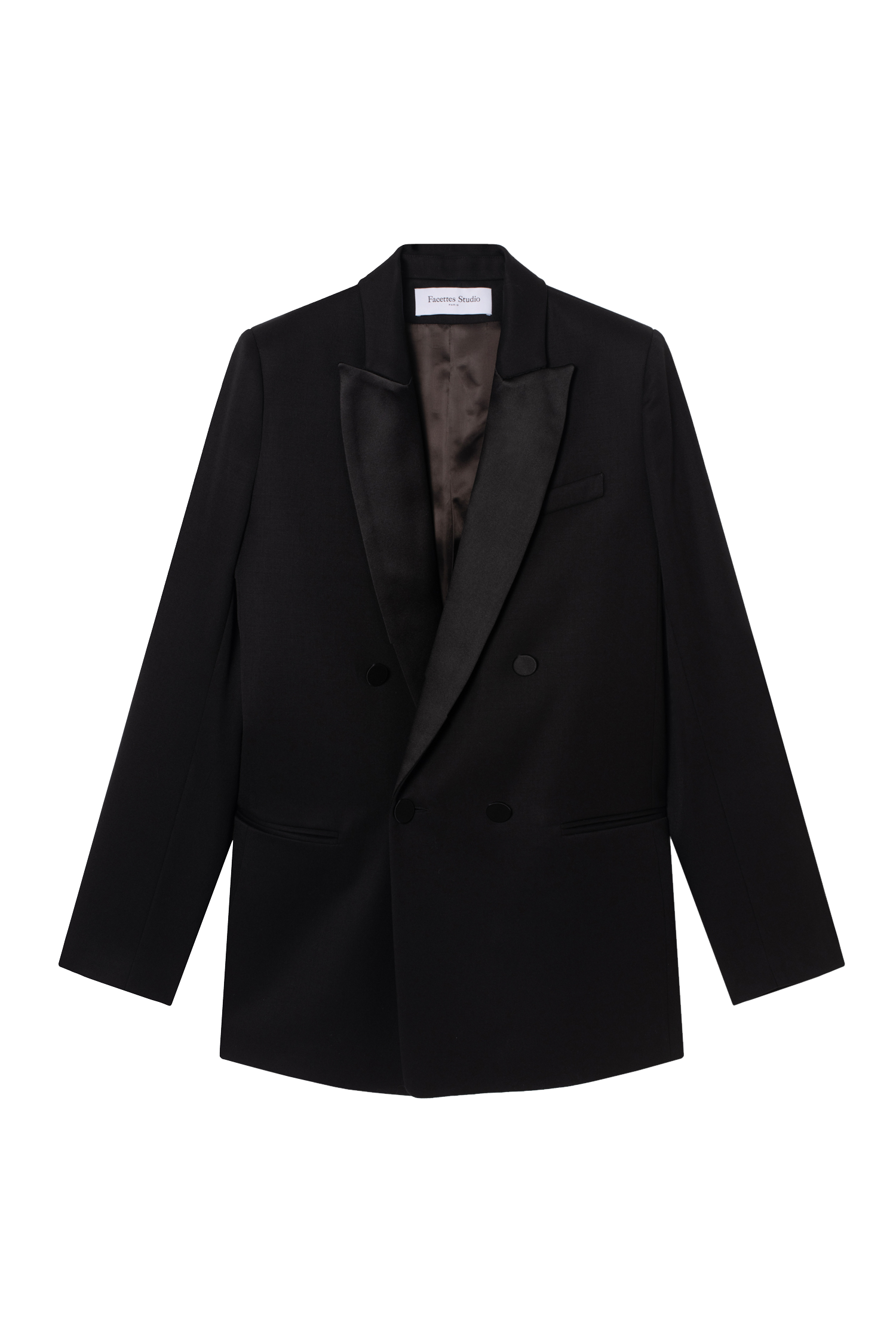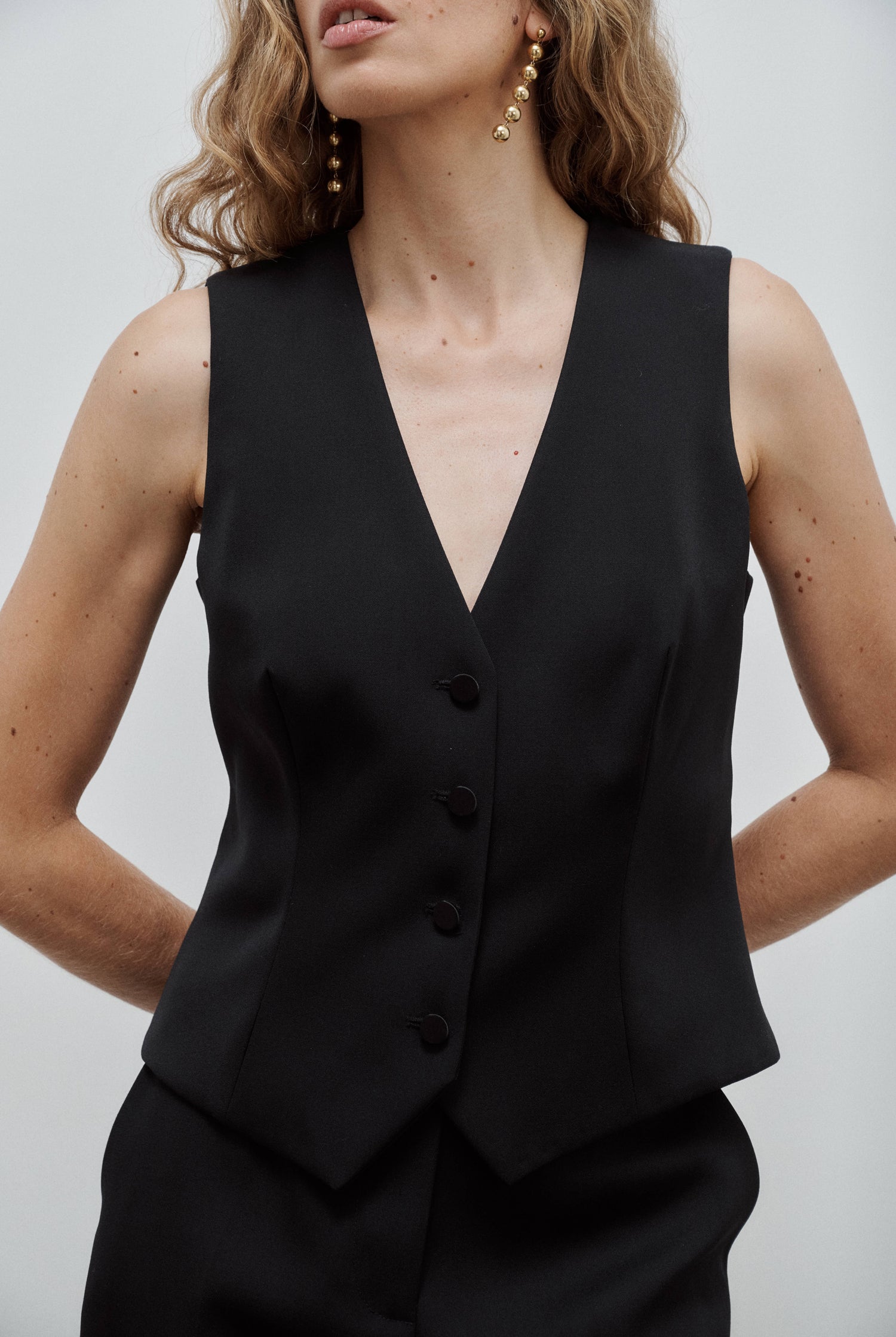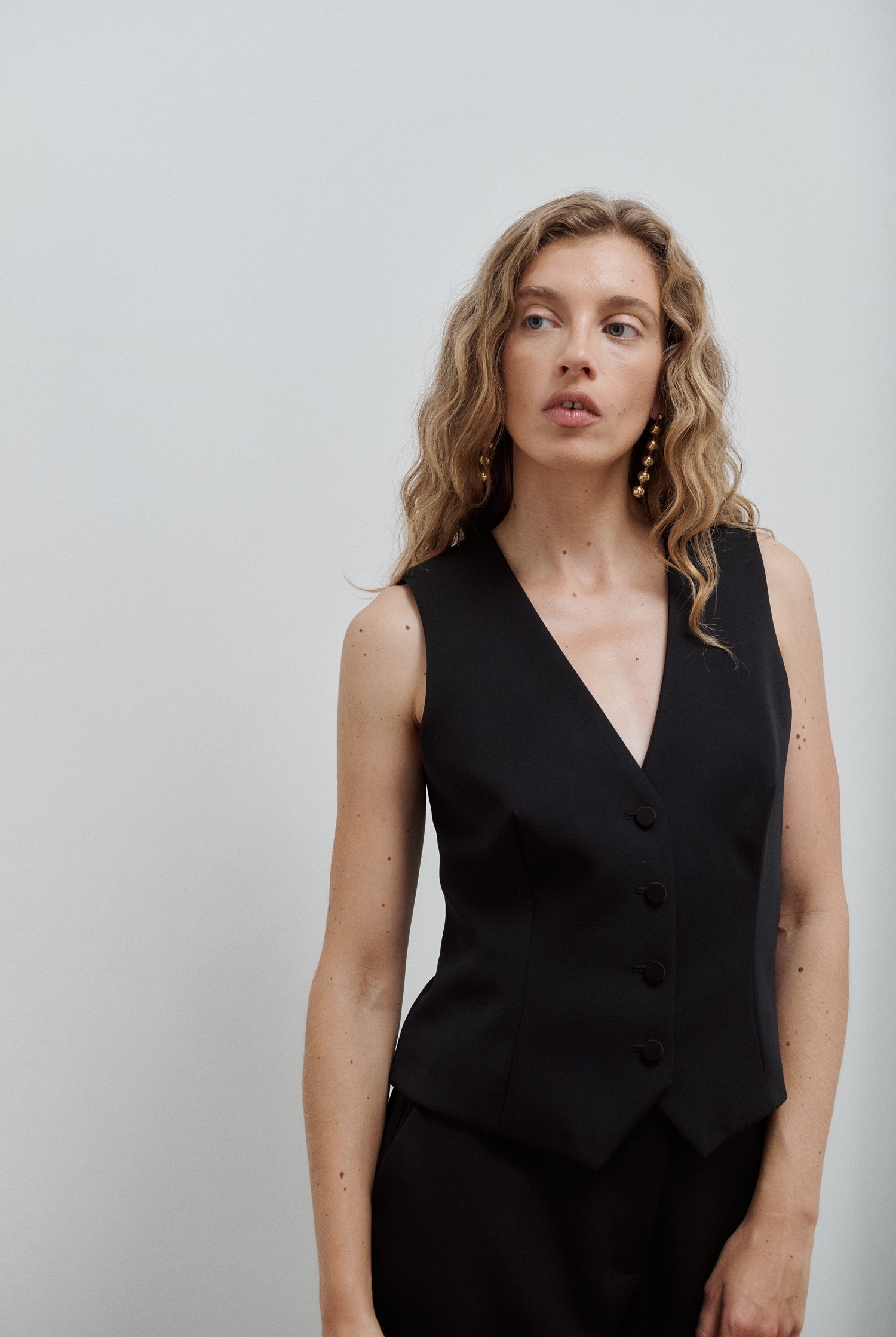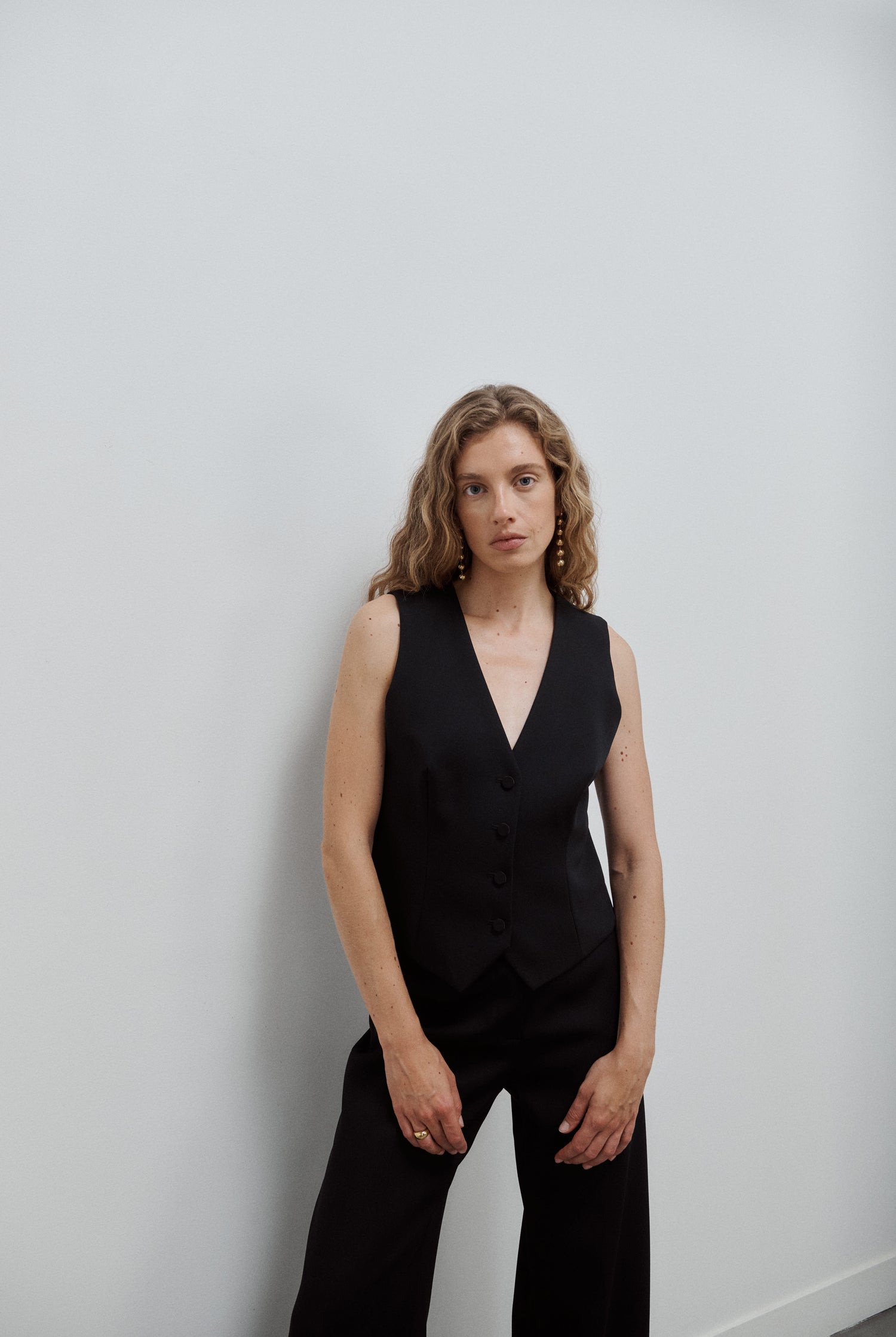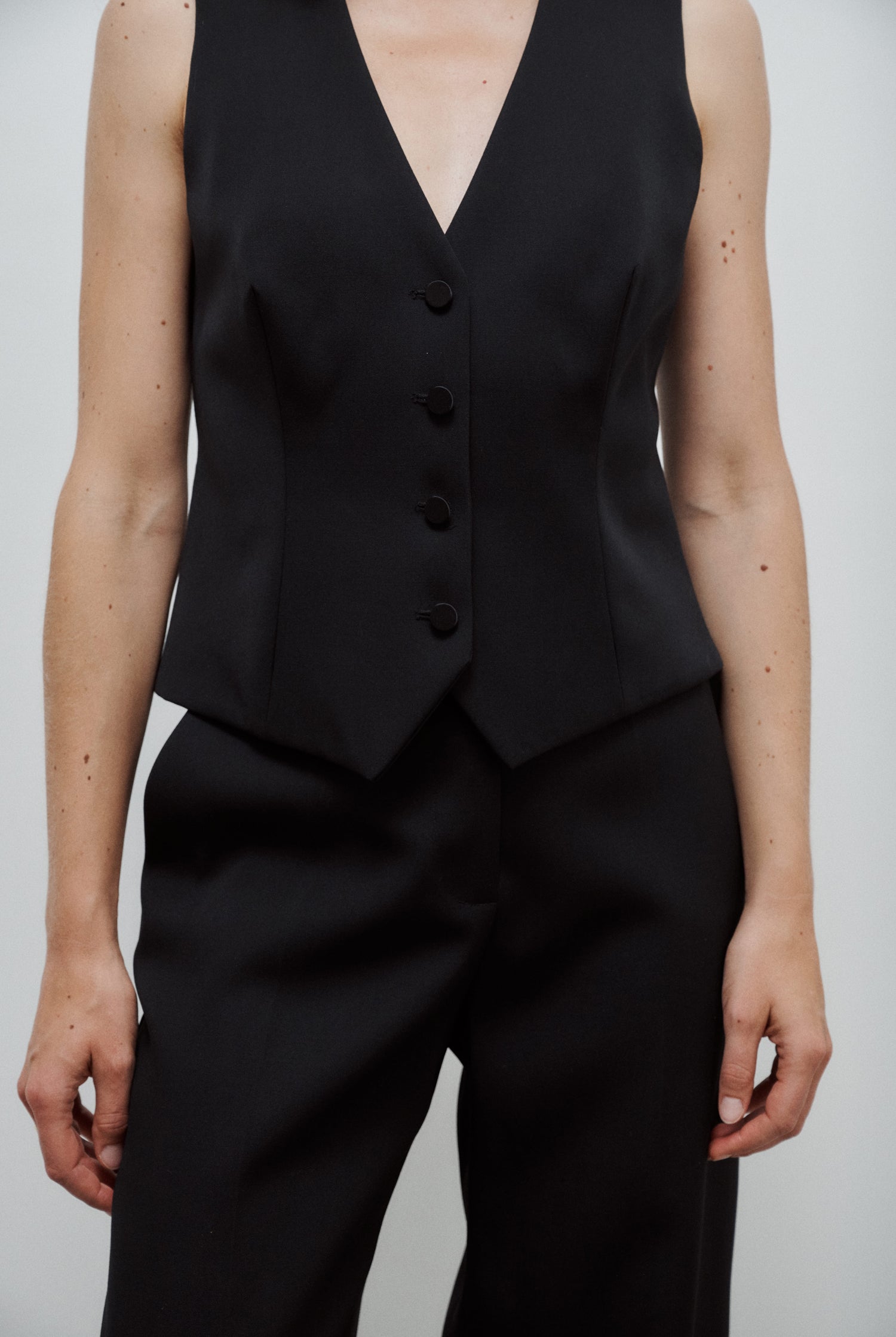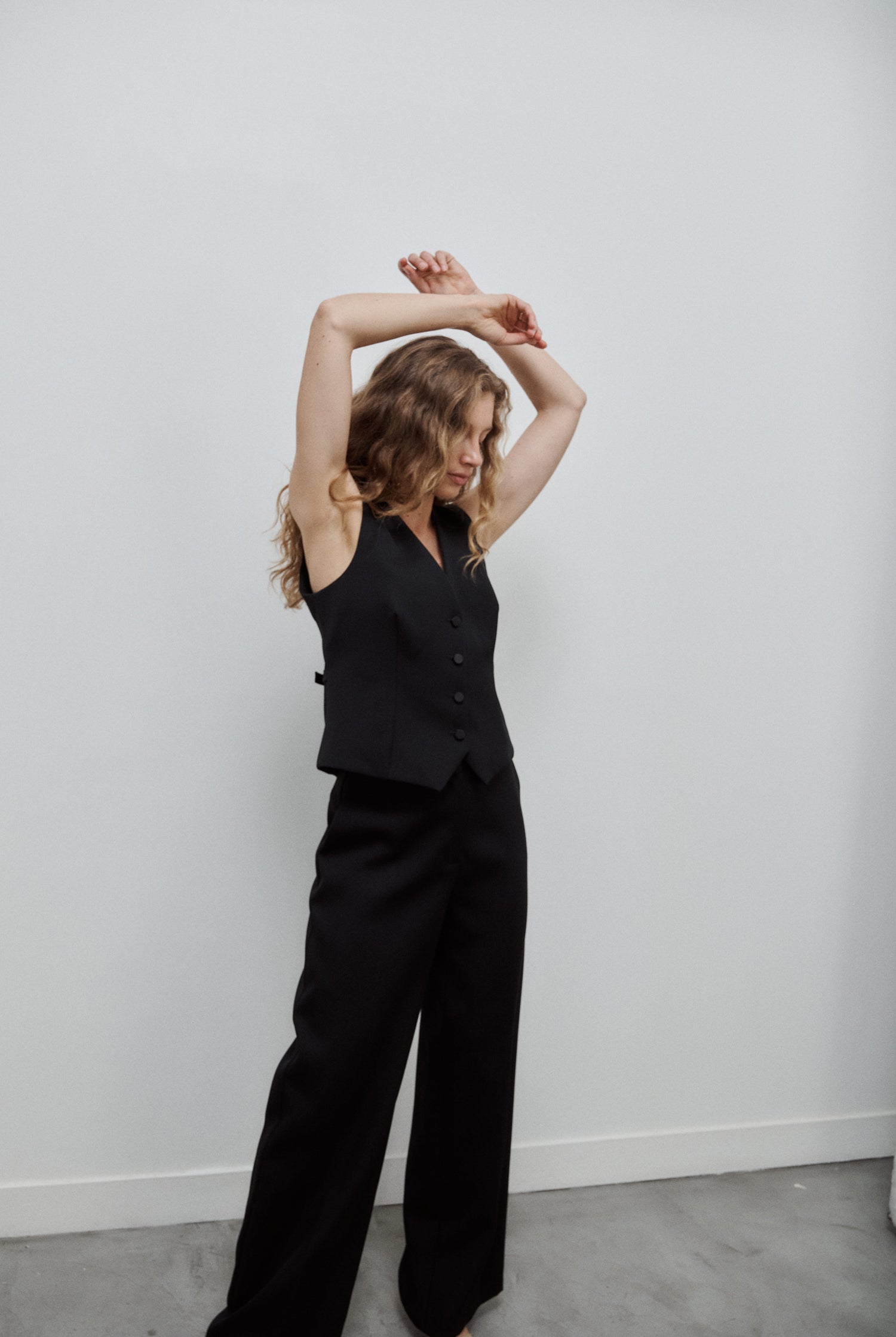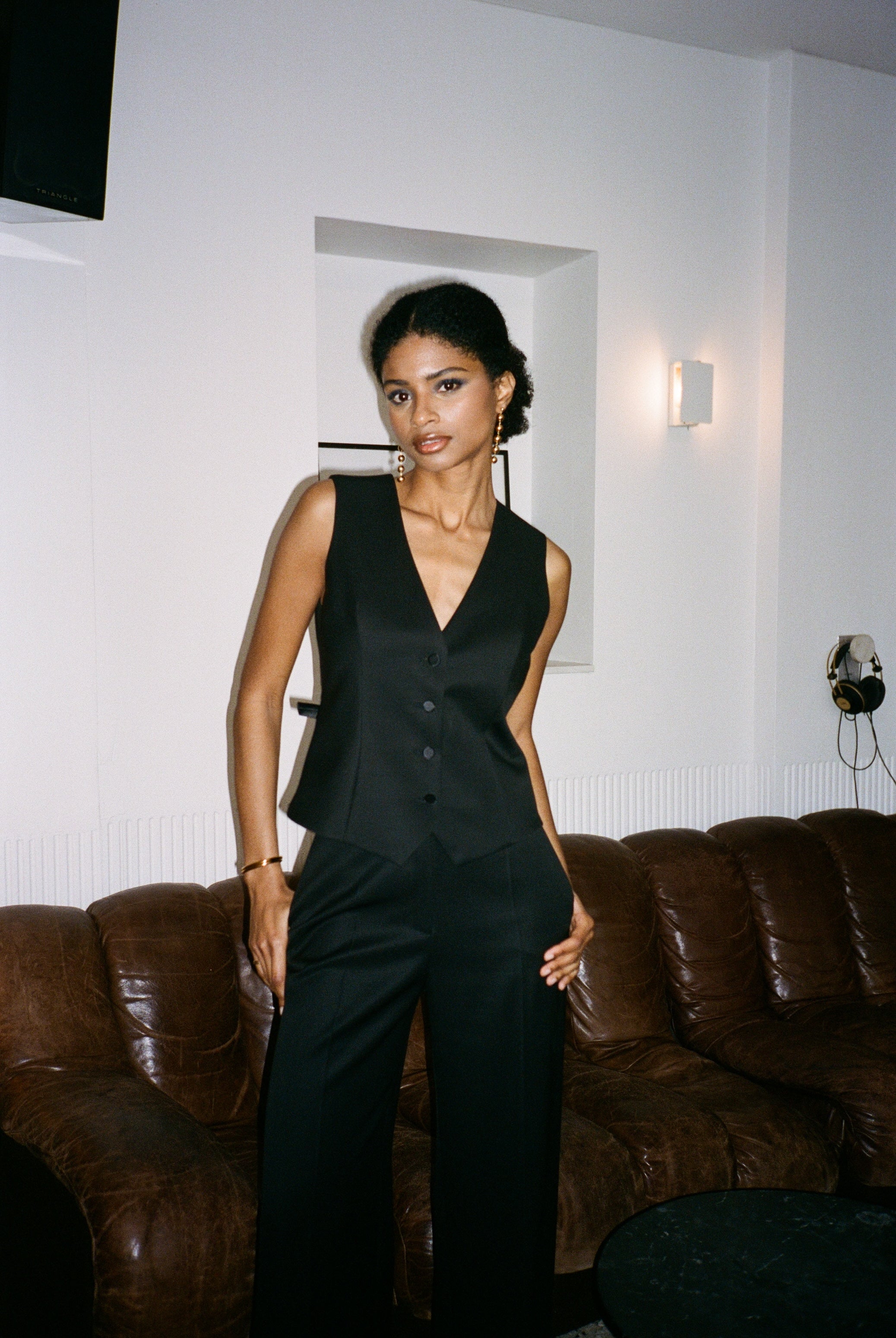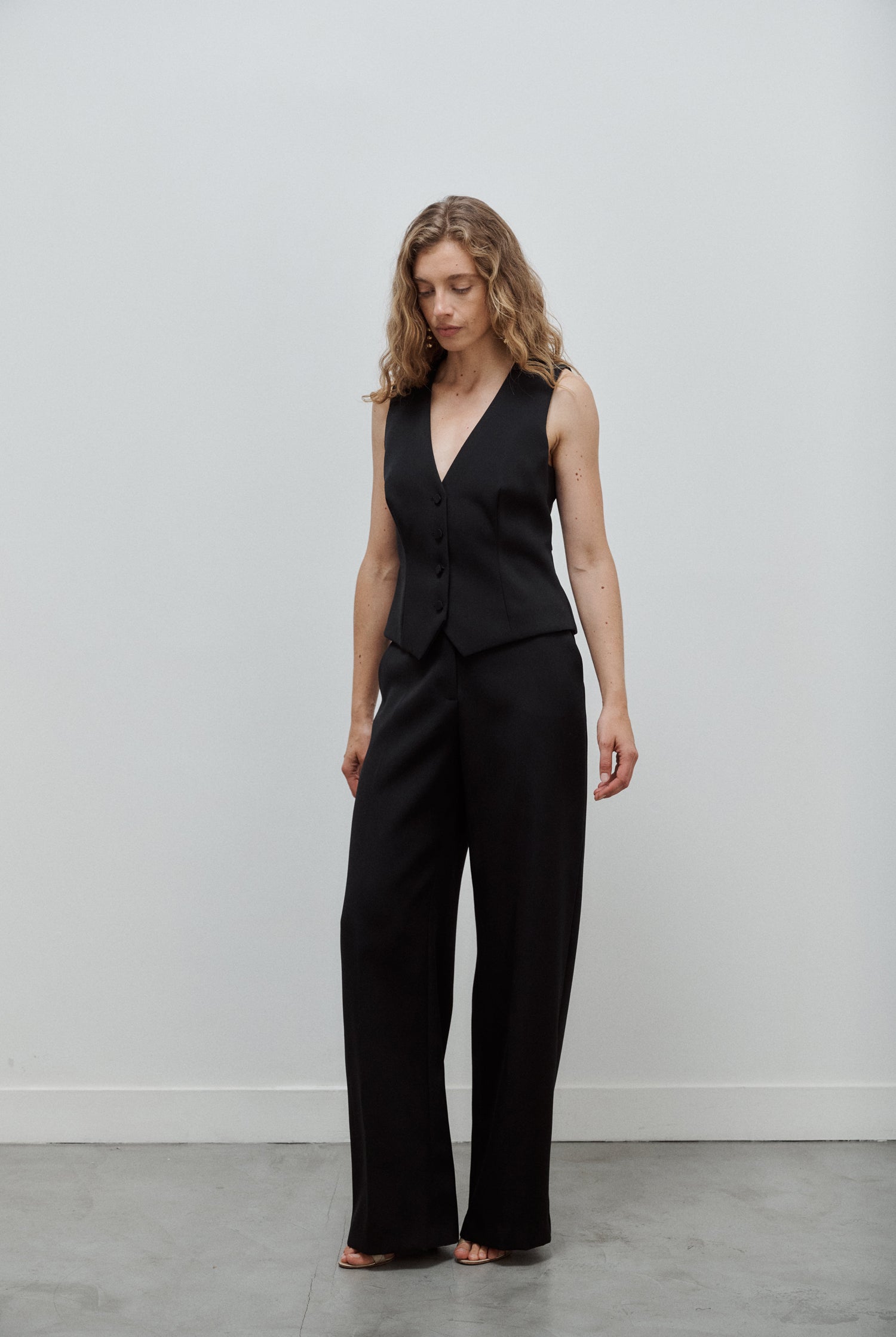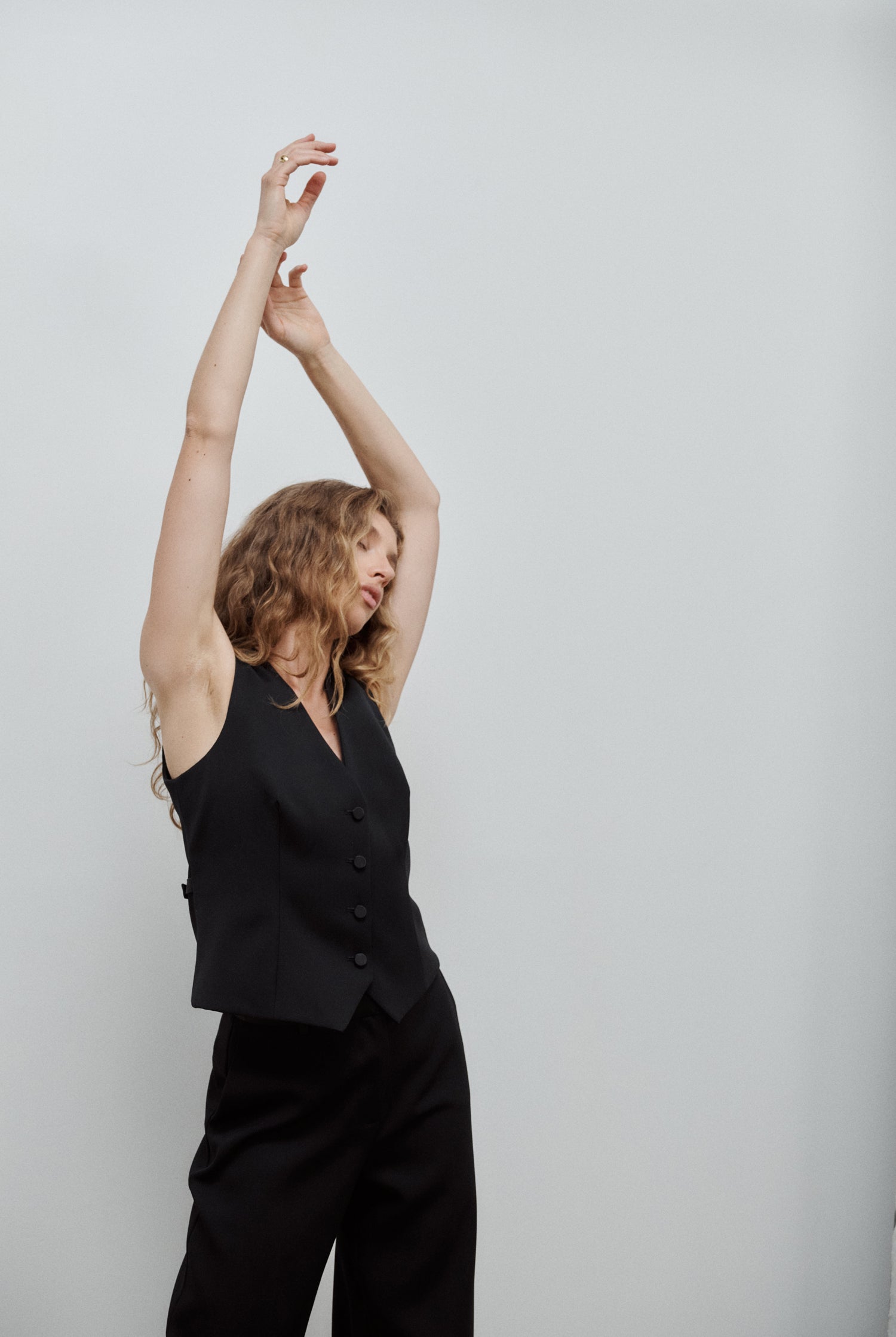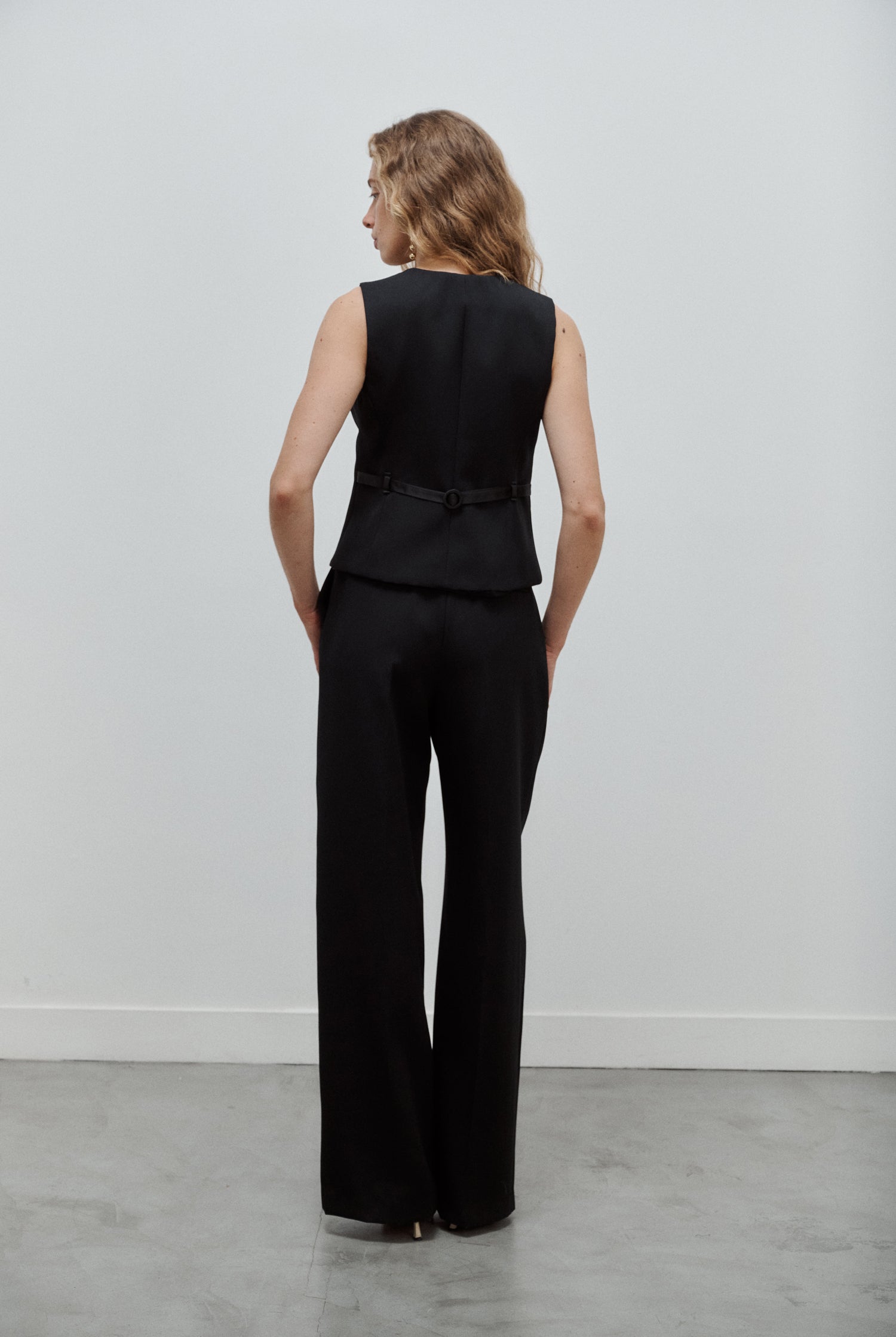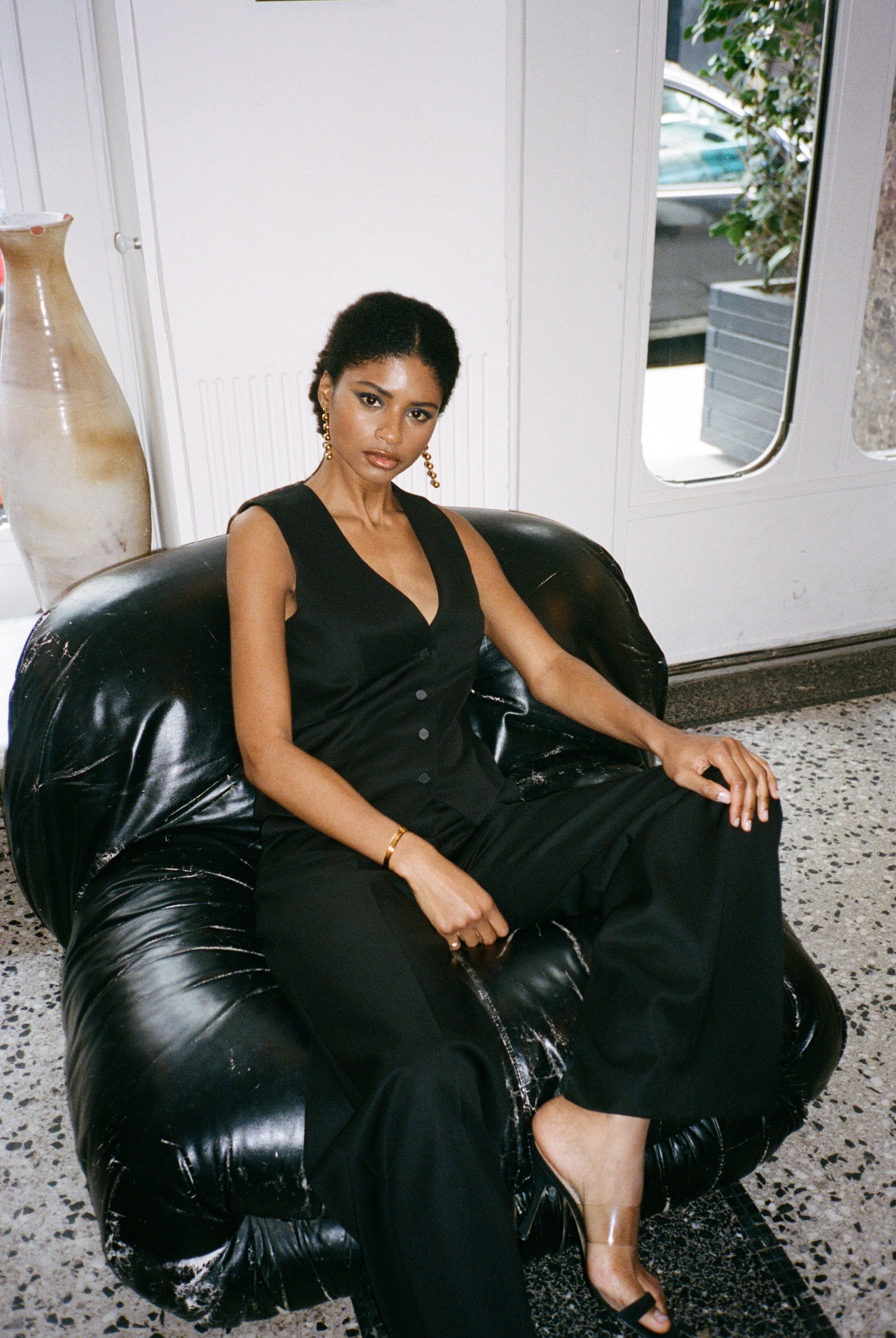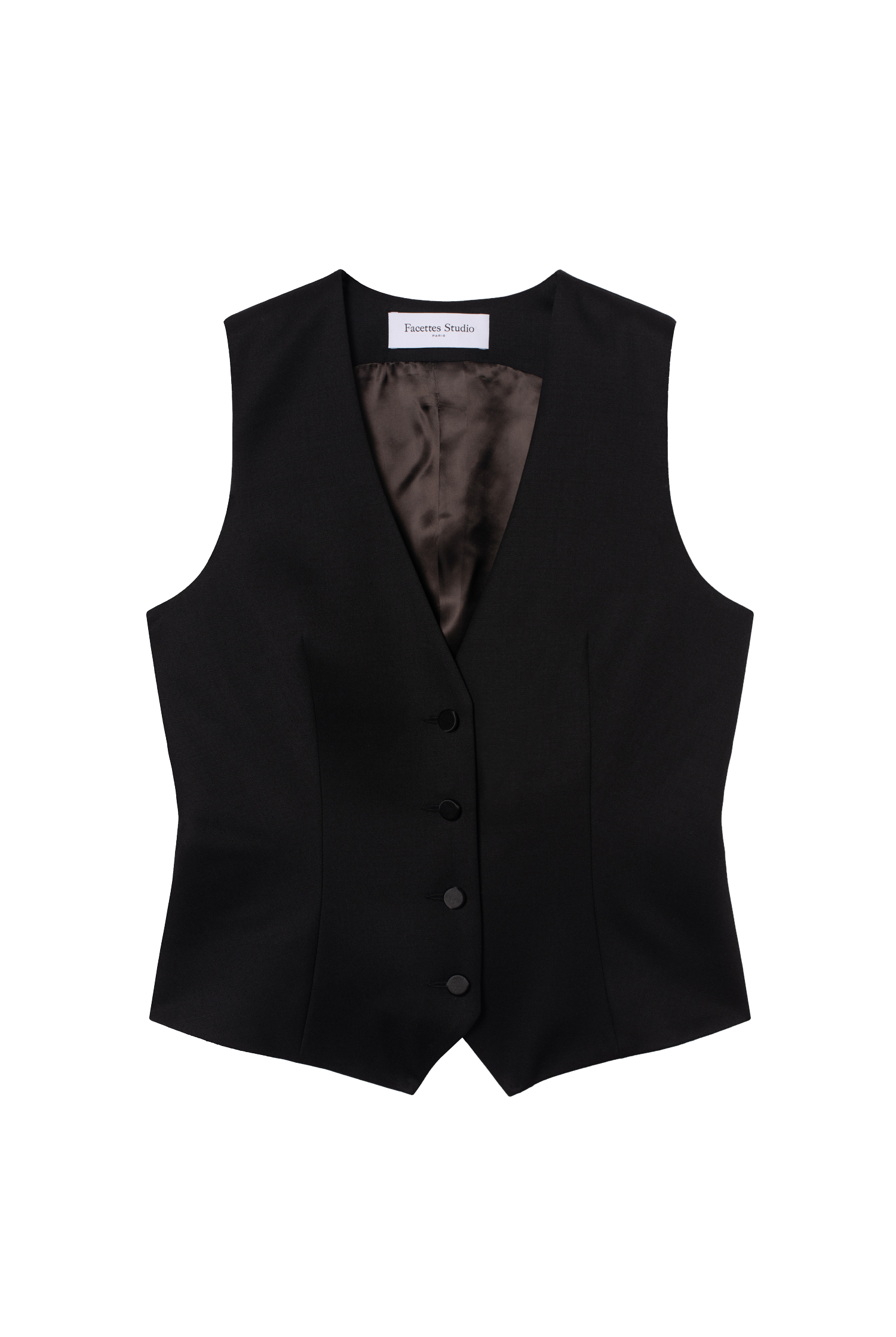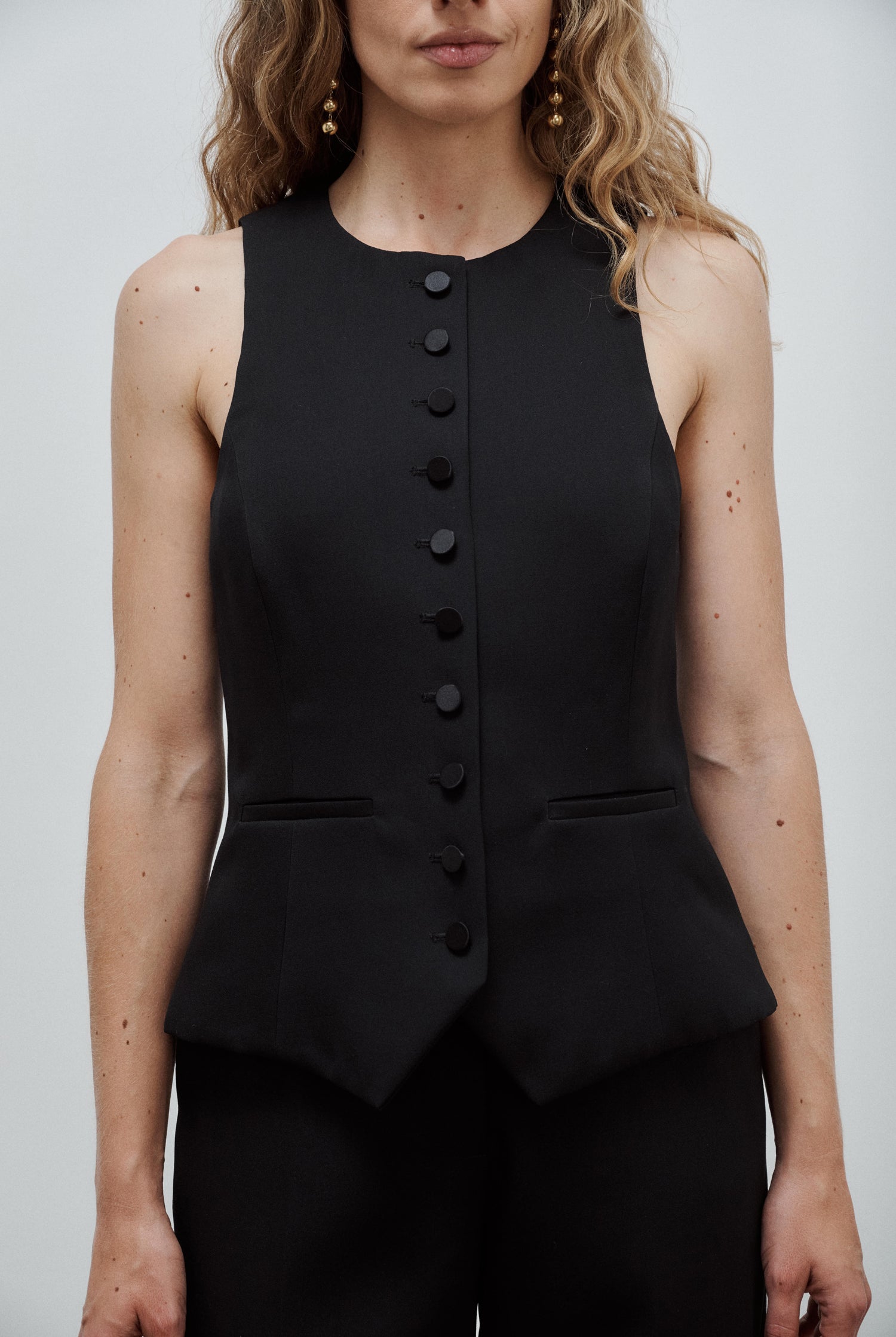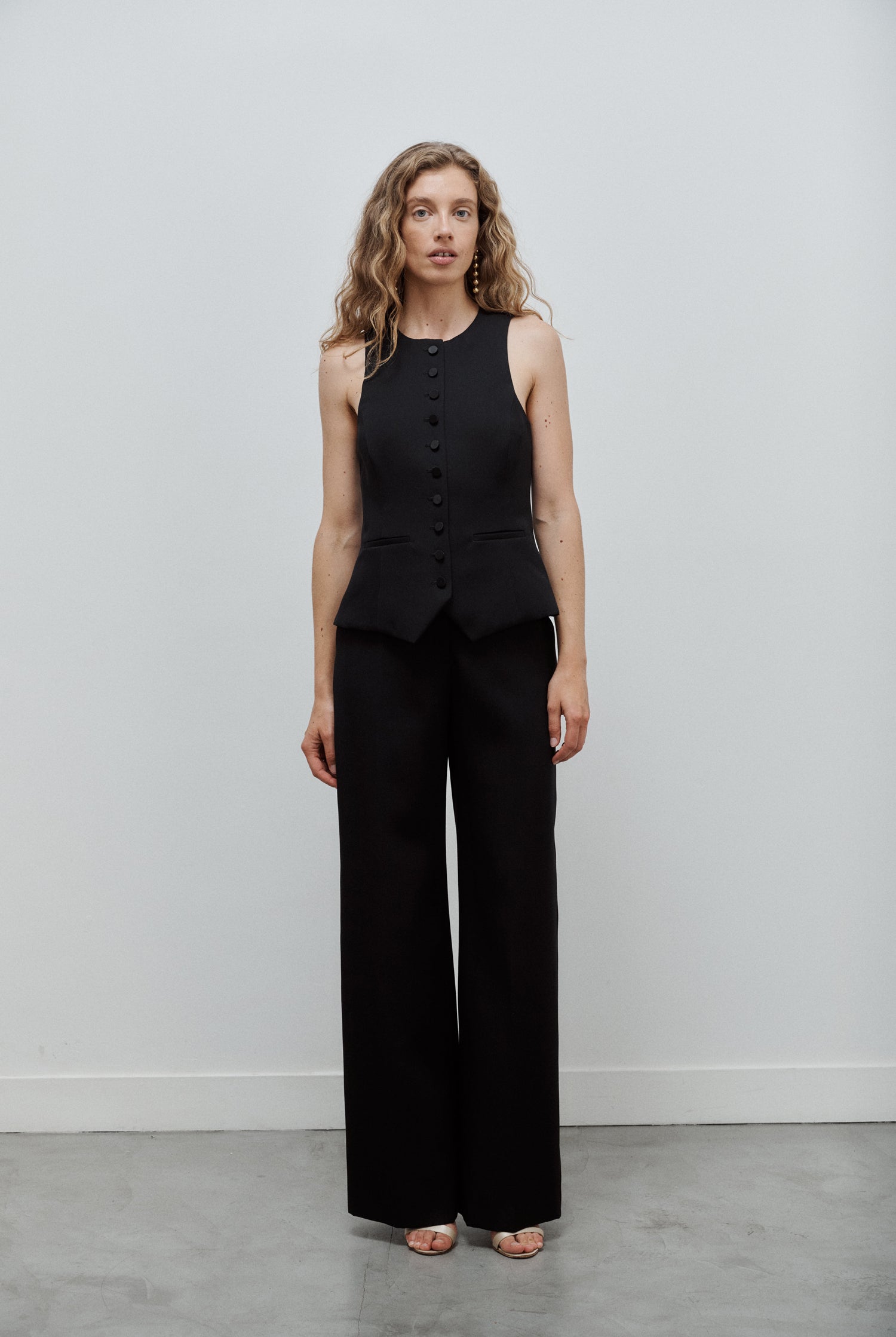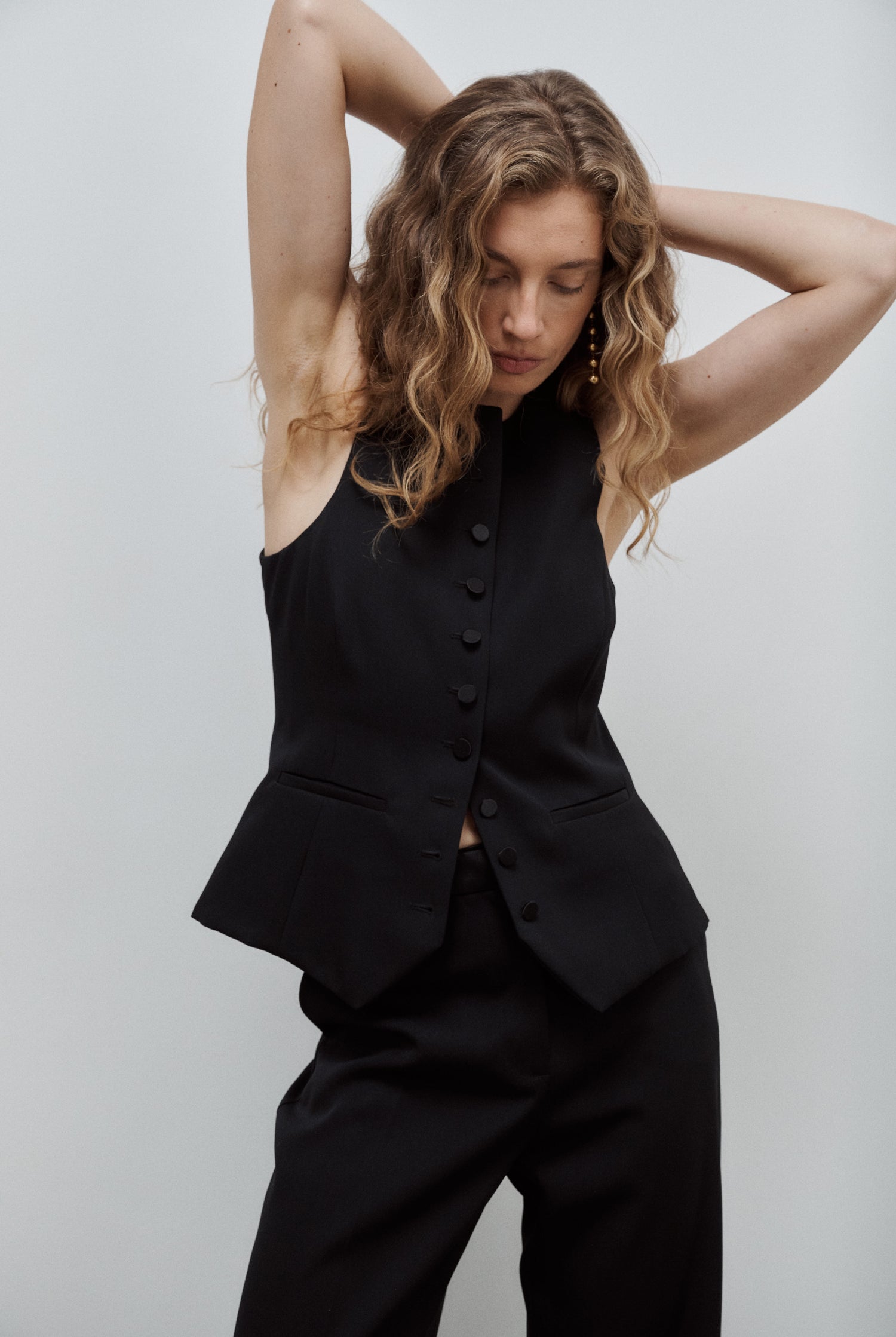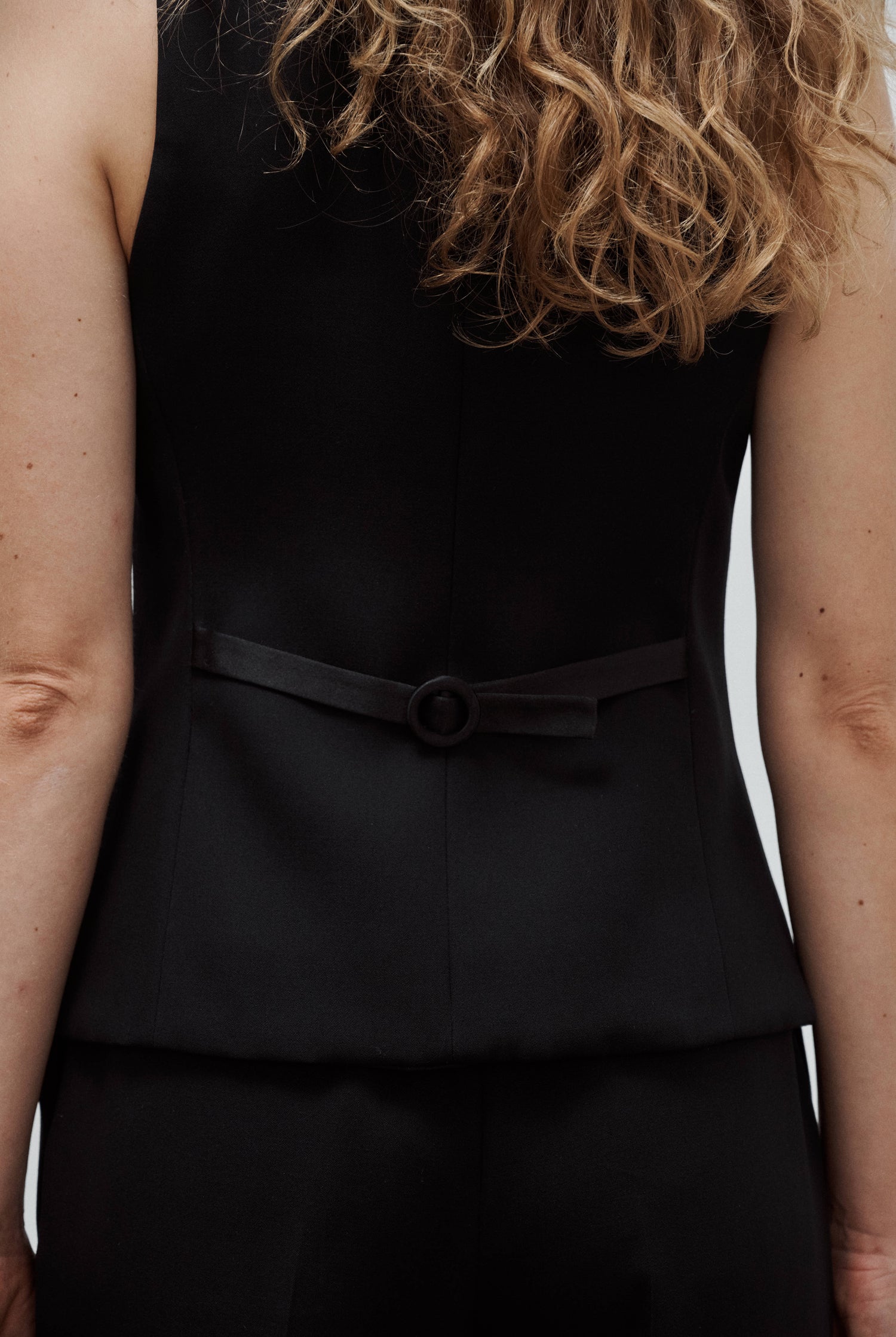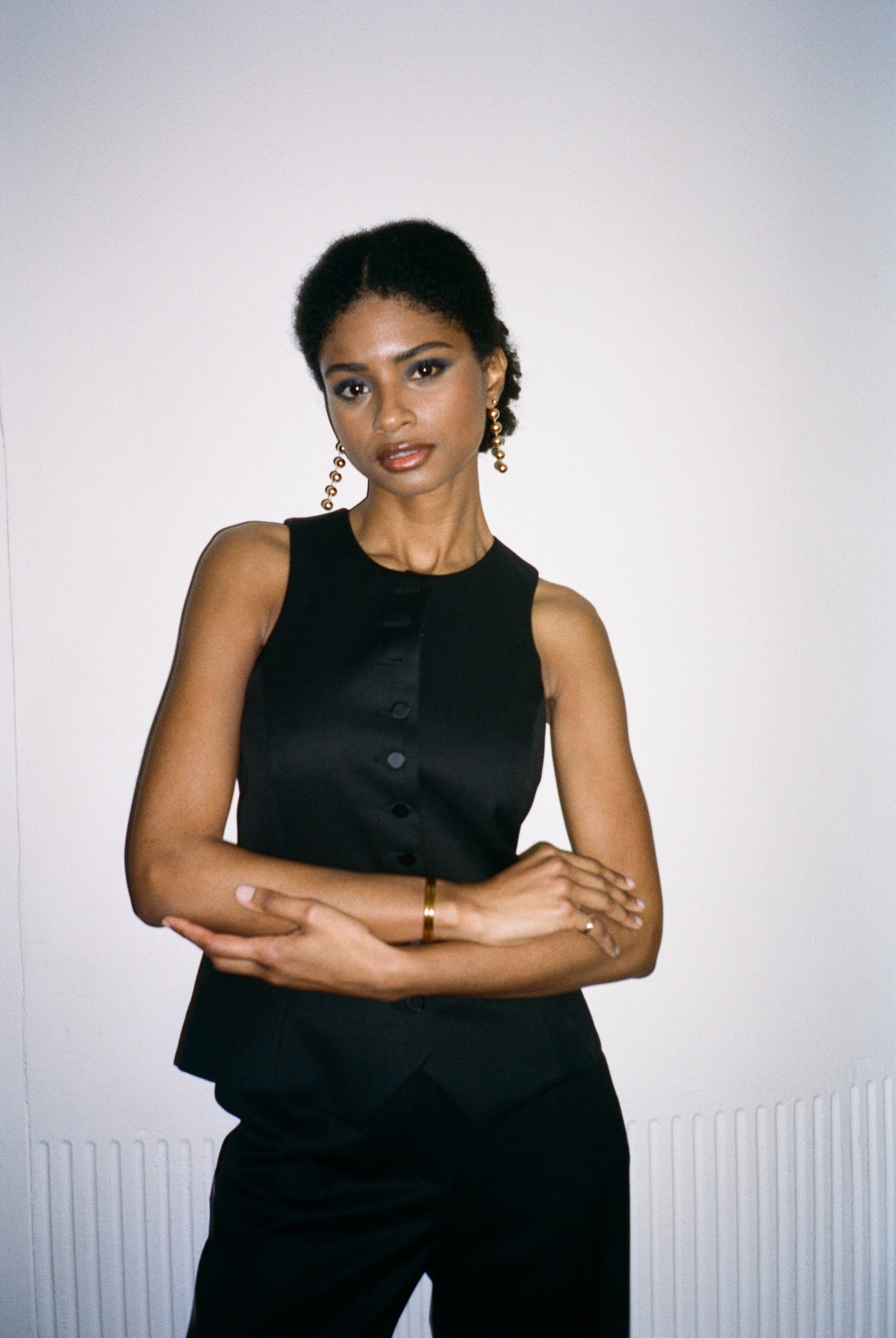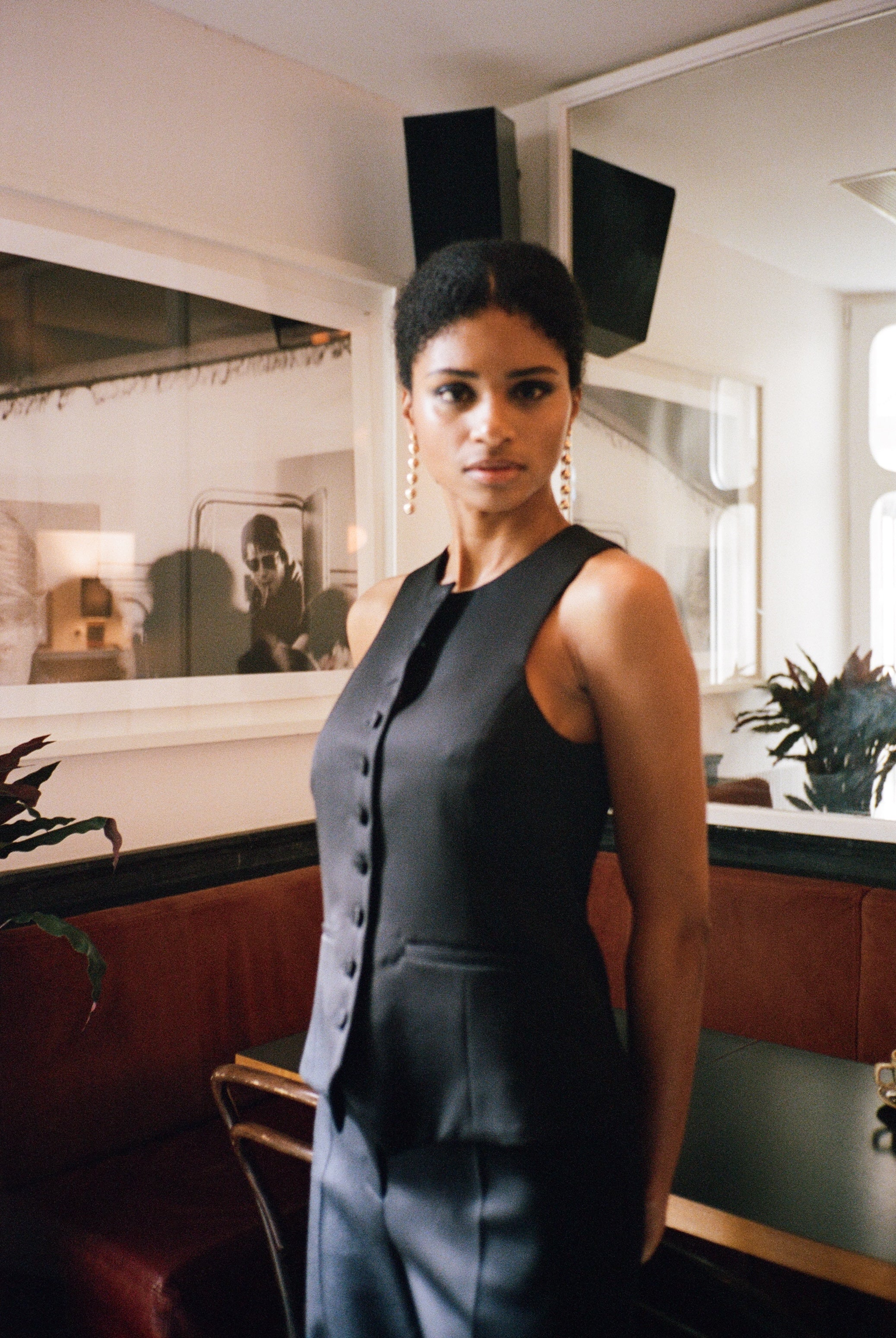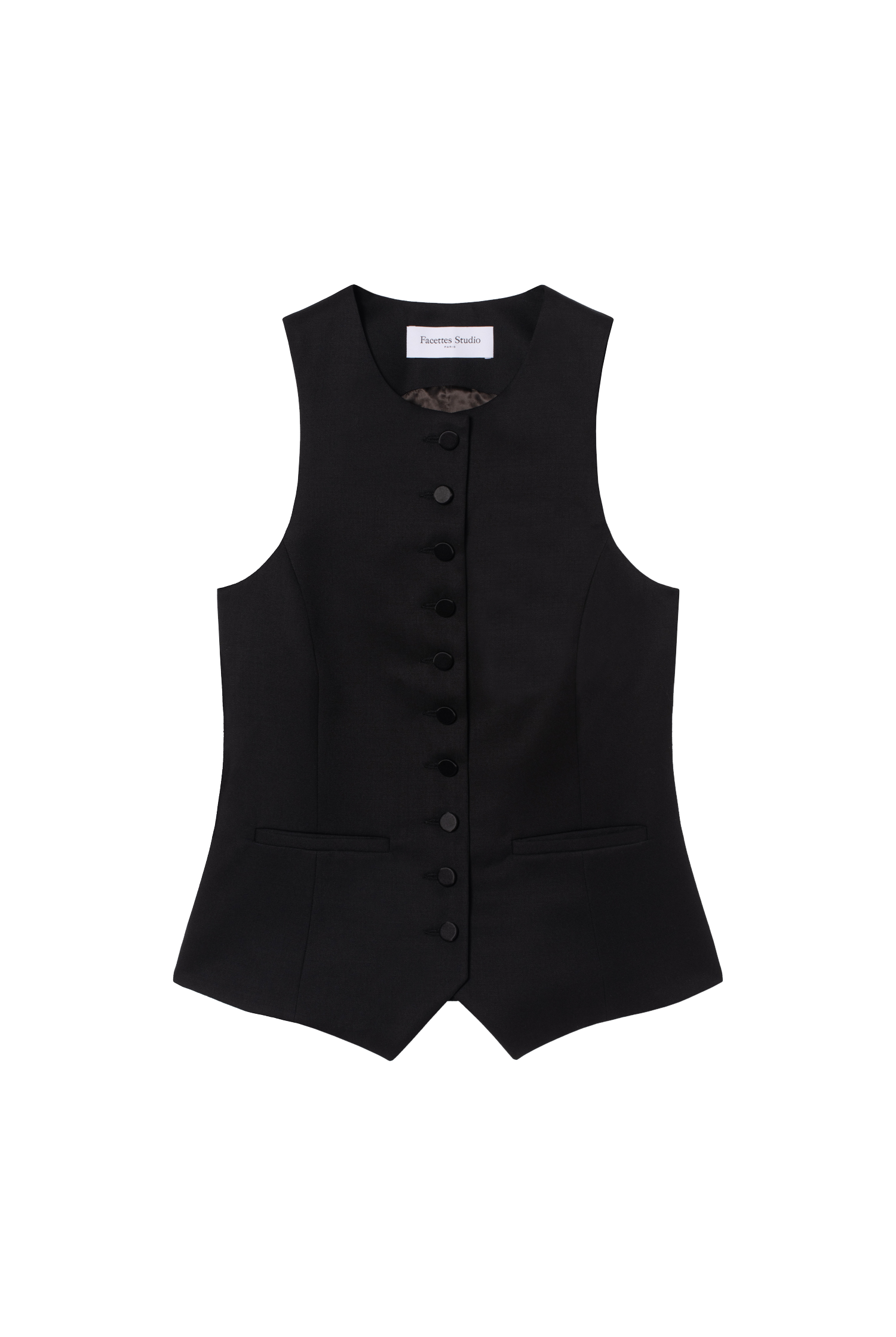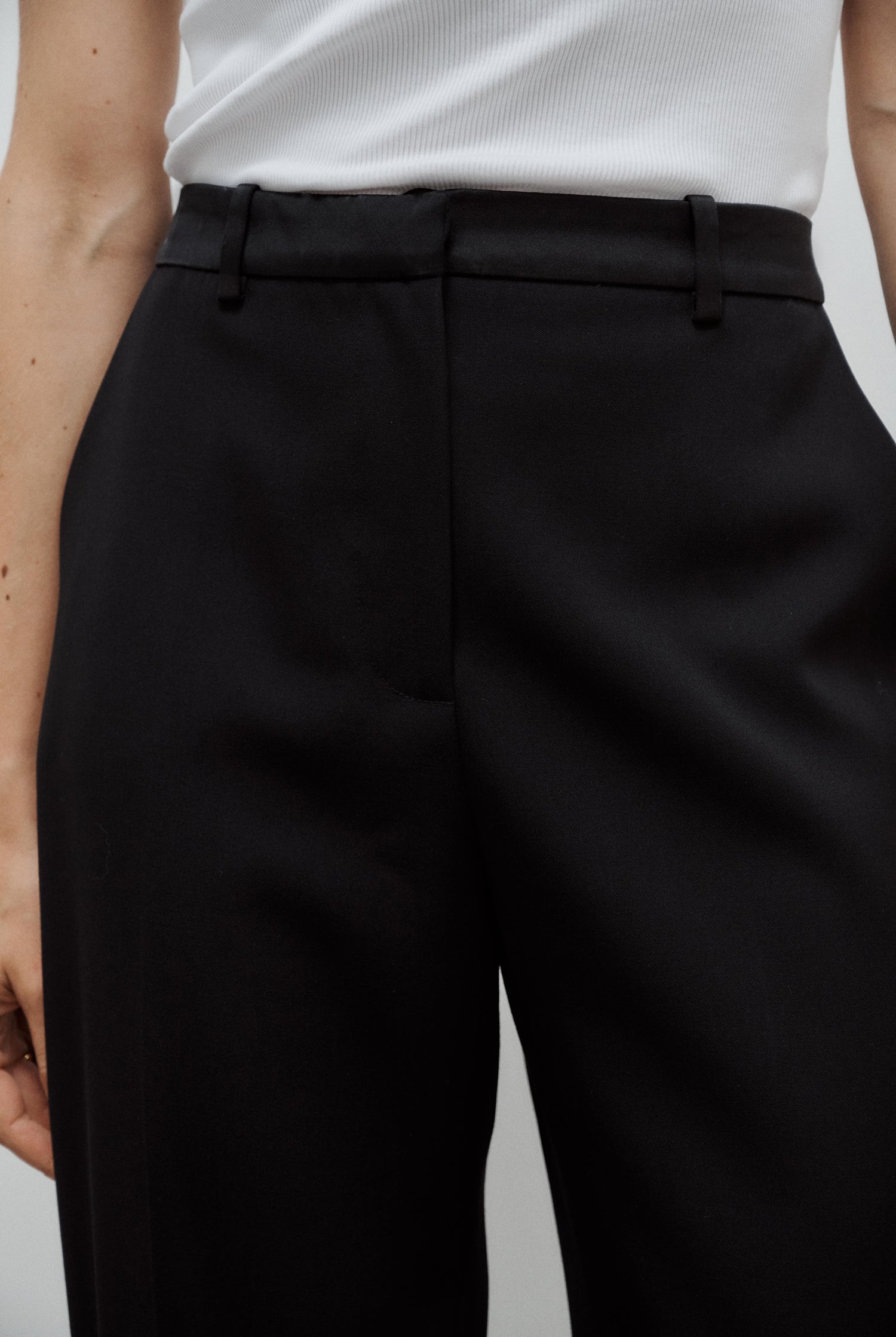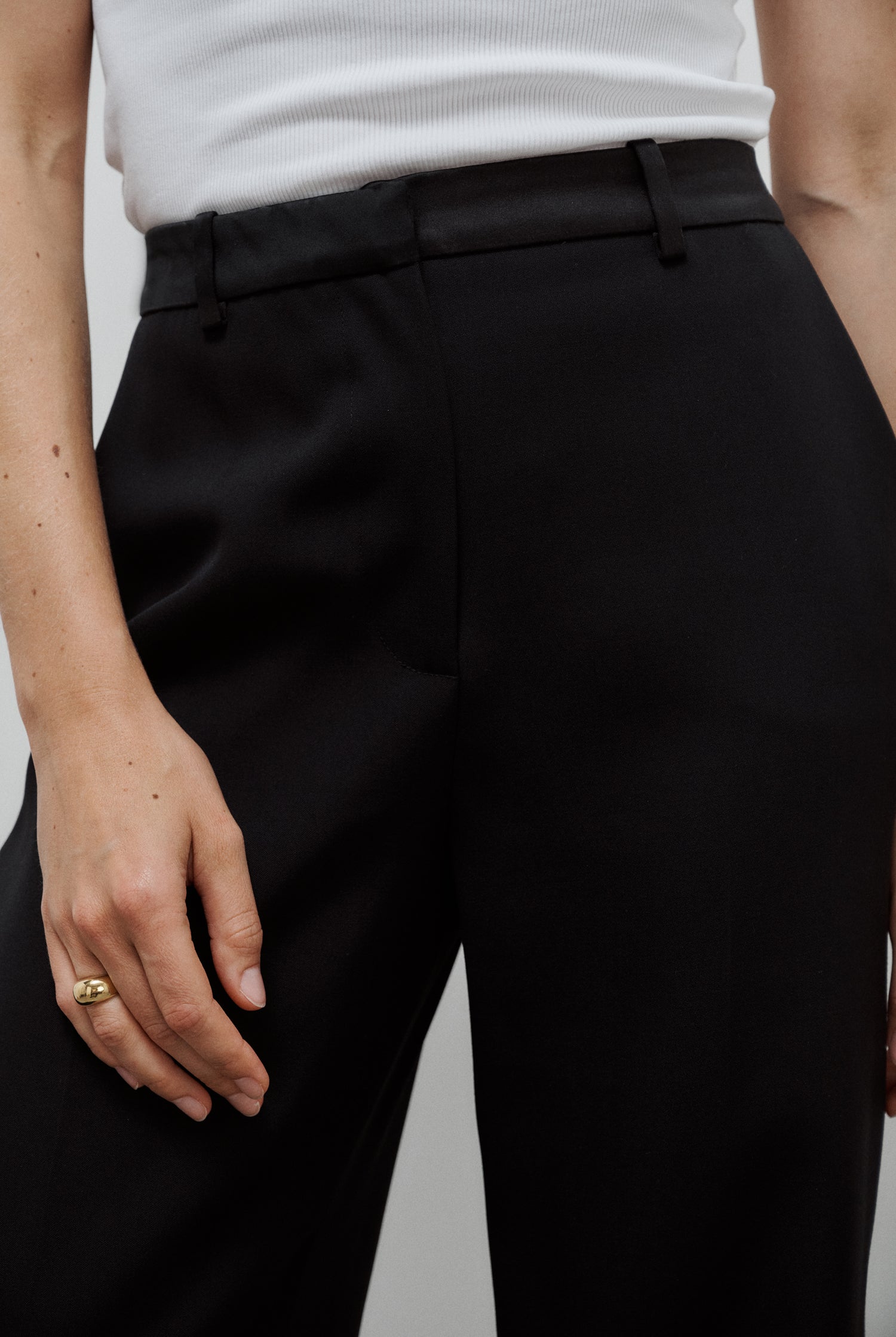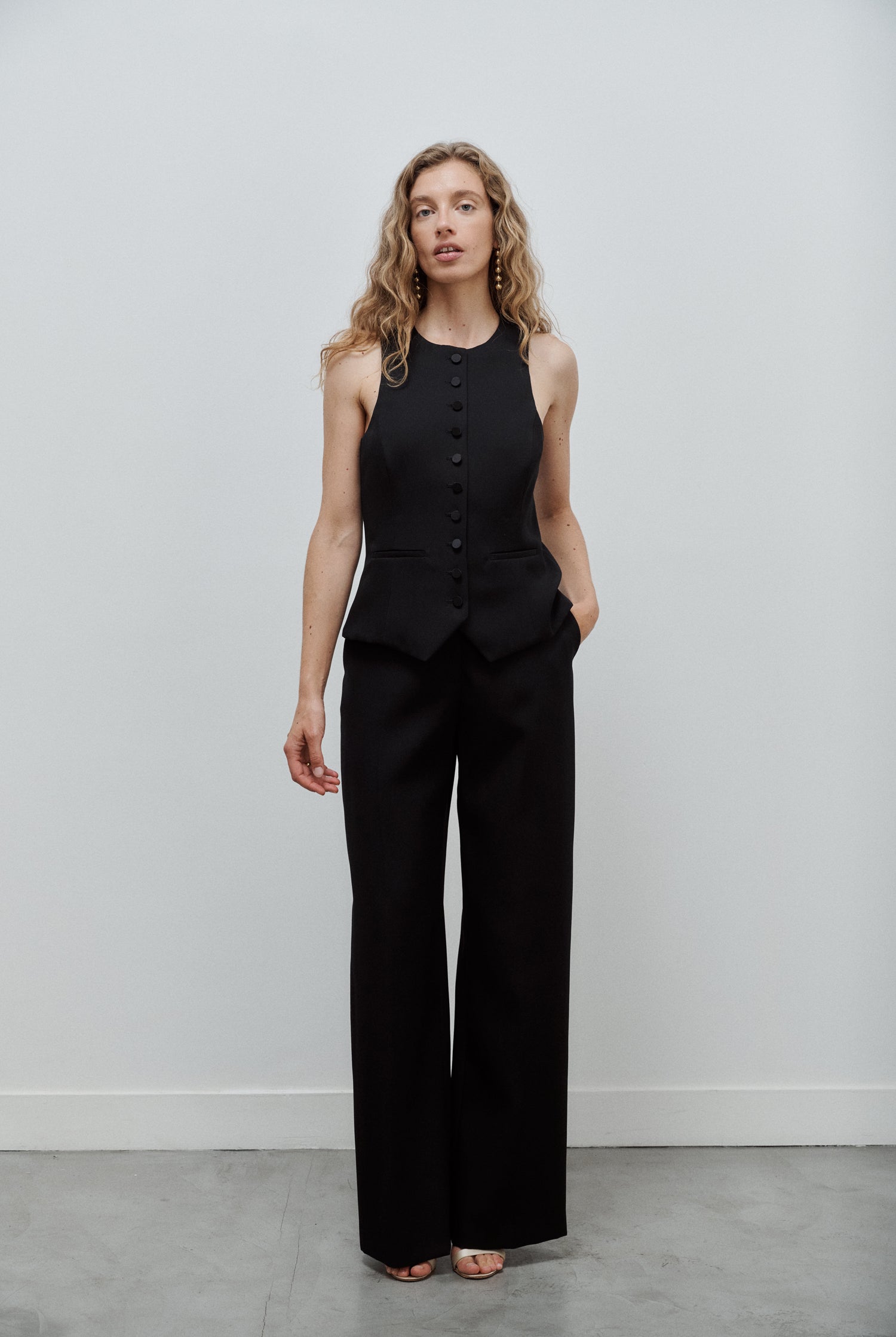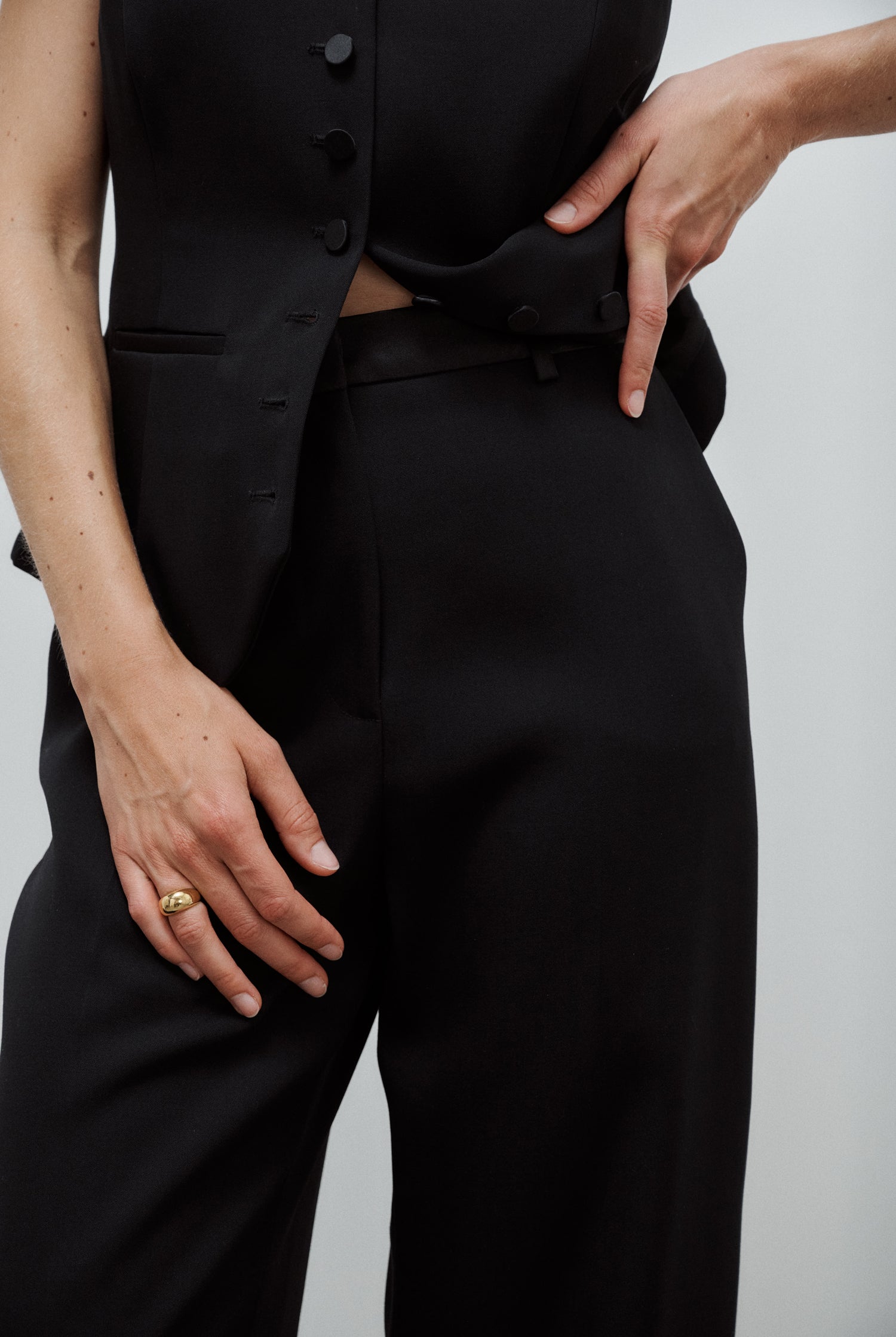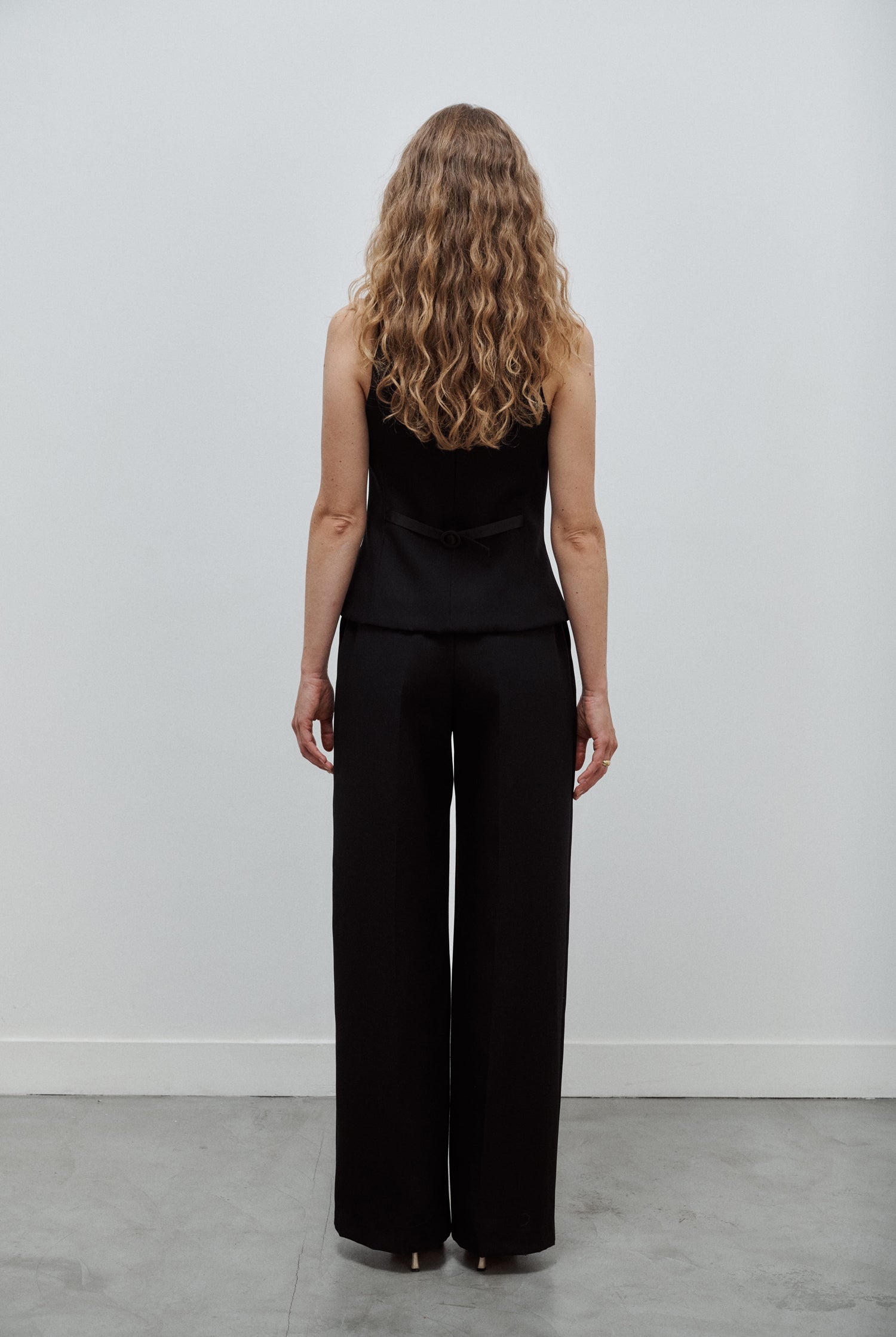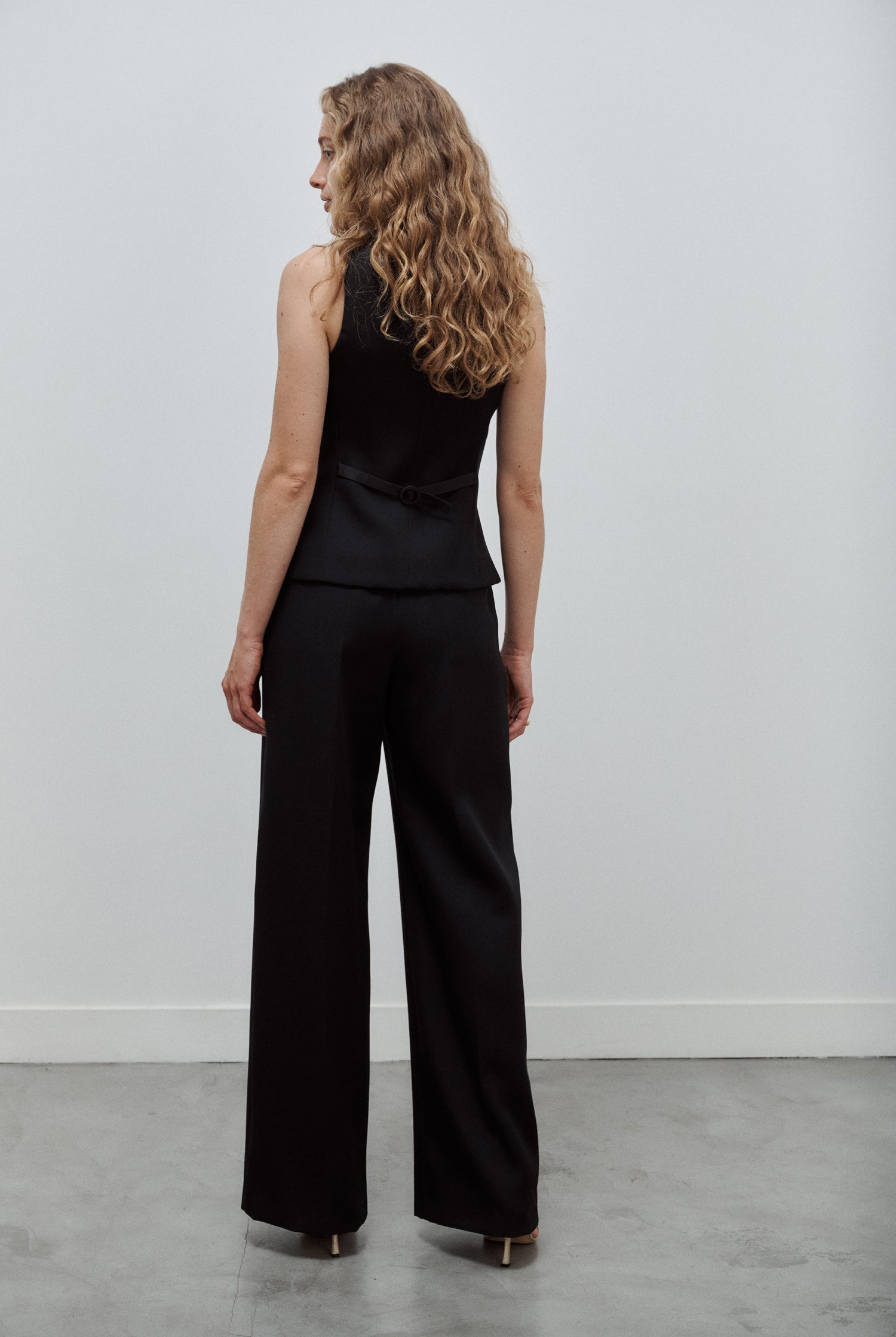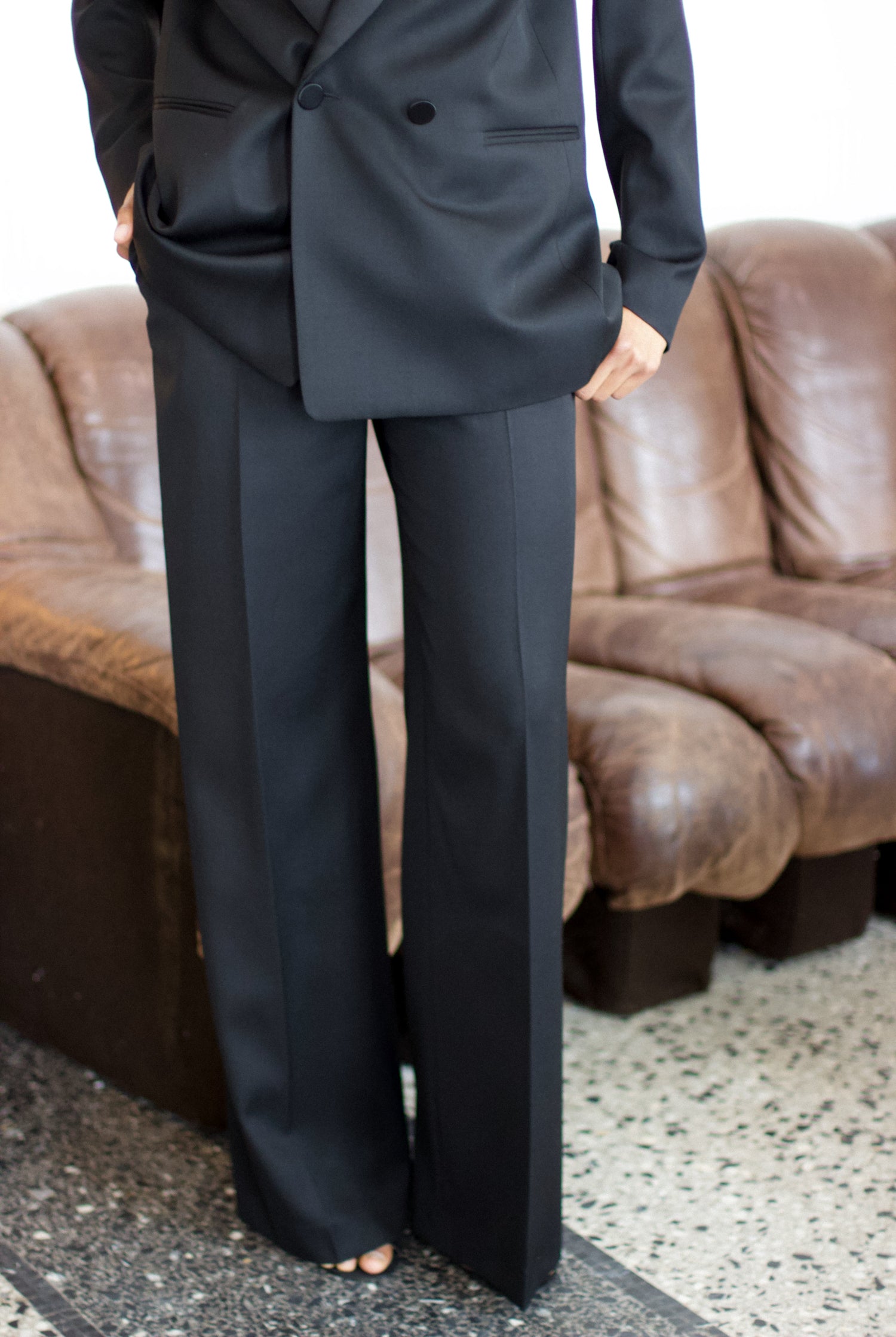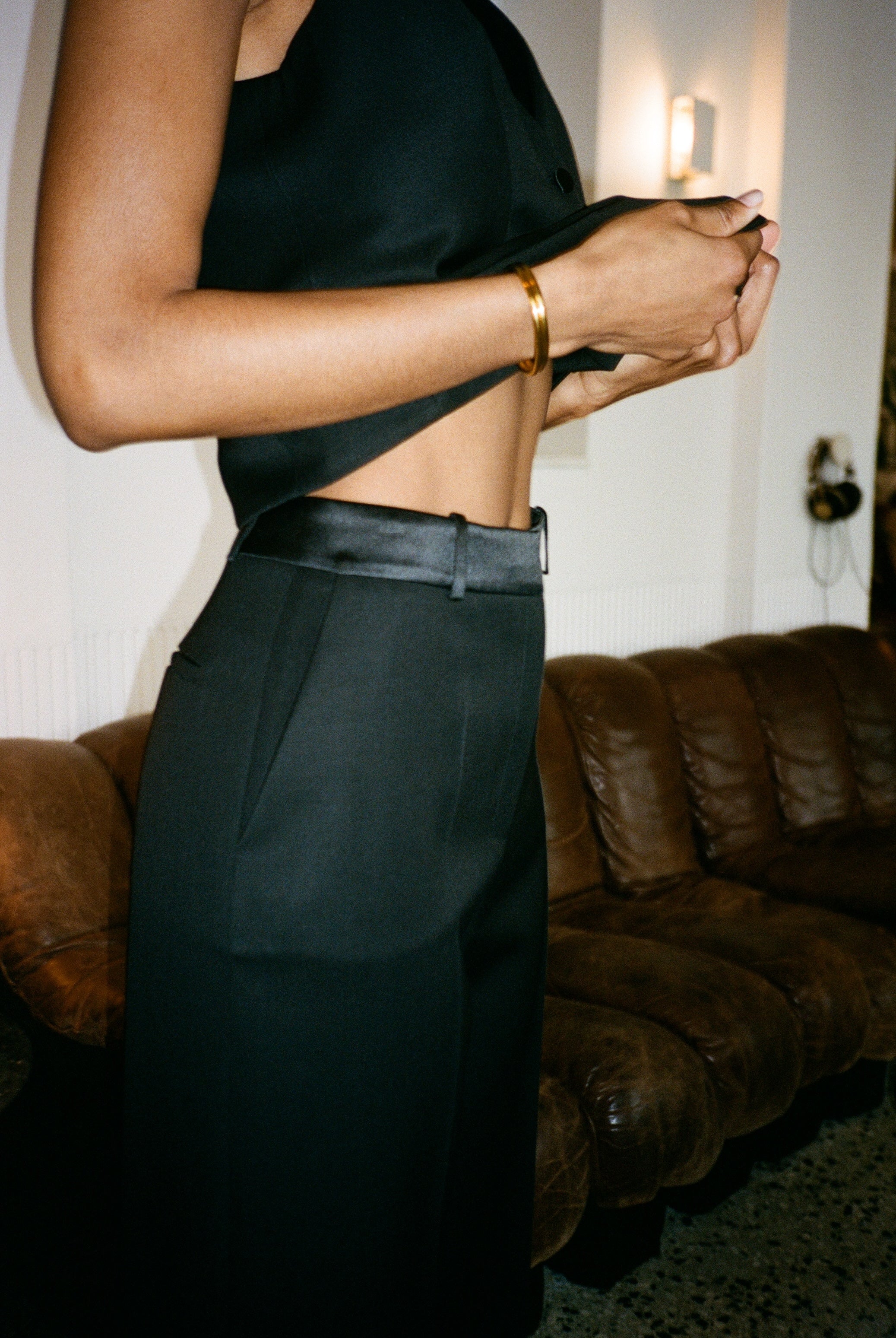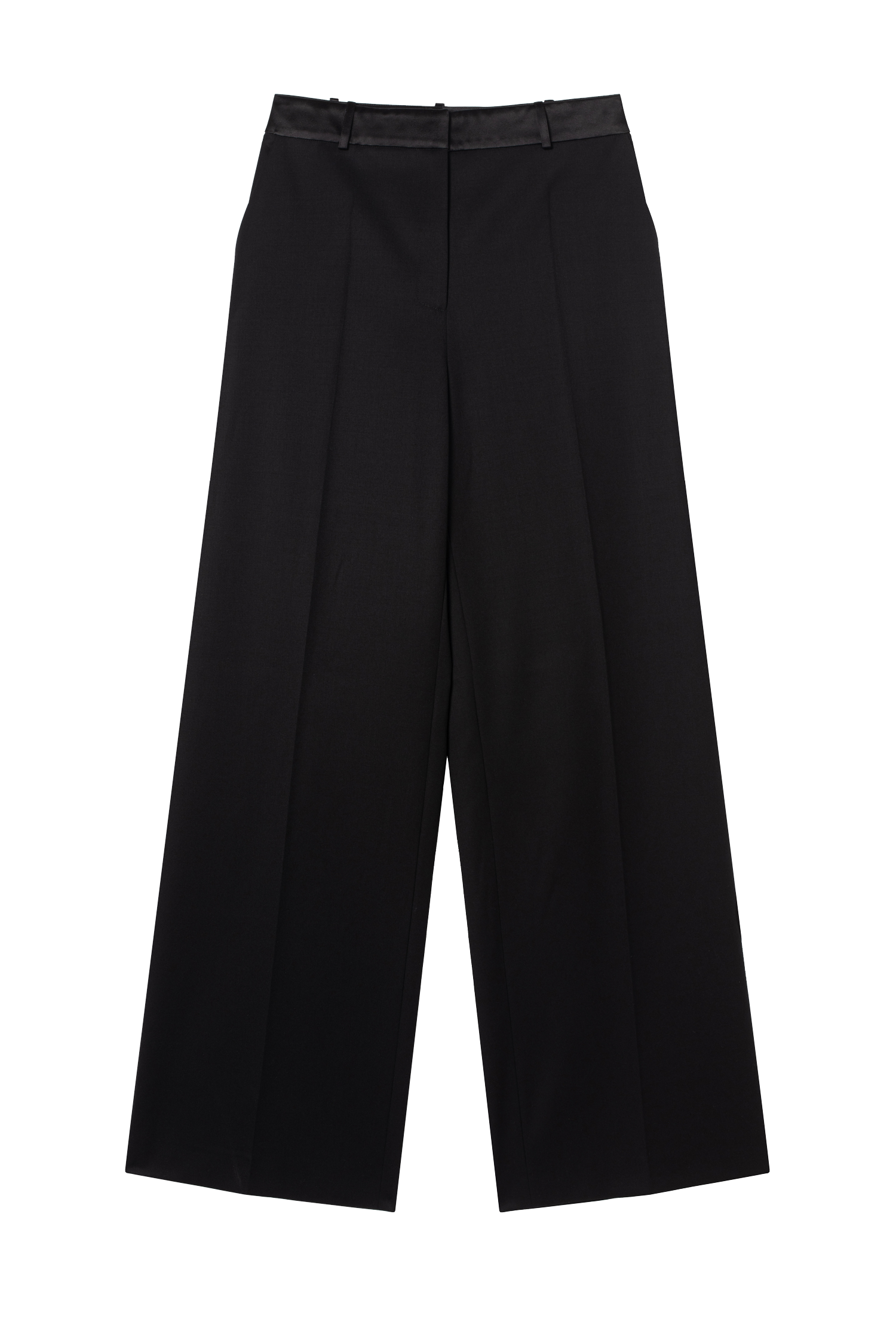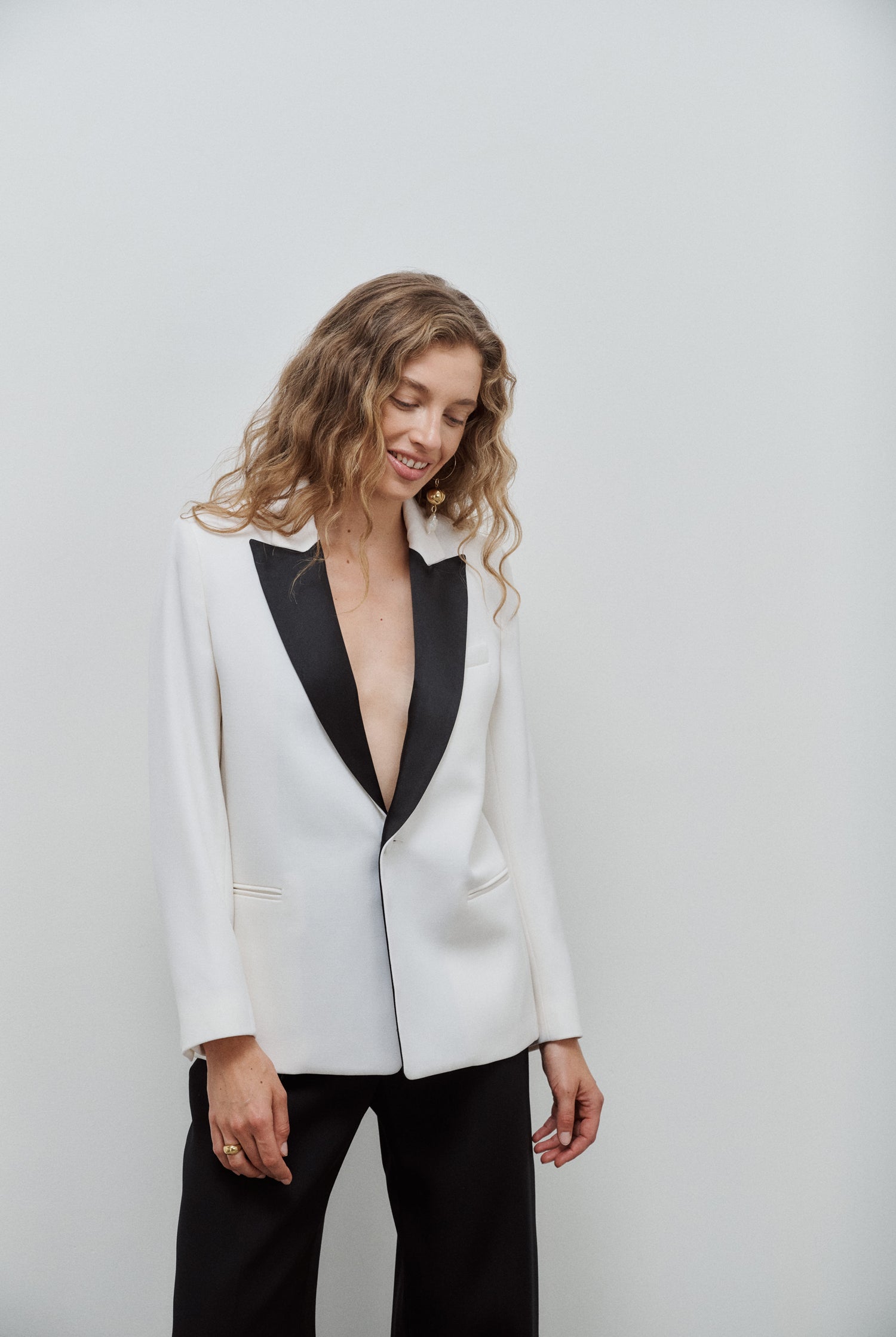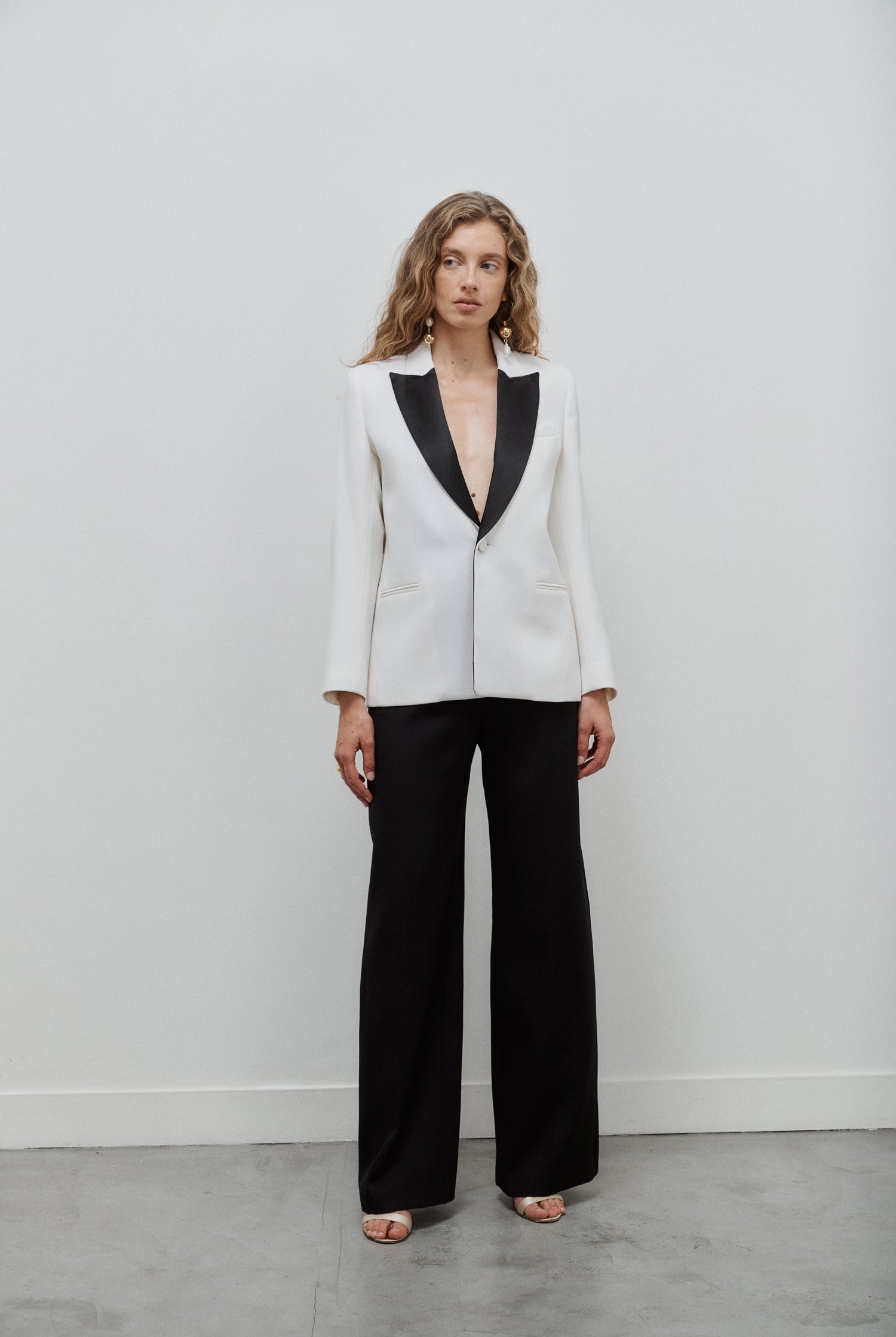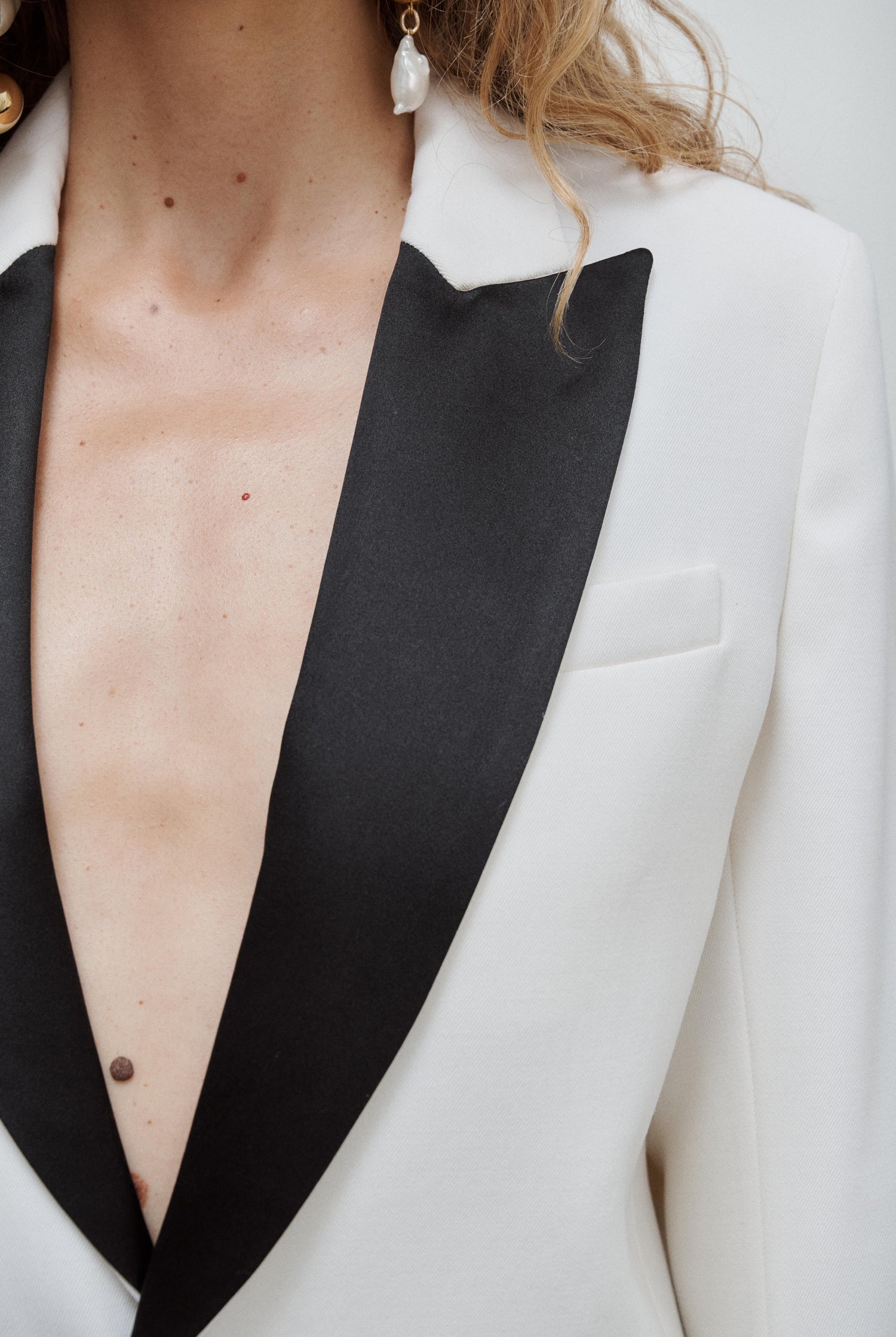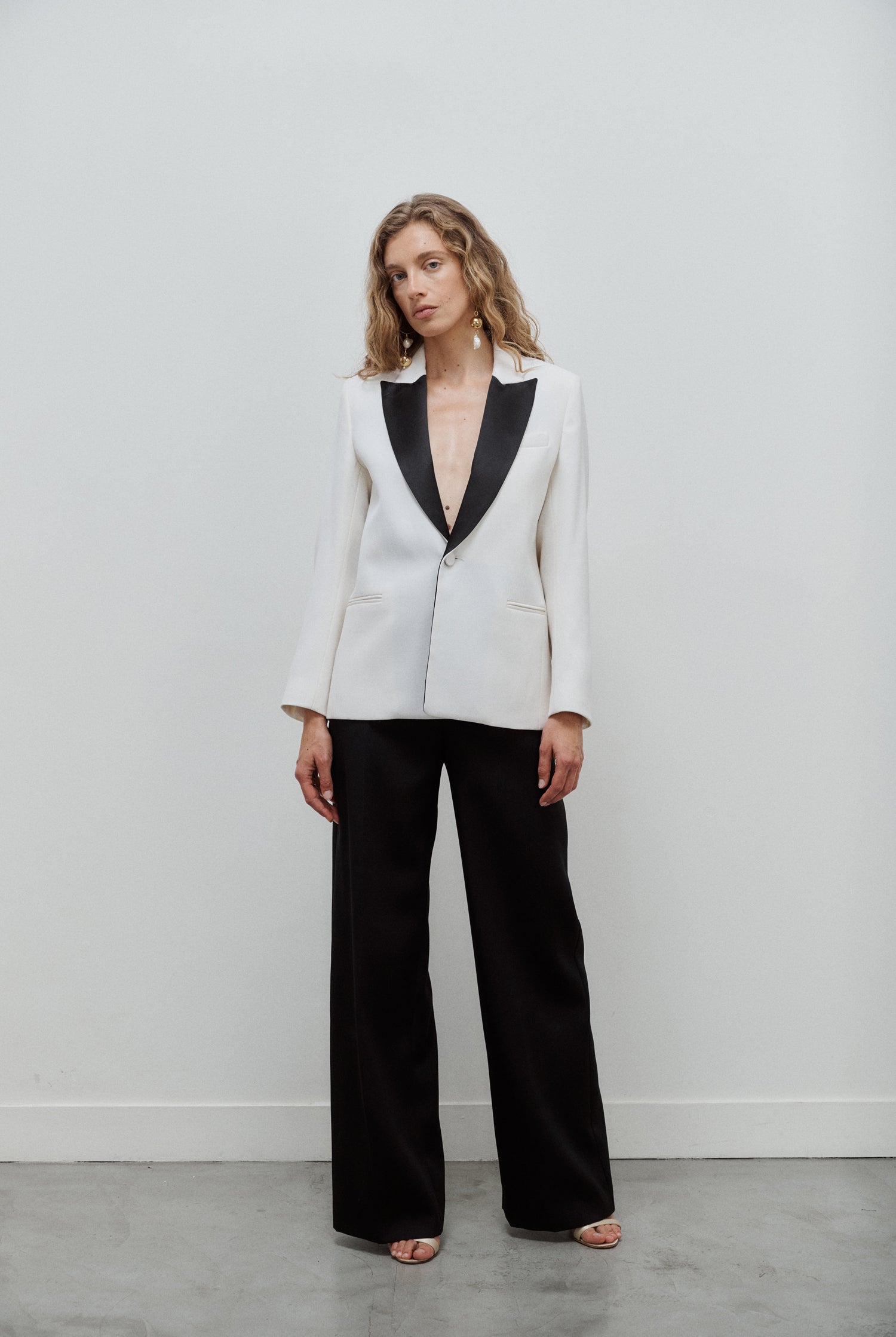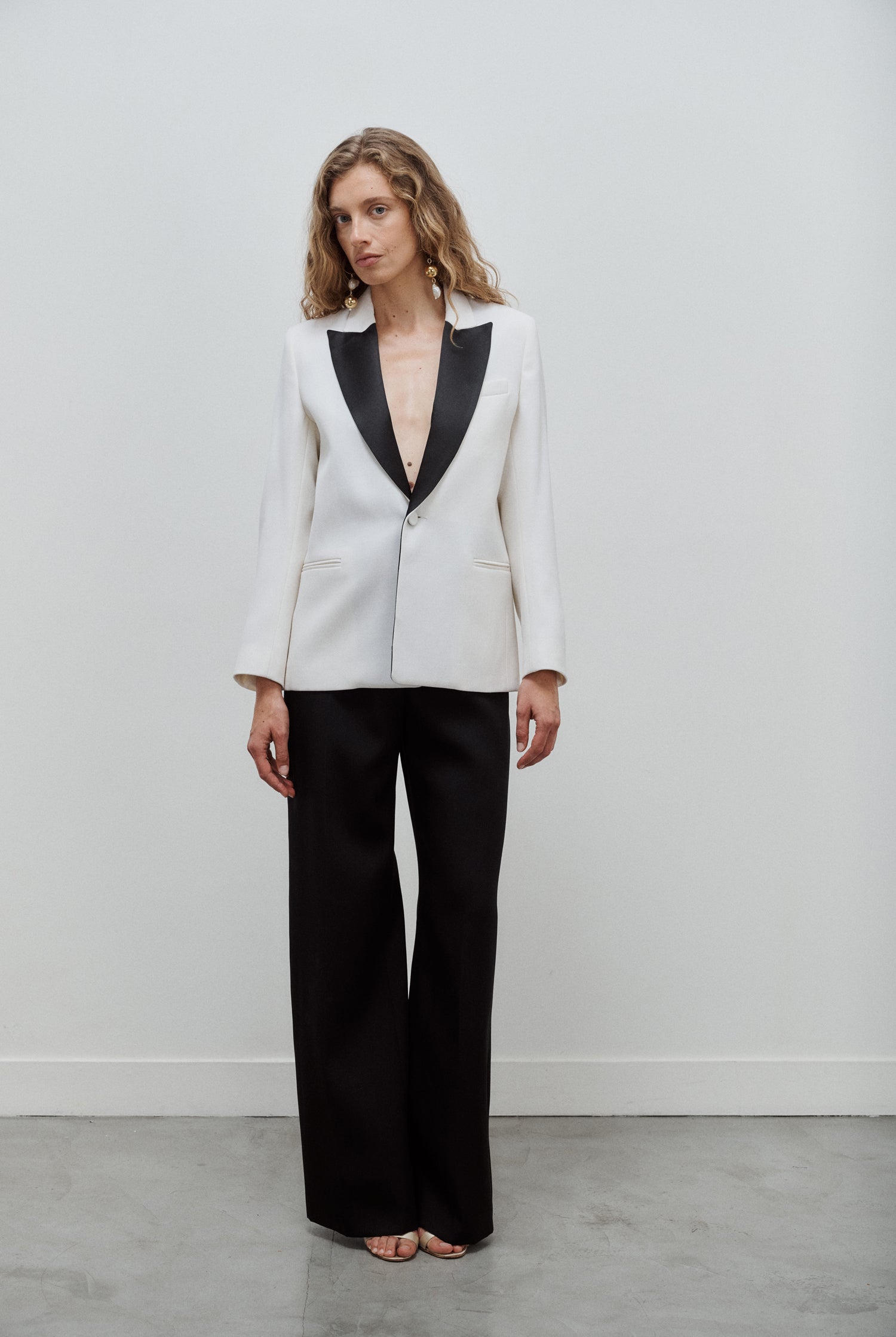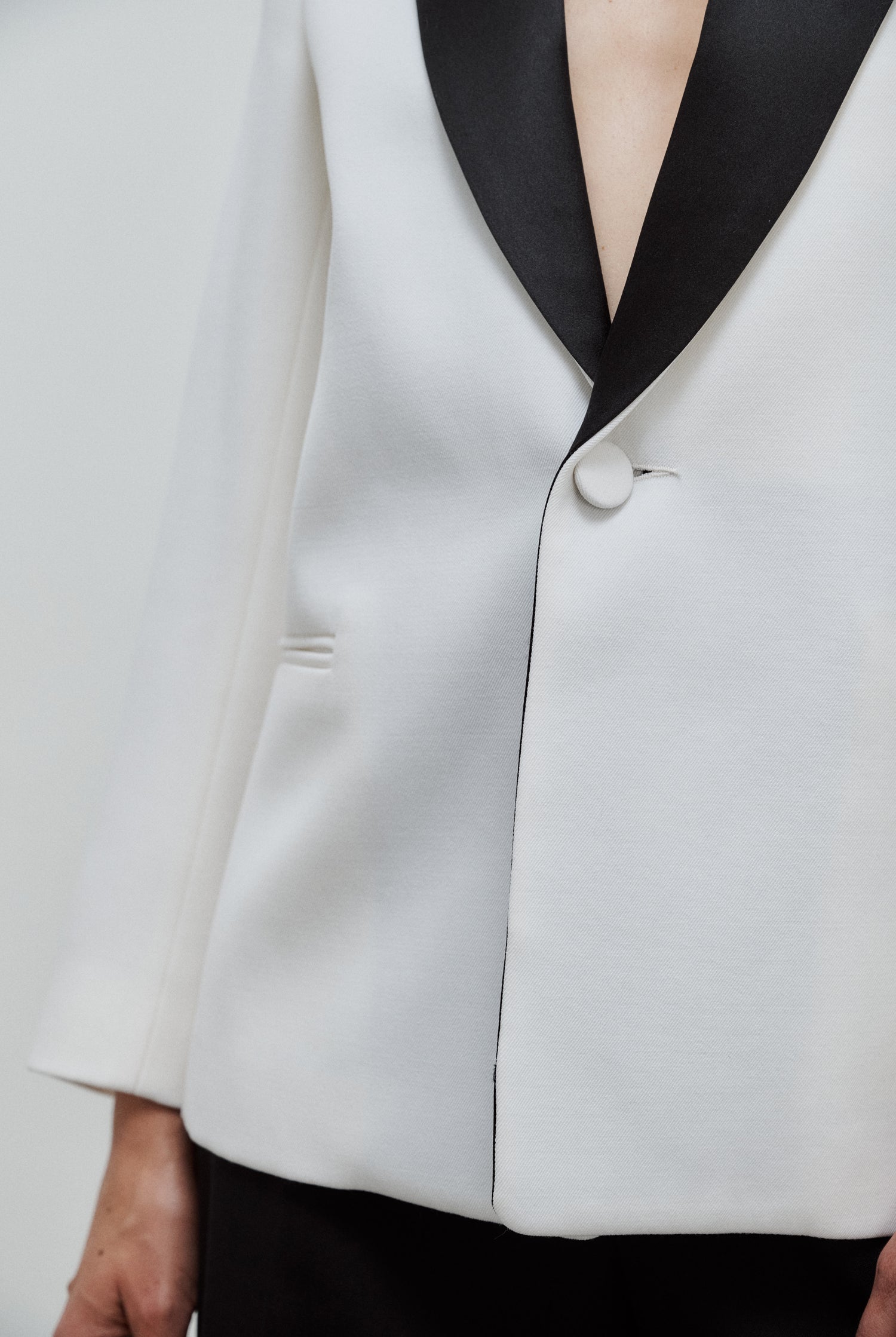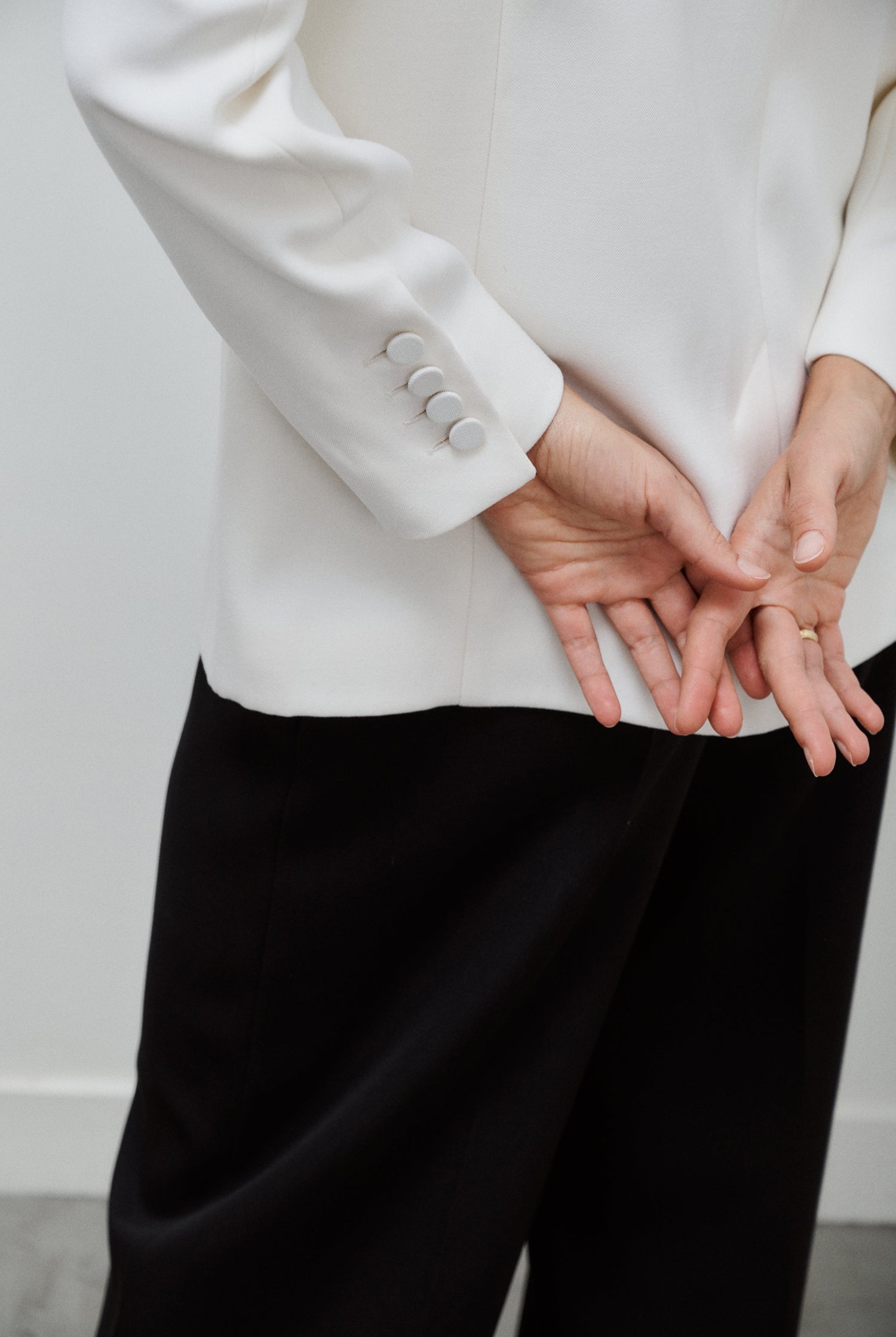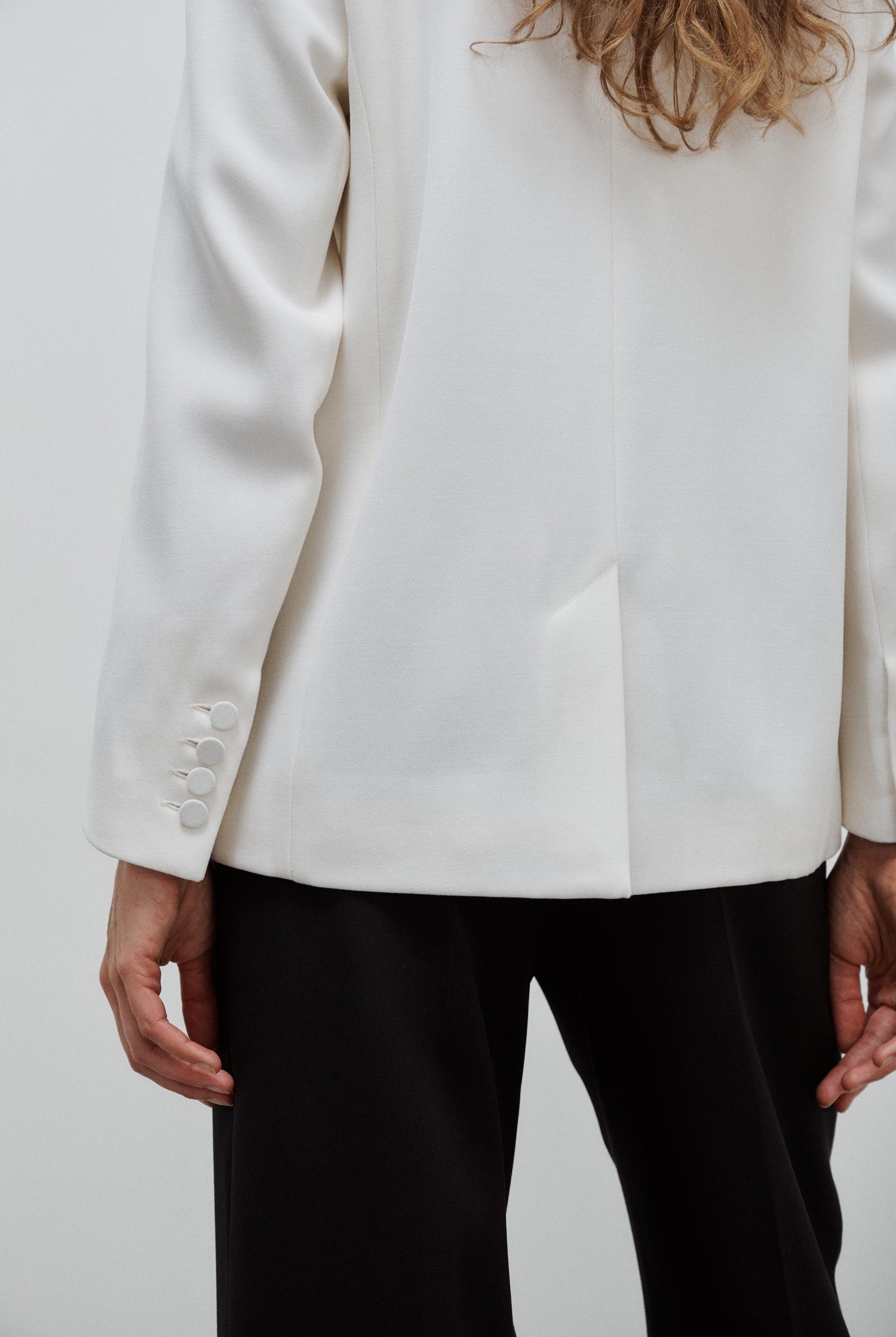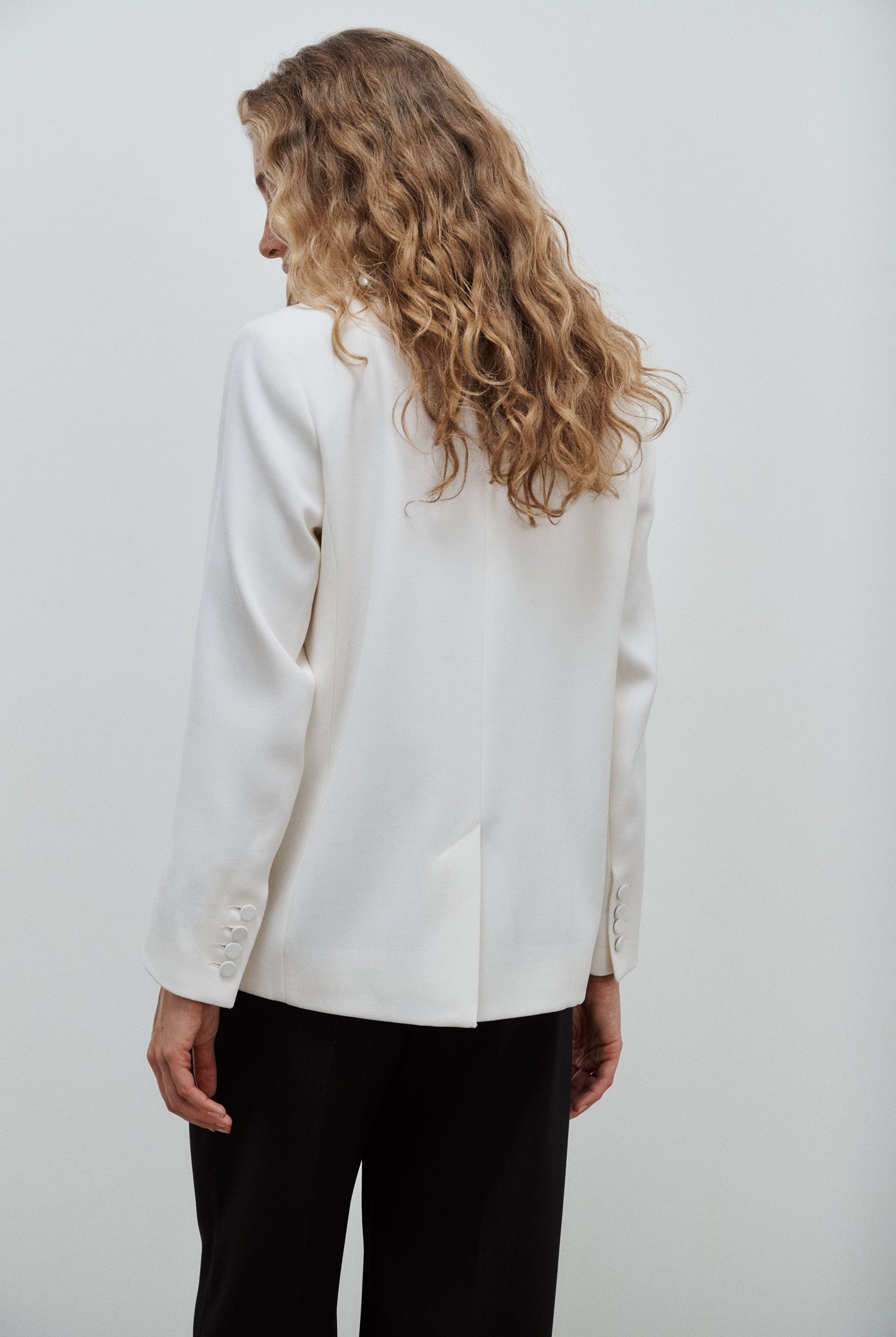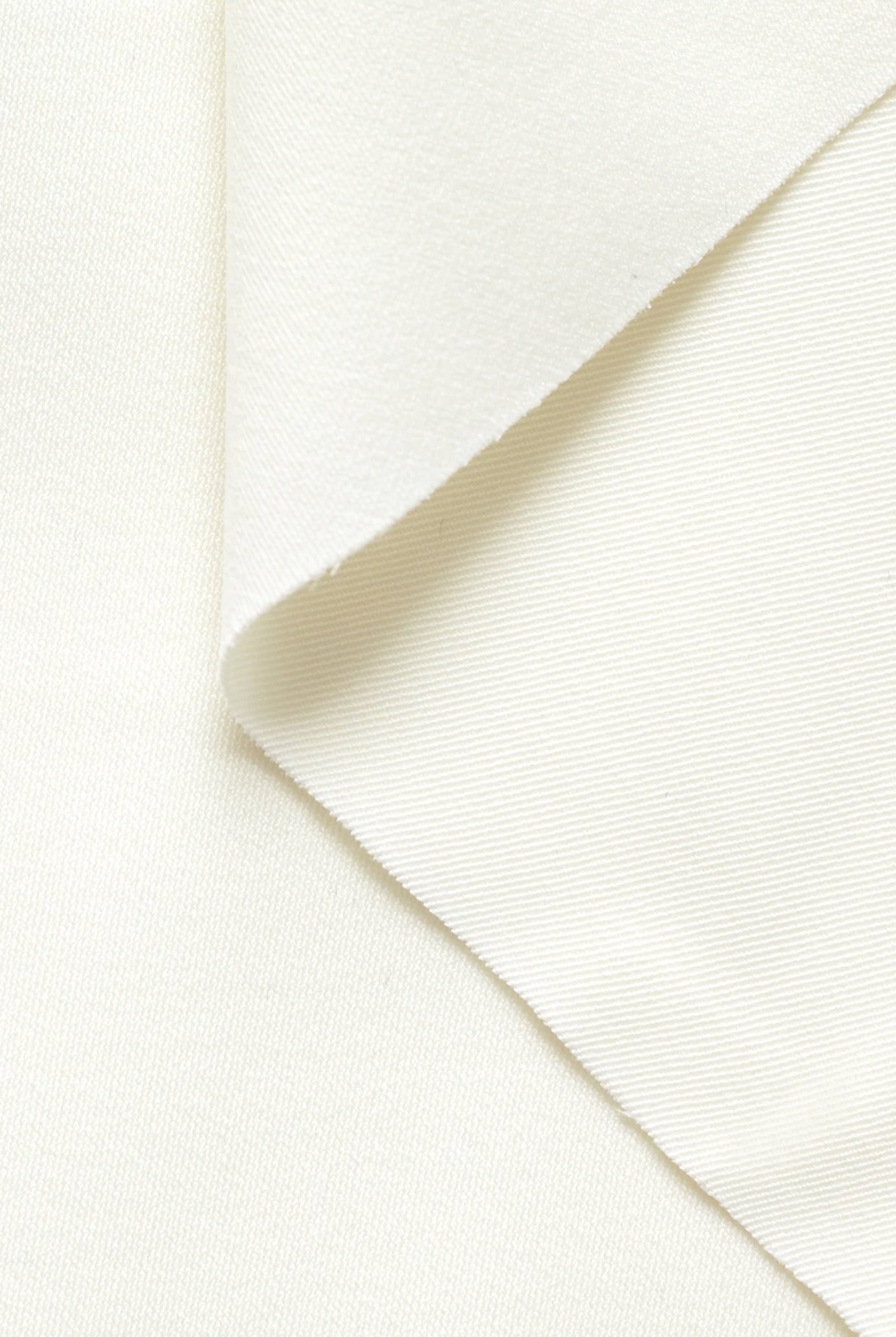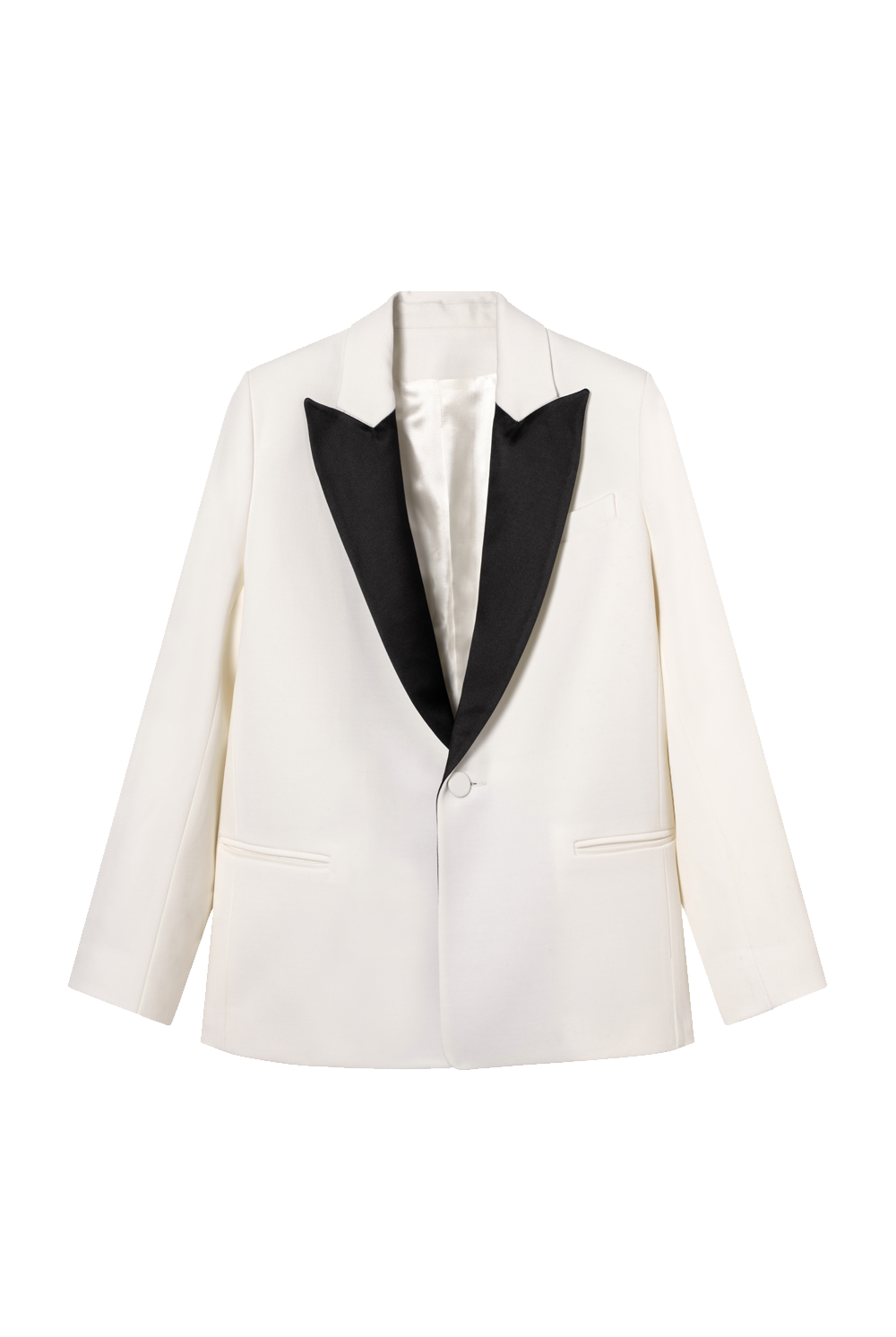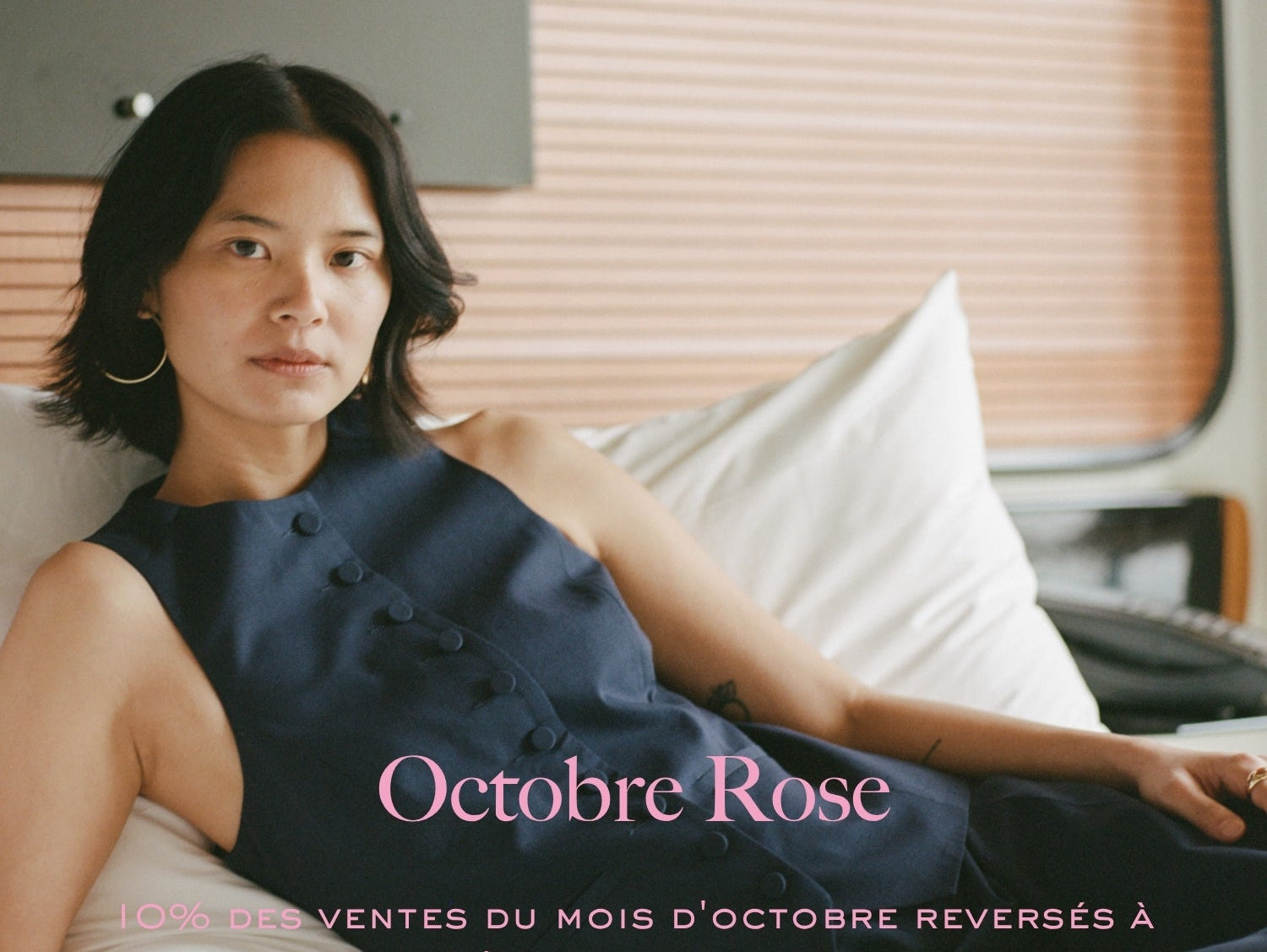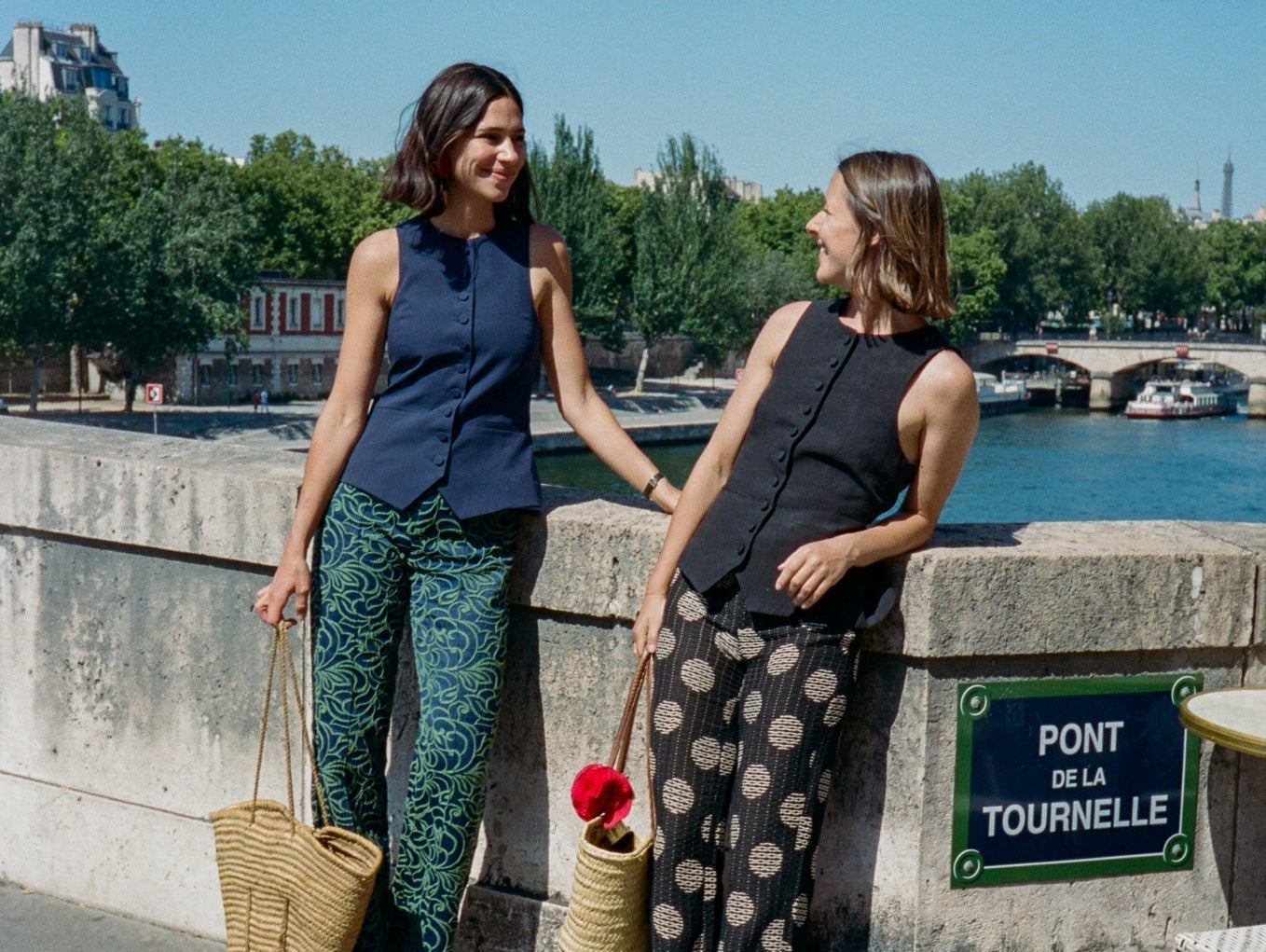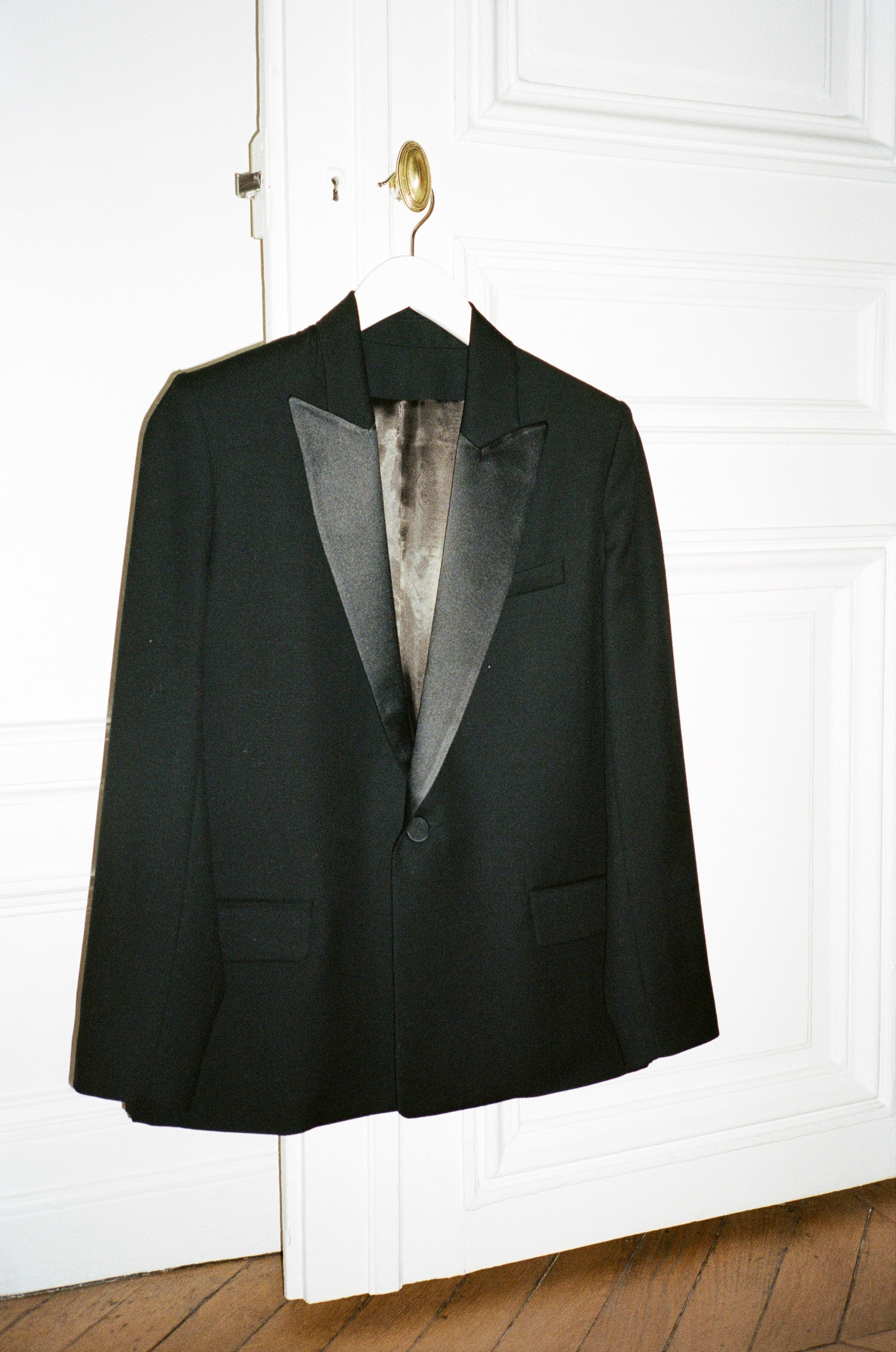
The History of the Tuxedo Jacket
Now considered a timeless piece in both men’s and women’s wardrobes, the tuxedo jacket has freed itself from convention, and the ways to wear it are endless. Let’s look back at the history of the tuxedo, from British aristocracy to our contemporary closets.
1600s to 1850s: from silk robes to the "smoking jacket"
The arrival of silk in Europe changed both fashion and dress habits. In the 1600s, it became fashionable to be painted wearing a silk robe, a luxurious garment, ancestor of the tuxedo jacket, intended for private moments at home.
By the 1850s, the Crimean War brought European powers into conflict and encouraged exchange: English soldiers, among others, began to smoke more frequently. Boosted by the increased import of Turkish tobacco, smoking became a social ritual once back home. Men would traditionally wear a house robe to protect their clothes from ash and smoke. They would then remove it before joining their wives. These early "smoking jackets" varied in style and were made of cashmere, wool, or flannel.
1860: from Edward VII’s custom order to the tuxedo as we know it
It was in 1860 that the tuxedo jacket as we know it first appeared. Originally a soft, indoor jacket worn in smoking rooms, hence the name "smoking", it protected men’s clothing from the smell of tobacco. King Edward VII, fond of the garment, had a special version made by his Savile Row tailor, Henry Poole & Co. Crafted in blue silk, shorter than a tailcoat, single-breasted, his version was lighter and less cumbersome. He soon began wearing it socially and for leisure activities.
The birth of the "tuxedo": The jacket crosses the atlantic
During a trip across the Atlantic, Edward VII reportedly wore his "smoking jacket" to a ball hosted by millionaire James Brown Potter in Tuxedo Park, New York. Americans named the jacket after the location, giving rise to the term "tuxedo".
1890s: Women wear the tuxedo for the first time
By the 1890s, the tuxedo jacket had become widespread among Britain’s elite men. But it also found its way onto the backs of free-spirited women like Colette and Renée Vivien, who borrowed it from the male wardrobe.
In the 1930s, actress Marlene Dietrich brought the tuxedo to the big screen, popularizing it for women in Josef von Sternberg’s Morocco.
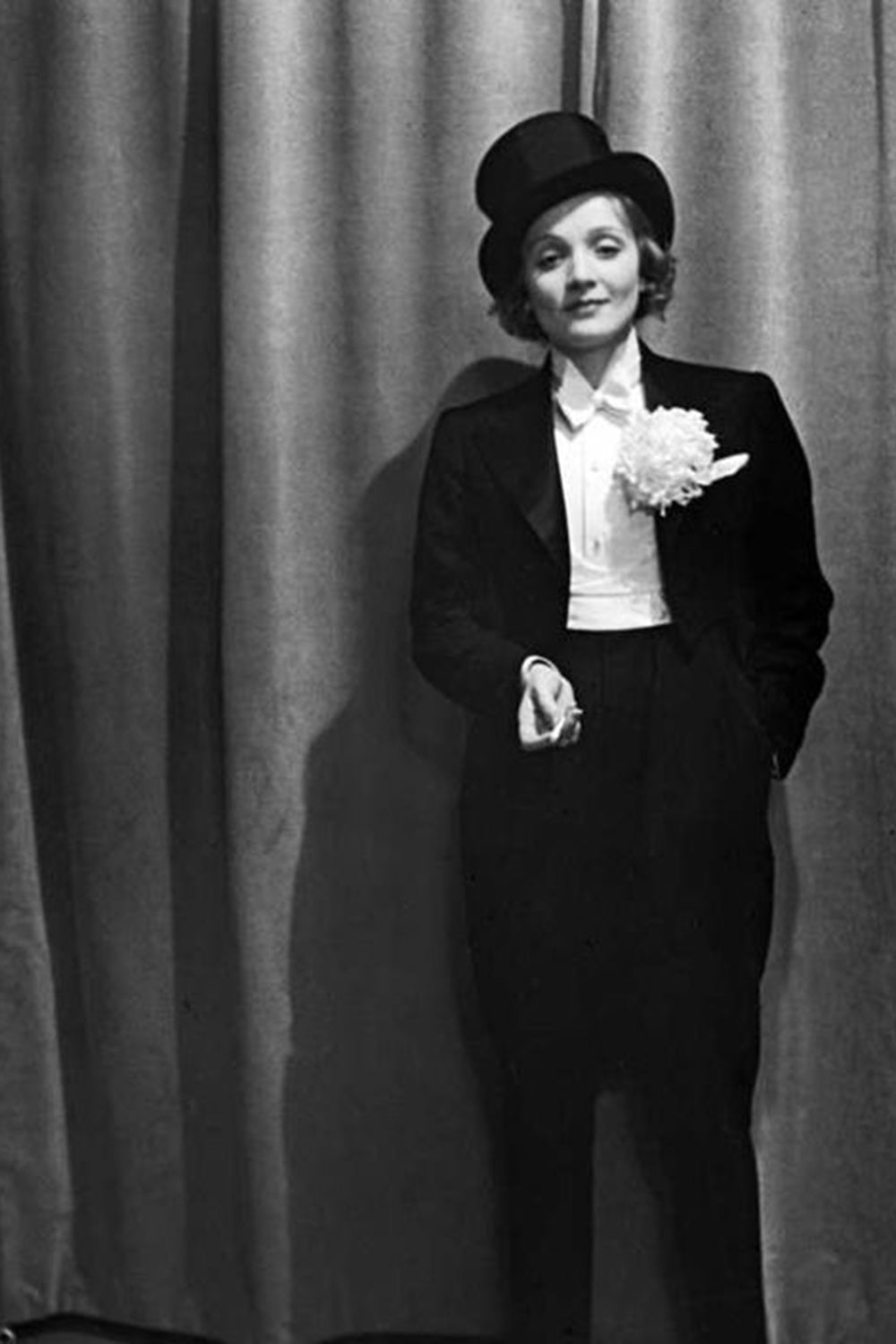
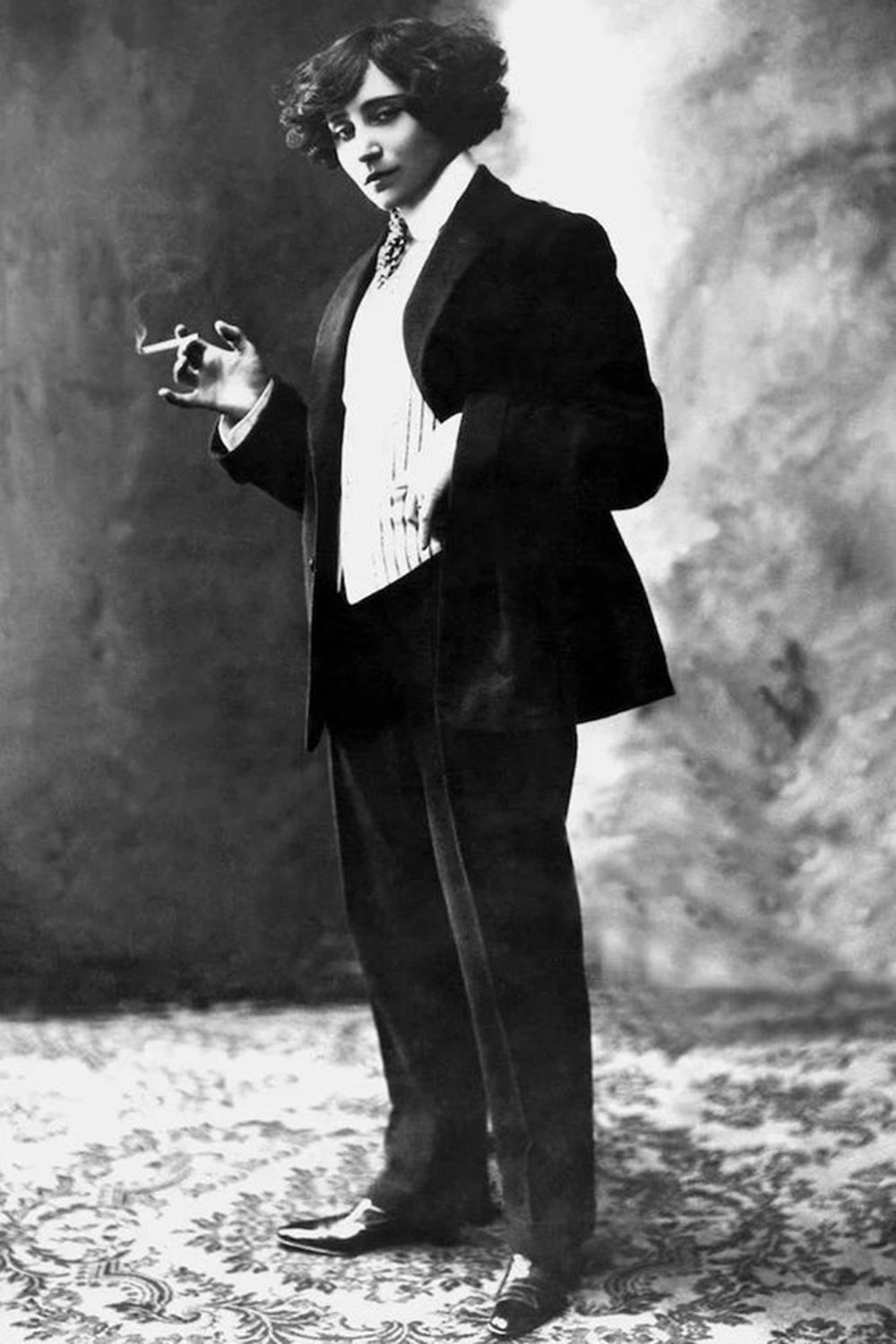
1960s: The women’s tuxedo goes from runway to street
It wasn’t until 1966 that the tuxedo jacket was truly democratized in women’s fashion, during a time when women were still often forbidden from wearing pants. Without a dress or skirt, women could be denied entry to banks, hotels, or upscale restaurants.
That same year, Yves Saint Laurent unveiled his women’s tuxedo in his Fall-Winter 1966 collection. While critics and buyers were initially unimpressed, the tuxedo jacket quickly won over clients at his first ready-to-wear boutique on Rue de Tournon, the now-iconic Saint Laurent Rive Gauche store.
The tuxedo became a symbol of female power, immortalized in 1975 by Helmut Newton in a now-iconic photograph.
In 2002, Yves Saint Laurent celebrated the tuxedo one last time during his final retrospective runway show, marking 40 years of creation for his namesake house. The show ended with a series of tuxedos worn by icons like Laetitia Casta and Catherine Deneuve.
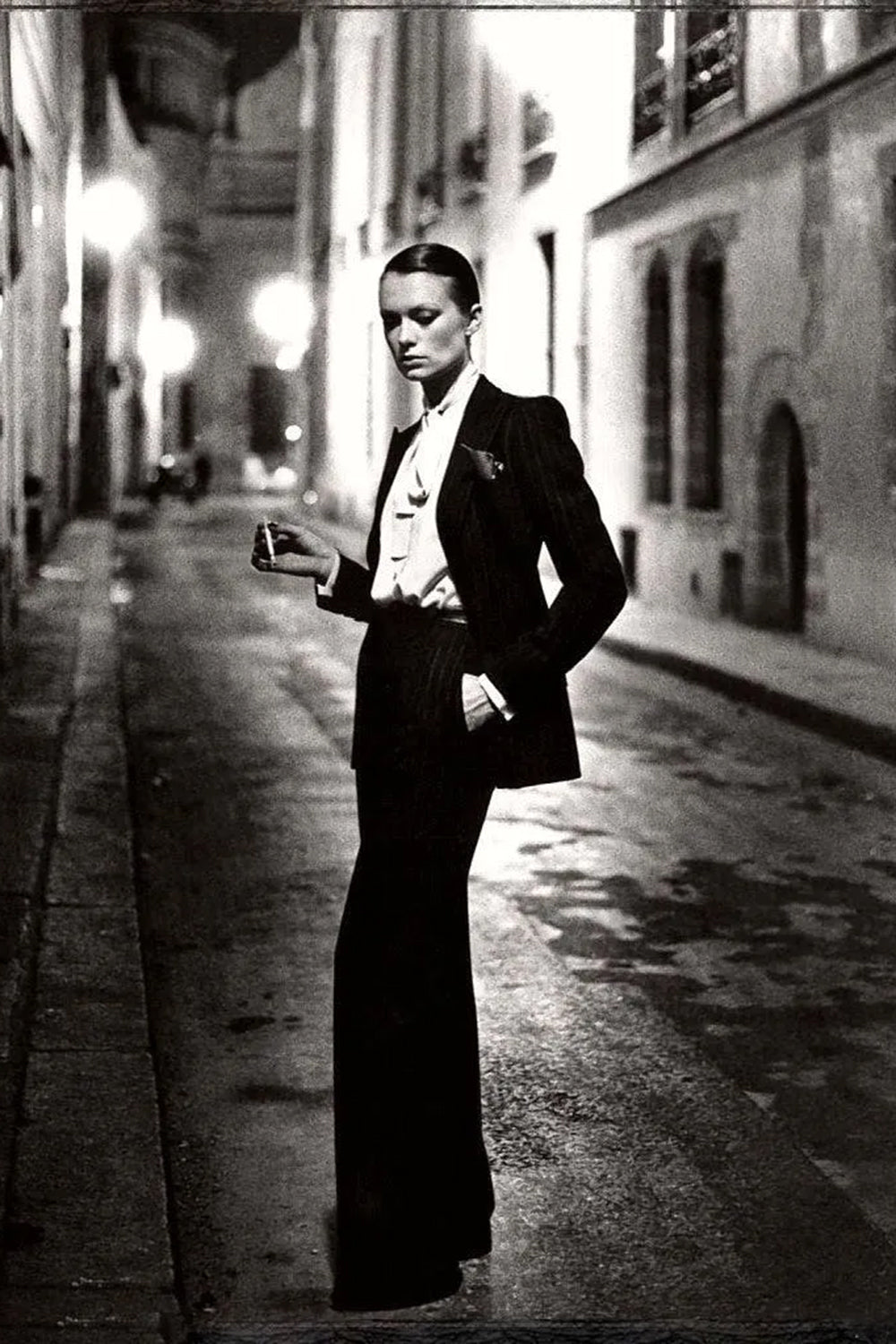
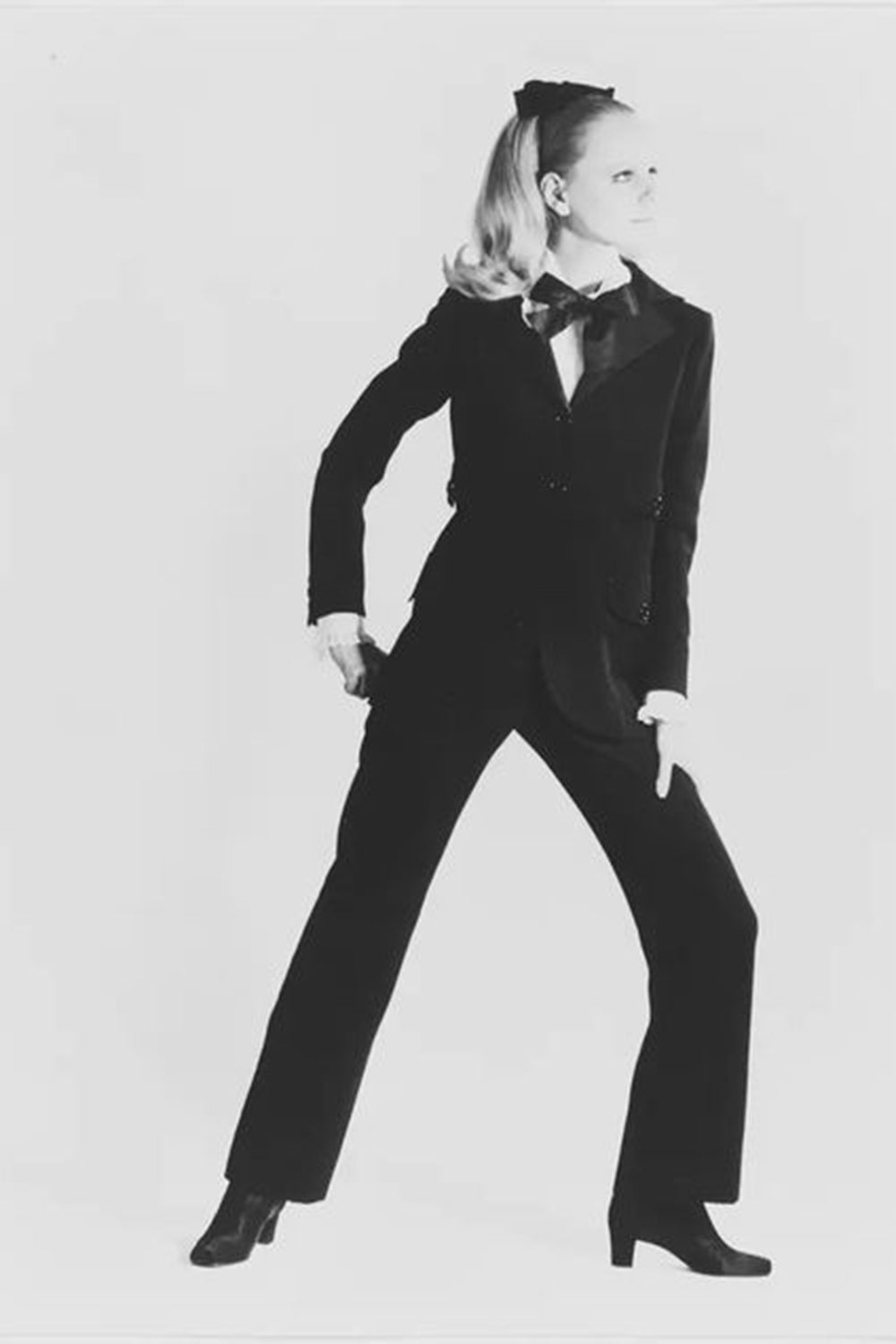
The tuxedo jacket today
Traditionally made in wool barathea with a silk satin lapel, the tuxedo jacket is most often found in black or midnight blue. Since Edward VII transformed it from a smoking room garment into formalwear, the design has changed little: classic elements include a shawl collar and trousers with a wide satin waistband.
However, the way it is worn has evolved dramatically, from men’s evening attire to a versatile women’s piece. Once strictly codified, the tuxedo jacket is now paired just as easily with boyfriend jeans, a t-shirt, and sneakers.

